
Getty Images/age fotostock RM
Veracruz City
Veracruz, like all great port cities, is an unholy mélange of grime, romance and melted-down cultures. Conceived in 1519 and due to celebrate its 500th birthday in 2019, this is Mexico’s oldest European-founded settlement. But usurped by subsequent inland cities, it’s neither the nation's most historic nor its most visually striking. Countless sackings by the French, Spanish and North Americans have siphoned off the prettiest buildings, leaving a motley patchwork of working docks and questionable hybrid architecture, punctuated by the odd stray colonial masterpiece. But Veracruz' beauty is in its grit rather than its grandiosity. A carefree spirit reigns in the zócalo (main square) most evenings, where the primary preoccupation is who to cajole into a danzón (traditional couples dance), and there are some decent beaches in the southern part of the city.

Leave the planning to a local expert
Experience the real Veracruz City. Let a local expert handle the planning for you.
Attractions
Must-see attractions.
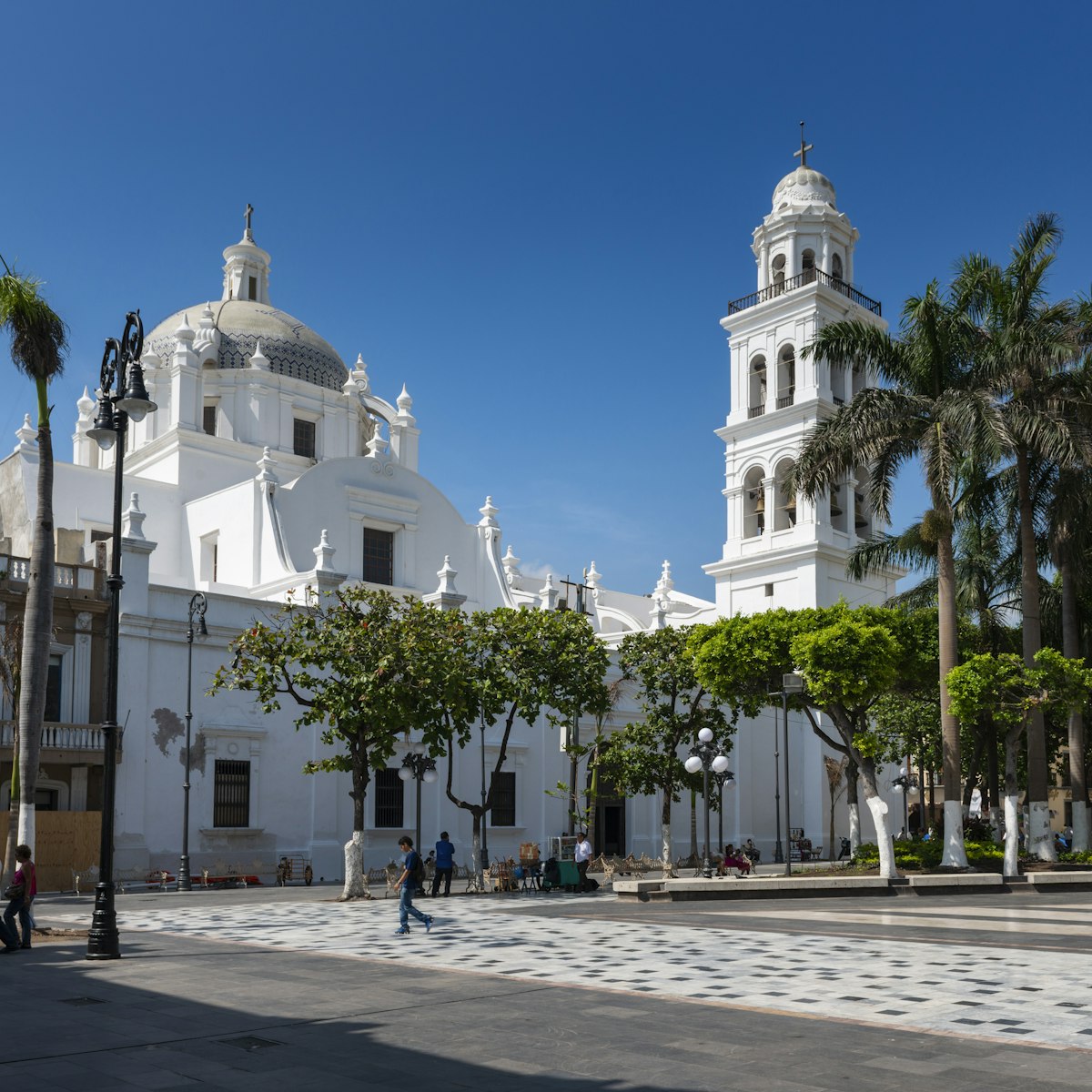
Any exploration of Veracruz has to begin with its zócalo (also called the Plaza de Armas and Plaza Lerdo), the city’s unofficial outdoor ‘stage’ where…

Museo Histórico Naval
Occupying a former naval academy, this high-tech museum offers a titanic lesson in Mexico’s maritime heritage, with plenty of interactive displays and an…

San Juan de Ulúa
The city's colonial fortress is almost hidden amid the container ships and cranes across the harbor. The central part of the fortress was a prison, and a…

Acuario de Veracruz
Allegedly the best of its kind in Latin America, this aquarium does a good job of showcasing the denizens of the Gulf of Mexico, as well as fishy oddities…

Faro Carranza
Facing the waterfront on the malecón, this early 20th century building holds a lighthouse and navy offices guarded by a large statue of Venustiano…

Centro Cultural La Atarazana
This colonial-era warehouse has been beautifully converted into an exhibition space and sports a striking mural by Melchor Perado. Worthwhile temporary…

Instituto Veracruzano de Cultura
A converted church and cloister house some excellent temporary exhibitions as well as works by local contemporary artists.

Museo de la Ciudad de Veracruz
Housed in a charming colonial-era building, this museum recounts Veracruz’s history from the pre-Hispanic era. Standout exhibits include some Totonaca and…
Plan with a local
Experience the real Mexico
Let a local expert craft your dream trip.
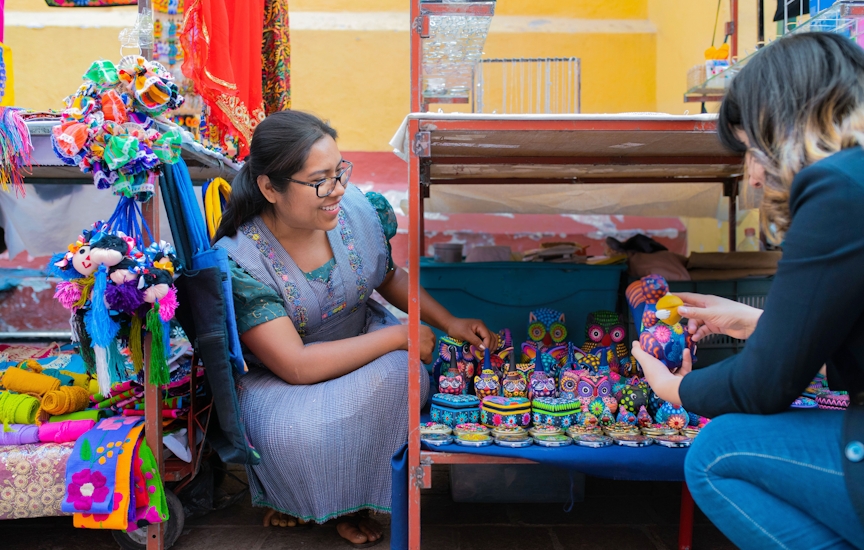
in partnership with getyourguide
Book popular activities in Veracruz City
Purchase our award-winning guidebooks.
Get to the heart of Veracruz City with one of our in-depth, award-winning guidebooks, covering maps, itineraries, and expert guidance.
Explore Veracruz
Plan your trip to veracruz: best of veracruz tourism.
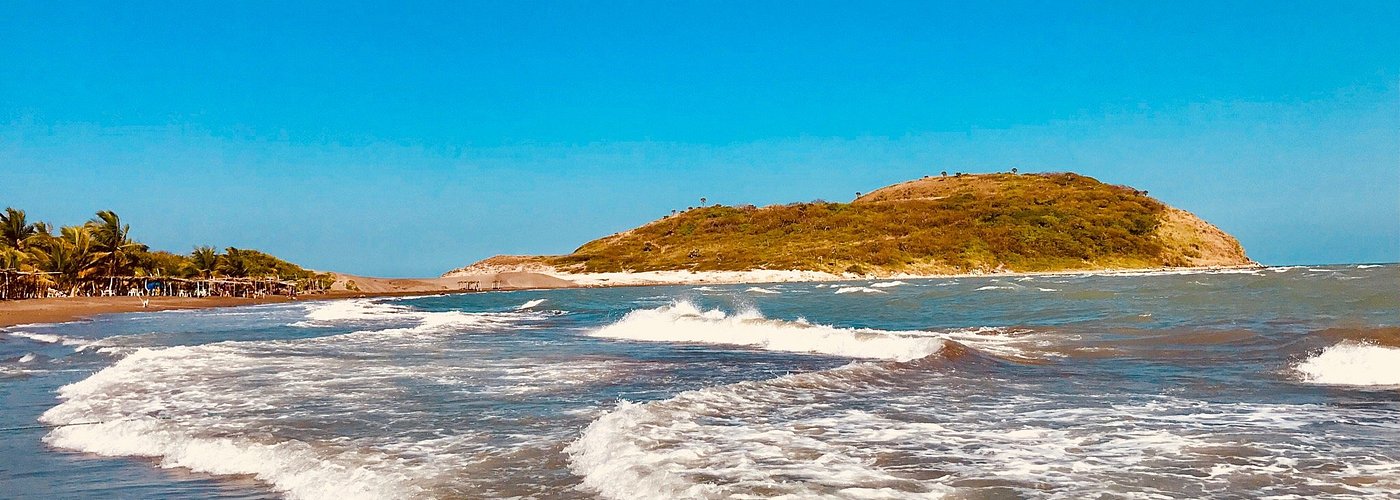
Discover the best of Mexico with Meliá

Essential Veracruz
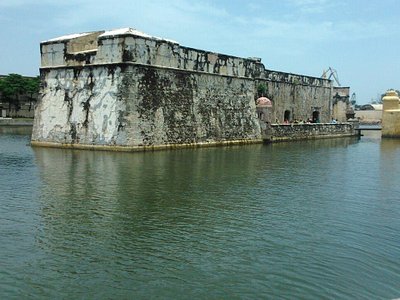
Veracruz Is Great For
The great outdoors.
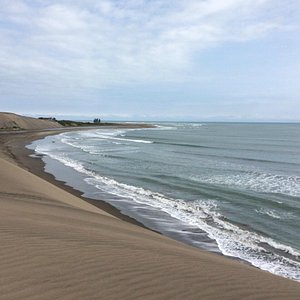
- Grand Fiesta Americana Veracruz
- Emporio Veracruz
- DoubleTree by Hilton Hotel Veracruz
- Xka·n Hotel Boutique
- Gran Hotel Diligencias
- Villa Rica Mocambo
- La Parroquia de Veracruz
- Restaurante Condimento
- Mariscos Villa Rica, Costa de Oro
- Costa Esmeralda
- Chachalacas Beach
- Veracruz Carnival
- San Juan de Ulua
- Magic Town - Papantla And Tajin In Veracruz
- Antigua-Cempoala and Quiahuiztlan Archaeological Day Trip
- Panoramic Sightseeing Tour of Veracruz
- Aquatico Inbursa Waterpark: Veracruz - Ticket
- Magic Town - Coatepec, Xico And Xalapa In Veracruz

Touropia Travel
Discover the World
10 Best Places to Visit in Veracruz, Mexico
By Alex Schultz · Last updated on November 2, 2023
Often overlooked by tourists to the country, the coastal state of Veracruz has a wealth of hidden gems for you to discover, with charming colonial towns and awe-inspiring archaeological sites tucked away amongst breathtakingly beautiful landscapes. Lying alongside the glimmering Gulf of Mexico, it was here in Veracruz that the Spanish founded their first settlements and attempted to conquer the Aztecs.
There are lots of interesting historical sights and cultural landmarks to be found in picturesque towns such as Tlacotalpan and La Antigua, while the mesmerizing Mesoamerican ruins at La Tajin count among the most impressive in the country.
With the towering snowcapped Orizaba also on show – Mexico’s highest mountain – and beautiful beaches along the Gulf for you to check out; Veracruz has a lot to offer. Discover this unknown region of Mexico with our list of the best places to visit in Veracruz.
Map of Veracruz, Mexico
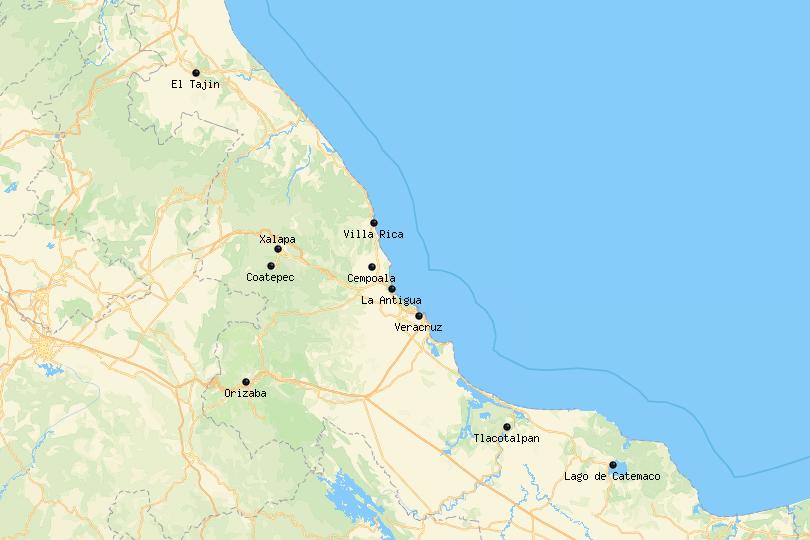
10. Coatepec [SEE MAP]
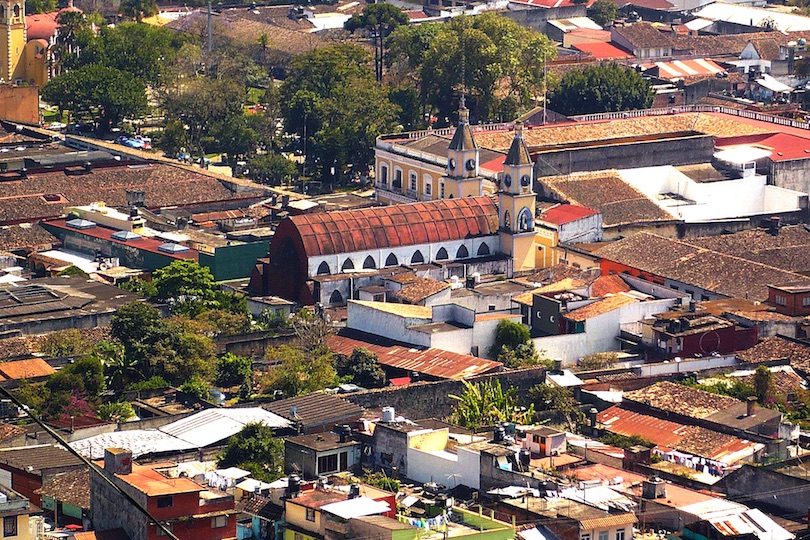
Nestled in the foothills of the Sierra Madre, the laidback town of Coatepec is a lovely place to visit that is known for one thing and one thing only – coffee. Surrounded by endless farms, coffee plantations, and cloud forests, the town has long produced some of the best coffee in the country, with ‘La Vereda’ and ‘Bola de Oro’ being among the most popular.
As such, no visit to Coatepec can ever be complete without trying at least a couple of its famous brews, and there are loads of places around town where you can grab a cup or two.
While its coffee is undeniably delicious, Coatepec actually has much more to offer. The center of town is full of magnificent old colonial buildings, and lots of restaurants and bars sell traditional local fare. The best time of year to visit is in September when the whole town springs to life to celebrate San Jeronimo, its patron saint.
9. Villa Rica [SEE MAP]
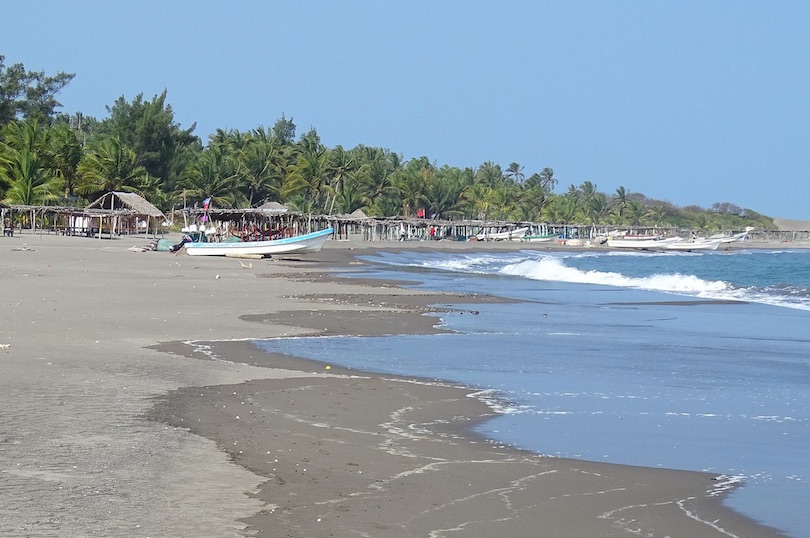
Nowadays a small, sleepy fishing village, it was at Villa Rica that Hernan Cortes, the famous Spanish explorer, established the first European settlement in the Americas north of Panama , all the way back in 1519. Meaning ‘Rich Village,’ Villa Rica was named after all the gold the Spanish found in the area.
While the dusty remains of some buildings constructed by Cortes can still be seen in town, within five years of its founding, the town had been relocated to what is now the bustling port city of Veracruz. Since then, time and history have passed Villa Rica by, and most people now visit for its lovely beach and laidback vibe.
8. Orizaba [SEE MAP]
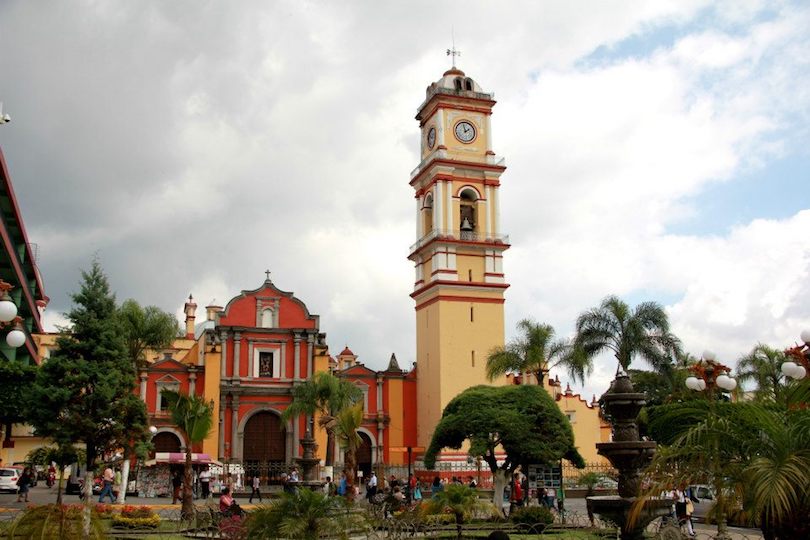
Designated as one of Mexico’s pueblos magicos – or magical towns – by the country’s tourism board, Orizaba is a delight to visit, with historical sights, cultural attractions, and breathtaking nature all on offer. Set in a scenic spot in a valley high in the mountains, Orizaba is very attractive, with lovely parks surrounding its colonial center and a lazy river meandering through town.
Besides a brilliant art museum boasting a large collection of Diego Rivera paintings, the undoubted highlight is the majestic art nouveau architecture of the Iron Palace that was built by Gustave Eiffel himself.
The town also has lots of great cafes and restaurants scattered here and there, with plenty of delicious local fare for you to try out. While visiting Orizaba, be sure to take an exhilarating cable car ride to the top of Cerro Borrego, which offers up fantastic views of the town below and the awe-inspiring Pico de Orizaba – the country’s highest mountain.
7. Cempoala [SEE MAP]
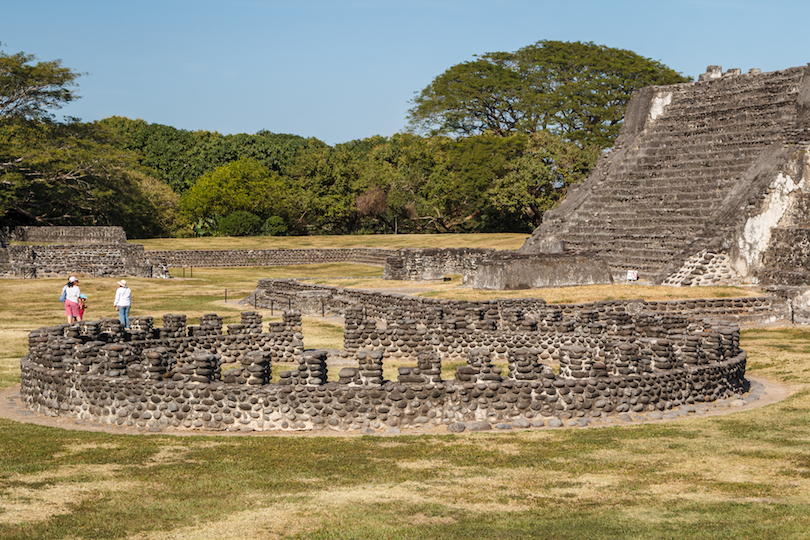
Home to the crumbling ruins of several vast fortresses, squares, and temples, the Mesoamerican archaeological site of Cempoala is fascinating to wander around, and history lovers will delight at the elegant architecture. Founded around 1,500 years before the arrival of the Spanish, Cempoala was once a significant settlement; around 25-30,000 people would have lived there, and it was even the capital of Totonocapan for a while.
Defeated by Aztec armies in the 15th century, Cempoala slowly declined, so all we can see today are the remains of a once flourishing city. The most impressive on show are the Templo del Sol – or Great Pyramid – and the interesting designs and ornamentation found on the sides of El Pimiento and Templo Las Caritas.
6. Lago de Catemaco [SEE MAP]
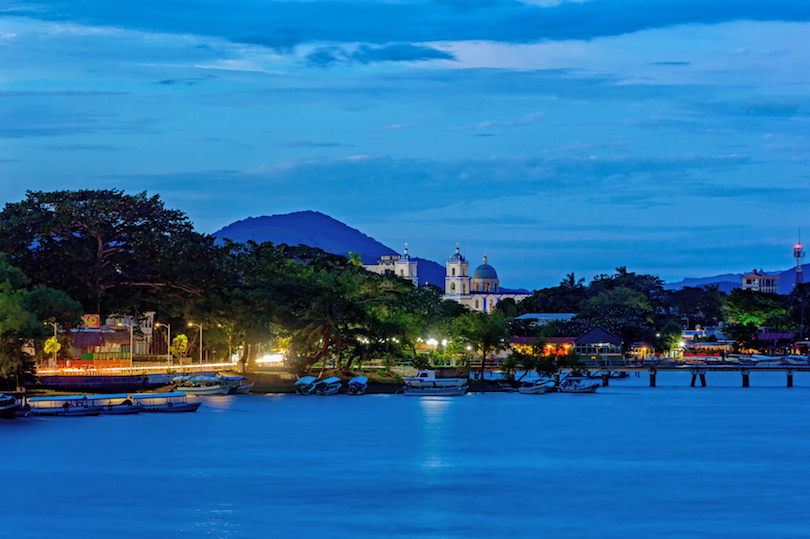
Located at the heart of the Sierra de Los Tuxtlas – a mountainous belt that lies right next to the Gulf of Mexico – the glistening Lago de Catemaco is a great place to head if you want to kick back and relax. There are lots of pristine beaches and fun watersports for you to check out.
Ringed by gently rolling hills, the large freshwater lake is perfect for swimming in; many people take boat trips out to the small, isolated islands that dot its waters, with some of them home to different species of monkey.
It is well worth staying a few days at the sleepy lakeside town of Catemaco, as the area surrounding the lake has lots of beautiful rivers, waterfalls, and mountains for you to check out, and there is some fantastic birdwatching to be had.
5. La Antigua [SEE MAP]
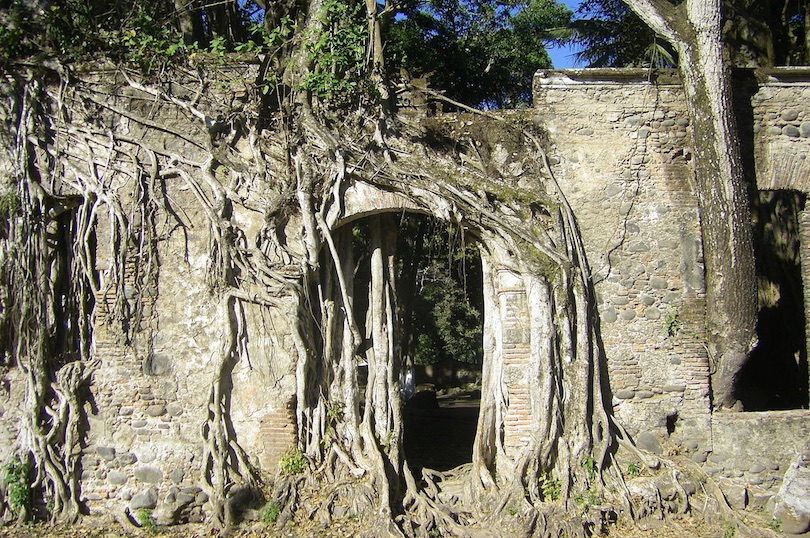
The second oldest Spanish settlement in the country, La Antigua was founded by Hernan Cortes all the way back in 1525. The crumbling, vine-covered ‘Casa de Cortes’ that dates to his time is now one of the town’s main attractions. A very peaceful and pleasant place to spend some time, La Antigua’s cobbled streets are fantastic for getting lost in, and stopping off at one of the excellent seafood restaurants is simply a must.
The other main sight in town is the Ermita del Rosario church, which is widely considered to be the oldest Spanish-built structure in the Americas. Other than that, there is not all that much to do in La Antigua besides taking a relaxing cruise down the Rio Antigua and lazily watch the world go by.
4. Xalapa [SEE MAP]
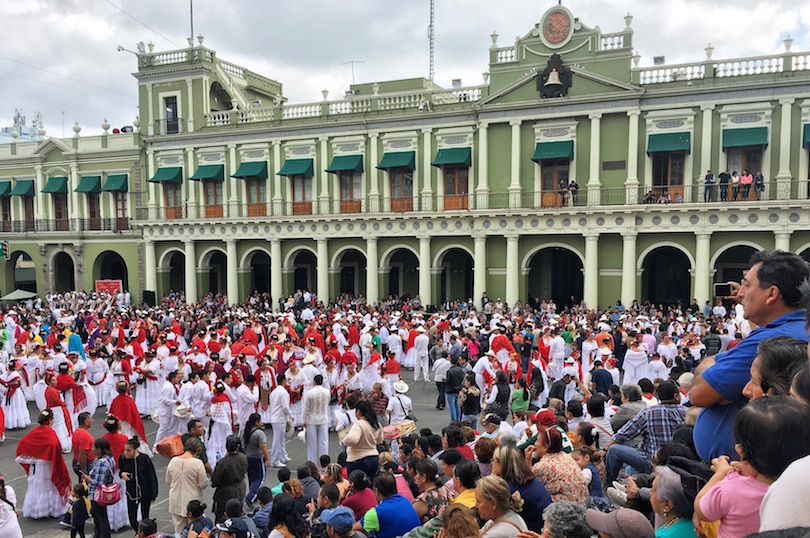
Tucked away in the highlands in the interior of the state, Xalapa, the capital city of Veracruz, has a vivacious and youthful feel to it, thanks to its large student population. Its universities have long had a profound influence on the city, and its arts and culture scene is thriving due to its many theaters, museums, and bookshops.
Nightlife is great to experience in Xalapa too, with lots of trendy bars and nightclubs for you to check out. Besides the lovely colonial architecture on show in the center of town, the main attraction is the wonderful anthropological museum that hosts a huge collection of Mesoamerican artifacts.
3. Tlacotalpan [SEE MAP]
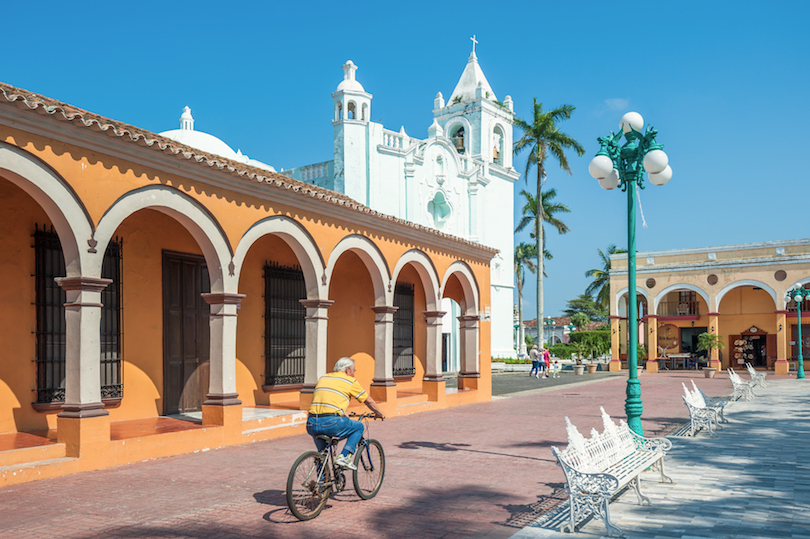
Lying on the north bank of the Rio Papaloapan, Tlacotalpan is full of beautiful, colonial-era architecture; it is not without reason that it is also known as the ‘Pearl of the Papaloapan.’ Once an important river port, riches flowed into Tlacotalpan and funded the building of all the magnificent buildings we see before us today.
Painted in an eclectic mix of blues, pinks, yellows, and oranges, the colonial buildings are beautiful to behold, with life in the peaceful town revolving around its two main plazas of Parque Hidalgo and Plaza Zaragoza. As there is not all that much to do in Tlacotalpan, it’s best to just bask in the ambiance and wander around town, taking in all the fantastic sights.
2. Veracruz [SEE MAP]
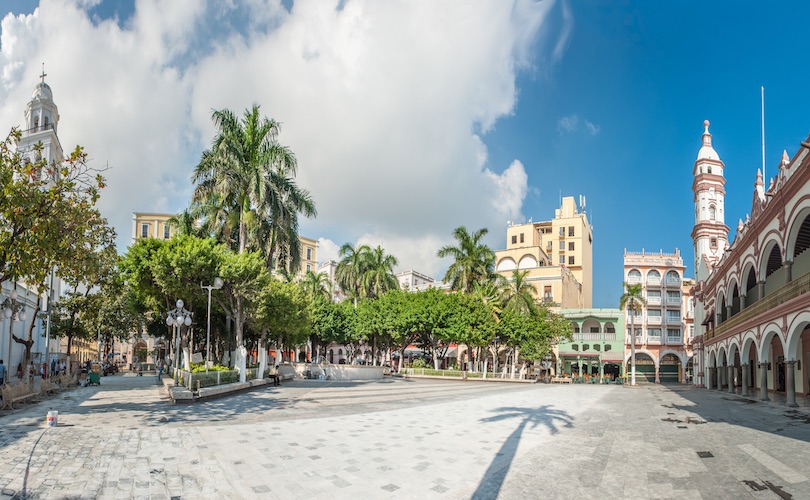
Known as ‘Puerto’ to locals, the bustling city of Veracruz is home to Mexico’s largest and most important port; as such, it has long attracted people to its shores. Due to this, the city exhibits a dazzling array of different cultures. This intoxicating mix is best experienced through its cuisine and music scene, which showcases indigenous, Spanish, and Afro-Cuban influences.
Famed for its pounding nightlife, Veracruz is loads of fun to visit. February is a particularly good time to stop by as its raucous carnival celebrations bring the city to a standstill. Founded by the Spanish all the way back in the early 16th century, Veracruz has some lovely colonial-era architecture on show, with its two historic forts amongst its many highlights. Ambling peacefully along its harborside boardwalk is a great way to take in the sights and sounds of the city.
1. El Tajin [SEE MAP]
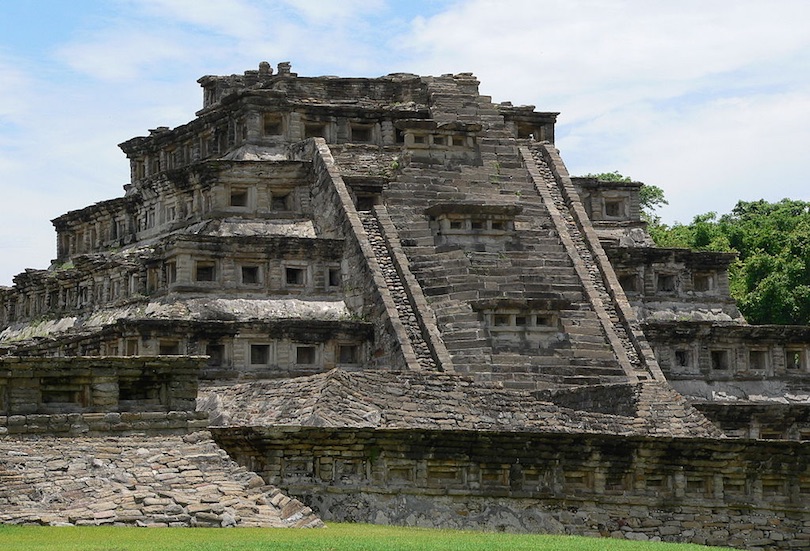
The breathtaking and expansive ruins of El Tajin are among the most well-preserved and impressive in Mesoamerica, and no visit to Veracruz can ever be complete without exploring the amazing archaeological site. Once one of the largest cities in the region, El Tajin flourished for centuries, with palaces, ball courts, and temples springing up – until the city’s fortunes waned around the year 1200.
Wandering around the crumbling ruins that tower over you is a mesmerizing experience as you follow in the footsteps of the people who once lived here; the vast Pyramid of the Niches is the undoubted highlight. For history lovers interested in learning more about El Tajin and its many beautiful buildings, it is a good idea to hire a tour guide who can explain all the elegant designs and motifs you come across.
Share this post:
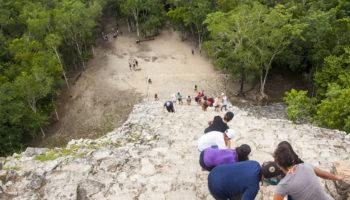
12 Most Fascinating Mayan Ruins in Mexico
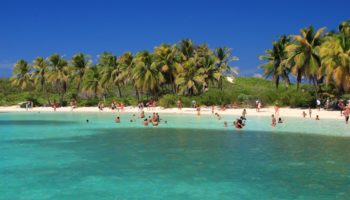
5 Stunning Islands Near Cancun
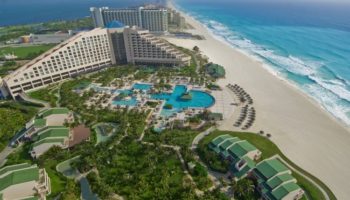
10 Best All-Inclusive Resorts in Mexico
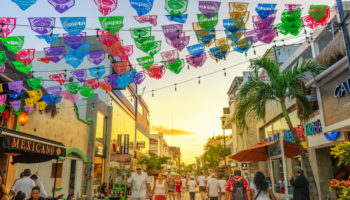
14 Best Things to Do in Playa del Carmen, Mexico
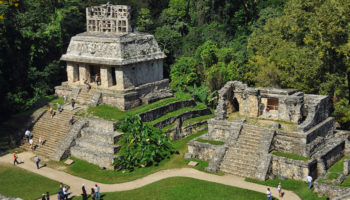
10 Best Places to Visit in Chiapas, Mexico
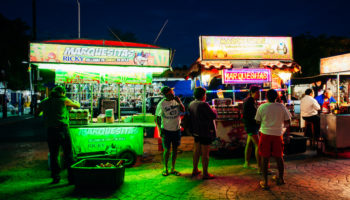
23 Best Things to do in Cancun, Mexico
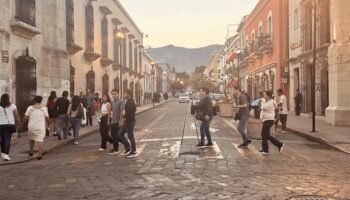
How to Spend One Day in Oaxaca
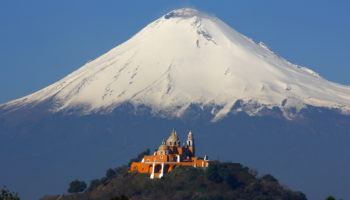
12 Most Amazing Volcanoes in Mexico
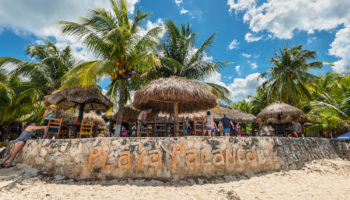
18 Best Things to do in Cozumel, Mexico
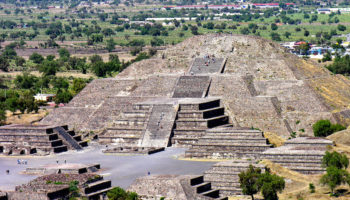
7 Most Amazing Pyramids in Mexico
Reader interactions, leave a reply cancel reply.
Your email address will not be published. Required fields are marked *
This site uses Akismet to reduce spam. Learn how your comment data is processed .
Veracruz Travel Guide
Mexico › Veracruz Updated: March 3, 2022
- Best Places to Stay in Mexico City
- Best Places to Stay in Guadalajara
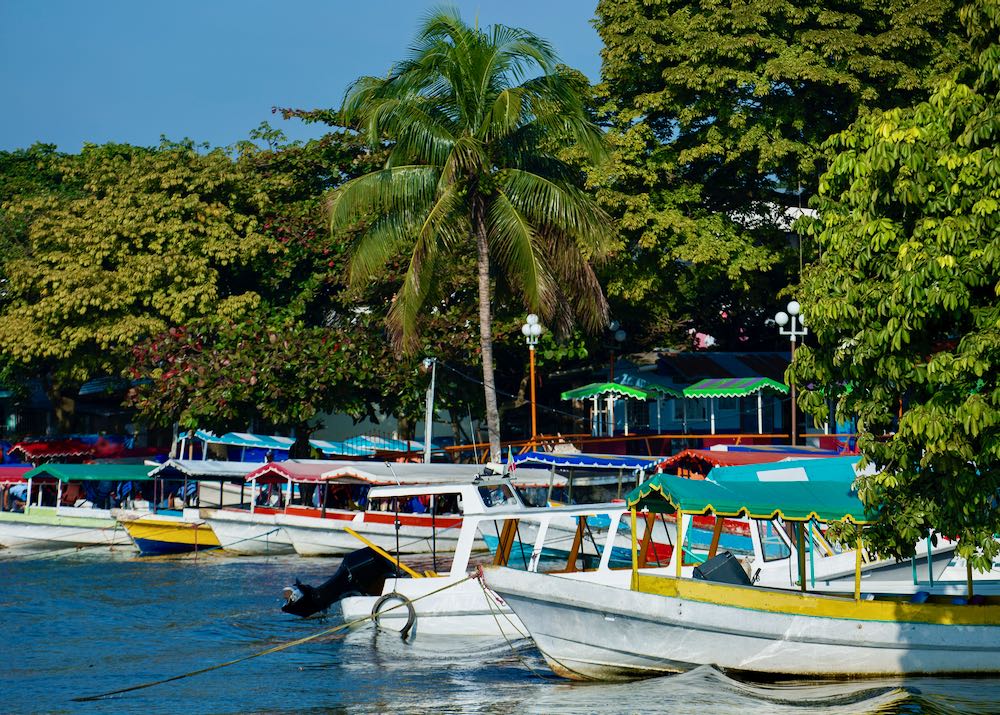
Veracruz is a major port and popular resort city on the eastern, Gulf Coast of Mexico, and one of our absolute favorite places to go in the country. Veracruz is best known for its rich history, tropical setting, charming old town, raucous nightlife, and the biggest aquarium in Latin America.
Frequently Asked Questions about Veracruz
Where is veracruz.
Veracruz is a port on the Gulf of Mexico and the largest city in the Mexican state of Veracruz. It lies around 90 km southeast of the state capital Xalapa, 420 km east of Mexico City, and 270 km east of Puebla. Non-stop flights to Veracruz take just 55 minutes from Mexico City, 1 hour 35 minutes from Monterrey, 2 hours 15 minutes from Houston, and 3 hours 20 minutes from Tijuana.
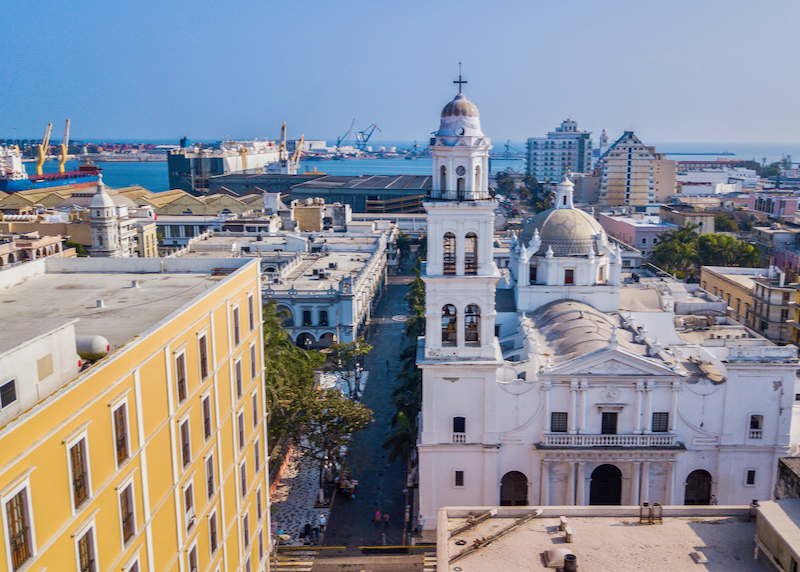
The historic downtown area of the port city of Heroica.
How big is Veracruz?
Veracruz has a greater metro population of just over 700,000. The city and busiest resort area stretches some 20km north to south along the Gulf of Mexico, from the port to the Jamapa River.
What is the history of Veracruz?
Veracruz (officially “Heroica Veracruz”), is one of the most historic cities in Mexico. Once part of the Aztec Empire, the city was the first to be founded by the Spanish in Mexico, just after Hernán Cortés’ fateful arrival in 1519. Cortés and his conquistadors waded ashore and made camp here, but the city was relocated up the coast a couple of times before settling on its current location in 1589. Veracruz subsequently became a crucial port city, the main link between Mexico and Spain – as a consequence the English, Dutch, and French frequently attacked its shipping throughout the sixteenth and seventeenth centuries. In the Mexican War of Independence, Veracruz was the last part of the country held by the Spanish, and in the Mexican–American War (1846–48), US troops occupied the city and marched on to capture the capital. In 1861 the French invaded Mexico through the port of Veracruz, and in 1914 US troops returned to occupy the city during the Mexican Revolution. Since then, the city has flourished as Mexico’s biggest port and a key petroleum-refining hub (there are major oil fields offshore).
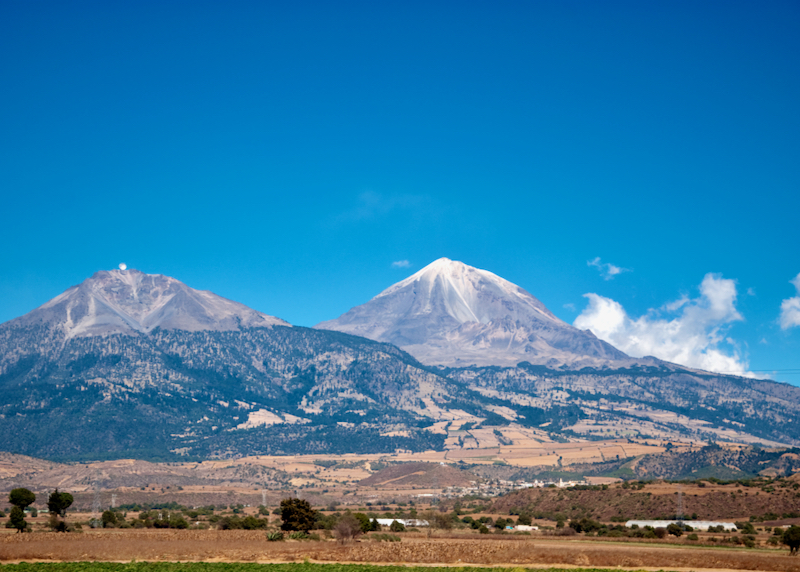
‘Pico de Orizaba’ is the tallest mountain in Mexico and 3rd tallest in North America.
How do I get to Veracruz?
Veracruz is connected to the US by three weekly non-stop flights from Houston on United, but its airport otherwise serves Mexican domestic destinations only; Cancún, Guadalajara, Mexico City, and Tijuana among them. All other flights from Canada, the US, and Europe route through Houston or Mexico City.
Veracruz airport is about 10km south of the city; it’s simple and convenient to take a taxi from here into the center (around 300 pesos; pay in advance at the taxi desk in the terminal).
Within Mexico, first-class long-distance buses are an economical and comfortable alternative to flying – buses to Veracruz from Puebla (3 hours) and Mexico City (5 hours 30 minutes) operate hourly. Veracruz bus station is about 3km from the city center. Arriving there it’s best to take a taxi – these follow a fixed-rate system, with the current rates displayed at the exit. Buy a ticket from the dedicated booth before getting in (around 45 to 50 pesos).
Can I use Uber in Veracruz?
Currently Uber does not operate in Veracruz.
Can I drive to Veracruz?
Driving down to Veracruz from the US border is relatively straightforward – the main highways are good, and virtually empty outside the towns. However, the Mexican border states of Nuevo León and Tamaulipas have been affected by drug cartel violence – driving at night is definitely a bad idea. Check the latest travel advisories at travel.state.gov or ask the hotel. Drivers also need a Mexican “Temporary Importation of Vehicle Permit”.
From Brownsville, Texas the drive is around 590 miles (950 km) and takes around 13 hours non-stop.
Renting a car is much easier to do on the Mexican side of the border, as taking US rental vehicles into Mexico comes with all sorts of restrictions.
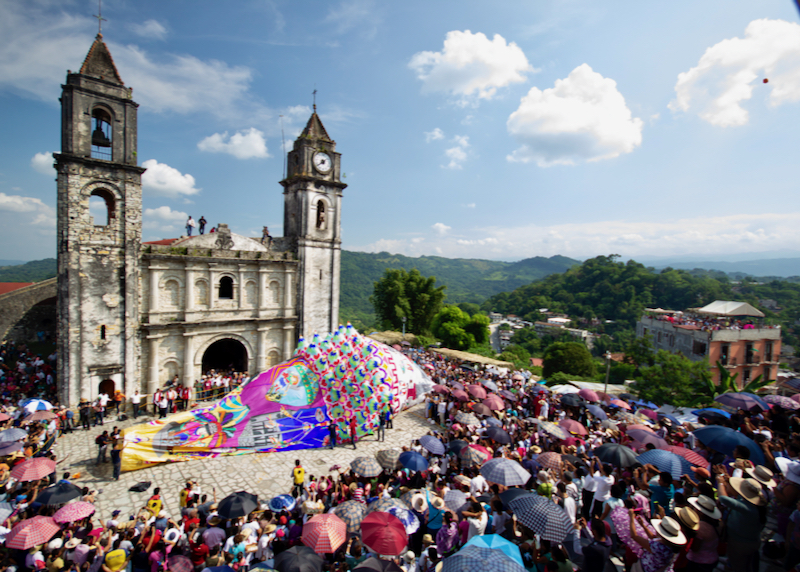
The paper balloon festival in front of the Church of San Miguel Arcangel.
Do I need a car in Veracruz?
Most of the historic center of Veracruz can be explored on foot; for the beaches and attractions further afield it’s easy and cheap to take a taxi or a bus (navigating the congested roads of Veracruz can be a real headache in any case). Taxis are easy to hail on the street (hotels will also call them) – always fix the price in advance before getting in (there are no meters). The minimum fare is 35 pesos, but trips in the center will rarely top 50 pesos. Buses for the beaches (labeled “Boca del Río”, “Playas” or “Mocambo”) run along Zaragoza Street close to the zócalo (main square). Local buses charge a flat fare of 9 pesos (expected to increase by a few pesos in the coming year).
When is the best time to go to Veracruz?
During the dry season, from November to May – Veracruz is a tropical city but temperatures at this time are more comfortable and less humid. To get the best hotel rates and to avoid the crowds, skip Veracruz during Christmas, Easter, or the Veracruz Carnival (Feb/March), when the city is mobbed by domestic tourists. The hot, humid wet season runs from June to October – hotel rates can be cheaper, but exploring the city is miserable at this time.
What are the main resort areas in Veracruz?
The historic city center of Veracruz (“Centro Histórico”) fronts the port and marina, and most of the resort hotels lie along the beaches further south, linked by Bulevar María Ávila Camacho. The closest beaches to the center are Playa Villa del Mar and neighboring Playa Hornos and Playa Martí: it’s not great for swimming here (the water is not clean), but there is plenty of seafood and boat trips are offered to Cancuncito and the Isla de Sacrificios, just offshore. Further south, Costa de Oro is home to several major resorts, though the beaches here are also fairly scrappy. Playa Mocambo is much better, a kilometer south, with beach bars, a small water park, and lots of decent hotels. At the end of the strip, 3.5 km south of Mocambo, lies Boca del Río at the mouth of the River Jamapa. There are more long, grey-sand beaches here, but the main attractions are the town’s riverfront seafood restaurants and boat trips upstream into the jungle.
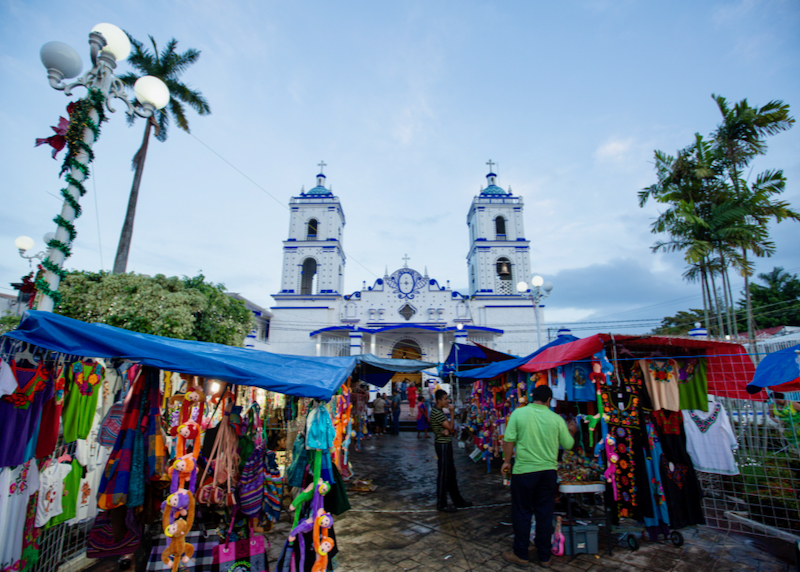
Market on the plaza in front of the Basílica de Nuestra Señora del Carmen in Catemoc.
What are the best beaches in Veracruz?
Our favorite beach in Veracruz is Playa Mocambo – it’s by far the nicest stretch of sand and is the best for swimming. Playa Martí is closer to the center and is a fun spot to watch local beach volleyball and soccer matches. Playa Hornos is the best place for watersports.
Where should I stay in Veracruz?
We would recommend somewhere in the Old Center of Veracruz, the “Centro Histórico”, to make the most of the nightlife, sights, best restaurants and attractions. While it’s true that the hotels here tend to be more old-fashioned, the resort hotels along the beaches are quite a long way from the action – and Veracruz isn’t known for its beaches in any case (they are not Mexico’s best). Staying in the city center it’s relatively easy to take a taxi or bus out to the beaches for the day. On the other hand, those that prefer a few hours of sightseeing followed by every afternoon on the beach may want to check out the resorts in the coastal “hotel zone”.
In the city center, we like the Hotel Emporio , which combines a central location with excellent amenities and a pool overlooking the harbor. The Hotel Veracruz Centro Histórico and Hotel Baluarte are other excellent choices in the center. Hotel Indigo Boca del Rio is a chic, contemporary option close to Playa Mocambo, as is the Collection O Hotel Mocambo , a beautifully renovated hotel from 1932.
What are the best things to do in Veracruz?
Veracruz has an energy and cultural identity unlike any other Mexican resort city.
The old heart of the city is its main plaza, known as the Zócalo. Dominated by the city’s beautiful cathedral, the Zócalo is the perfect place to sip local mint juleps and listen to marimba bands (based around a giant wooden xylophone), as well as mariachi and norteño music. Similarly lively in the evenings, the malecón (harbourfront promenade) features street vendors, buskers, and “dancing” fountains. The city’s biggest conventional attraction is the Acuario de Veracruz , the huge aquarium, though there are also plenty of historic sights. Get oriented at the Museo de la Ciudad , a museum that chronicles the history of the city, and the Museo Histórico Naval , which charts Mexican naval history from the Mesoamerican period to the modern-day. It’s also possible to visit the city’s once-formidable Spanish fortifications: the 17th-century Baluarte de Santiago and the ruined Castillo de San Juan de Ulúa , complete with creepy dungeon.
Though the beaches of Veracruz (see above) are not the best in Mexico, they can make for a relaxing day in the sun. Snorkeling and diving trips out to the nearby islands are also fun: Cancuncito is a tiny sandbank in crystal-clear waters, while the Isla de Sacrificios is off-limits but surrounded by enticing snorkeling sites, and La Blanquilla, Isla Verde, and Anegada de Adentro are all reef sites just 20 minutes ride from the beach. Recommended operators include Mundo Submarino and Scubaver . Monkey Fish is another excellent operator that can arrange kayaking, paddleboarding, sandboarding, and snorkeling. Armonia Rafting can arrange whitewater rafting in nearby Jalcomulco.
What are the restaurants like in Veracruz?
Veracruz is well-known throughout Mexico for its cuisine, with its signature dish, Huachinango a la Veracruzana (red snapper Veracruz-style), available almost everywhere. Other local specialties include pulpo a la marinera (octopus), arroz a la tumbada (local seafood rice, a bit like paella), empanadas de camarón (shrimp empanadas), and jaiba, a large Gulf crab. The local coffee, fruits, and vanilla are also worth sampling, and all the seafood is fabulous.
Another pleasure in Veracruz is hanging out in its old colonial cafés – always lively and ringing with the sound of spoons clinking against glasses (the traditional way to call for a refill). Gran Café del Portal (Independencia 1187) and Café de la Parroquia (Gómez Farías 34) are the two most famous and our favorite spots to enjoy breakfast. For a treat, we like the contemporary Mexican food at Restaurante Fussion (Av. 1º de Mayo 632).
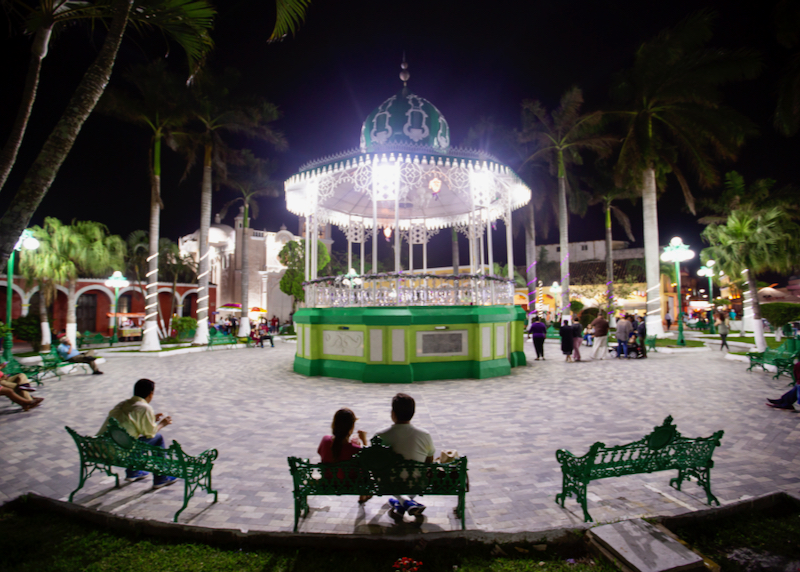
Enjoying an evening on the plaza in Tlacotalpan.
What currency is used in Veracruz?
The Mexican peso (often prefixed with a “$” sign) is the currency of Mexico and Veracruz. Most major shops and restaurants in Veracruz accept credit cards, but it is a good idea to have some peso cash on hand for bus/taxi trips, museum entry, and small purchases like bottled water and snacks. ATMs are easy to find in Veracruz around the junction of Independencia and Benito Juárez.
Is Veracruz expensive?
Hotels in Veracruz are reasonably priced, and food and drink is a good value. All beaches are open to the public and free to visit, buses and taxis are cheap, and budget Airbnb deals are also a viable option.
Is Veracruz safe?
Veracruz has generally avoided the drug violence that has affected other parts of Mexico. Take the usual precautions, especially at night, and keep valuables in room safes. Theft of personal items from beaches does happen – never leave anything of value unattended, even on seemingly empty stretches of sand.
- Cancun – Best Hotels
- Cancun – Family Hotels
- Isla Mujeres – Best Hotels
- Isla Mujeres – Family Hotels
- Los Cabos – Travel Guide
- Los Cabos – Best Hotels
- Los Cabos – Family Hotels
- Mazatlan – Best Hotels
- Mazatlan – Family Hotels
- Playa del Carmen – Best Hotels
- Playa del Carmen – Family Hotels
- Puerto Vallarta – Best Hotels
- Puerto Vallarta – Family Hotels
- Punta de Mita – Best Hotels
- Sayulita – Best Hotels
- Tulum – Best Hotels
- Tulum – Family Hotels
You can also search using these:
Discover Mexico A-Z

- News & Offers
- Mexico Guides
- Mexico Features
- Free eBooks
- Free Guides
Travel Experiences
Trip planning, travel destinations, destination highlights, mexico lifestyles, living & lifestyle, lifestyle planning, real estate, healthcare & wellbeing, leisure assistance, lifestyle assistance, insurance coverages, property assistance, about mexperience, mexico essentials, discover more, experience veracruz.
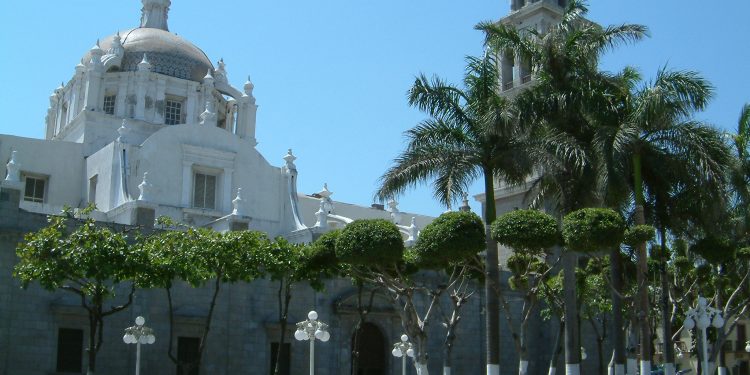
Discover Veracruz
Southeast of Mexico City, on the Gulf Coast, you’ll find the exuberant port city of Veracruz. Hernán Cortés, the Spanish conqueror, first landed here on Good Friday 1519 and, soon after, Veracruz became the first Spanish settlement and base from which the Spaniards explored and eventually conquered Mexico.
Veracruz is an easy-going, friendly and bustling port-city. Locals are known as jarochos, and they have a reputation for partying. Its leisure fame stems from Arican-and Caribbean-influenced music, lively dancing and an annual Carnaval that according to some, rivals Rio and New Orleans.
Three hundred years of Spanish colonial rule also ended in Veracruz, as the Spanish fled to the fort of San Juan de Ulua; once on an island offshore, it’s now connected by a road. The years that followed were not easy ones for Mexico and, again, Veracruz was a key center of historical events. The city’s title: “Four times heroic city of Veracruz” refers to the expelling of the Spanish and three other military triumphs: one against the French and two against the Americans.
The state of Veracruz derives its wealth primarily from the huge amounts of trade and cargo ships docking at the city’s extensive ports; it also has rich, arable lands where fine coffee and tobacco are grown. The country’s oil stocks, drilled from wells beneath Mexico’s Gulf waters, is also managed from here. As a result of these lucrative industries, Veracruz has never striven to become a big tourist attraction; so it’s not as widely known by foreign tourists as other destinations in Mexico.
Veracruz is a coastal city which has a strong and distinctive colonial feel to it. Palm trees line the streets and the zocalo (main plaza) where, at night, Marimba (Afro-Caribbean) music fills the streets and people meet to talk, dine, dance and just watch the world go by.
This city is a hidden gem if you’re looking for an experience which is distinct from the traditional ‘tourist circuit’ of colonial cities. Besides being a place of character, it’s also colorful, lively and easy-going.
Nearby Veracruz you’ll also find one of Mexico’s finest archaeology parks: El Tajin . The state is host to Mexico’s highest volcano, “ Pico de Orizaba “, the second highest volcano in North America. Other adventure tours including mountain climbing, white-water rafting and sports fishing are all easily accessible from here, too.
Veracruz is a surprising city. Away from the traditional tourist trail, it offers a unique experience in Mexico: a relaxed atmosphere with a lively heart and soul. Some people spend their whole vacation here and enjoy the stress-free ambiance; some pass through for a few days as part of a wider travel experience. Either way, a visit to Veracruz will reward you with an enjoyable, fascinating and authentic insight into Mexico.
The high-speed toll road which connects Veracruz to Mexico City (also passing the colonial city of Puebla ), makes Veracruz easily accessible from the capital in addition to regular flights to/from Mexico City and elsewhere.
Key Attractions
Colonial center.
Veracruz’s main plaza, the Plaza de Armas (Plaza of Arms), is situated in the middle of the city; it is a handsome place, featuring palm trees, a colonial fountain and beautiful arches.
The cathedral faces the Plaza de Armas , as does the Palacio Municipal , and various other majestic civil buildings including the Correos y Telegrafos (post office) building and the Aduana Maritima (Maritime Customs) building.
The plaza is also the hub of Veracruz’s social scene, and at night, when the temperature cools, the plaza comes alive with music, dancing and street entertainers.
Acuario de Veracruz
One of Latin America’s largest aquariums is a major attraction in Veracruz. It is host to nearly 25 tanks, some containing saltwater, some containing freshwater. You’ll see species of marine life native to the Gulf of Mexico, including barracudas, sea turtles, manta rays, tiger sharks and manatees. Called simply, El Acuario , you’ll find this on the south-eastern edge of town.
Paseo del Malecon
A visit to Veracruz wouldn’t be complete without a leisurely stroll along the boardwalk. This is a great place to watch the locals as they engage with family and friends. Enjoy some ice cream as well, vendors are everywhere.
Fort at San Juan de Ulua
If you’ve ever watched the late 1980’s film “Romancing the Stone” with Michael Douglas and Kathleen Turner, you’ve already seen parts of this fort (towards the end of the film, in the scenes leading up to the alligator swallowing the jewel).
The fort was built by the Spanish (the original construction began in 1565 and was expanded several times) to protect against pirates and, later, was also a defense against foreign invaders. This fort was also the Spaniard’s last foot-hold on Mexico: the last Spanish troops retreated to here before being finally expelled by the Mexicans circa 1825.
After Mexico’s war of independence, the fort later became a notorious prison, especially during the Porfirio Diaz era . Many of the prisoners sent here never lived to be released, because of the harsh conditions, including tuberculosis and yellow fever that were rampant at that time.
Today, the fort complex has been converted in a museum and is a major tourist attraction in Veracruz. It’s easy to get to and is well worth a visit when you are in Veracruz. For a small admission fee you can wander around the fort and old prison and get a feel for the history that unfolded around its walls. English-speaking guides are on hand and, for a small additional fee, will give you a guided tour which may well include a good dose of folklore in addition to historical facts.
Museums and Art in Veracruz
The Museo de la Ciudad de Veracruz (City Museum) houses excellent displays about the city’s colonial history through to present day.
Originally a Naval Officer’s school, the Museo Naval (Naval Museum) was restored and open in 1997 to record Mexico’s Naval History and Evolution.
Beaches and Diving in Veracruz
The beaches here are not that attractive—you’ll have to travel about 4 miles south of the Veracruz to Playa Macambo to see improvements in the beaches. If you are at Playa Macambo, also be sure to visit Boca del Rio, a fishing village that has some of the best local seafood to be had. What better way to finish off a day at the beach than fresh seafood and a cold drink. For divers, some of the waters in this area have been listed as national parks and, besides the reefs, you’ll also be able to explore some underwater shipwrecks.
Adventure Experiences
Adventure holidays from Veracruz are becoming more and more popular, given the regions excellent natural climate and topography. River rafting and mountaineering are two favorites.
Sports Fishing
Local sports fishing is a popular activity here and is becoming more popular with each passing year.
Getting There & Around
By Air – You can fly to Veracruz from the US and and other points in Mexico including Mexico City and Oaxaca. The international airport is about 5 miles (8 km) south of the city center. Ground transportation is available from the airport into town; buy your tickets from the booth inside the terminal building. For detailed information about flights and flying, see the Mexperience guide to Air Travel in Mexico .
By Bus – You can travel to Veracruz on a luxury bus from Mexico City – the trip takes around 5.5 hours. Veracruz is a major bus hub for the eastern Gulf coast of Mexico and you’ll be able to travel efficiently by bus around Mexico’s entire Gulf region from here if you want to. For detailed information about bus transportation read the Mexperience guide to Bus Travel in Mexico .
By Car – Driving to Veracruz is very fast and efficient using the many high-speed toll roads which connect this region. See additional information about Driving in Mexico and Mexico’s Toll Roads on Mexperience for more details.
Car Rental – To explore Mexico’s colonial towns and cities, consider renting a car for your visit. Having your own car will give you more flexibility than using public transport options and, in some cases, offer you access to places which are otherwise difficult to visit without the use of a car. Read our guide to Car Rental in Mexico to learn what you need to know about car rental in Mexico and connect to the Mexperience Travel Center to reserve your Rental Car .
Taxis – Taxis in most of Mexico’s colonial towns and cities are not metered, so agree your price before you get in. Taxi travel is very affordable in Mexico, in comparison to the USA, Canada and Europe, and so provides a viable means of public transportation in Mexico. Your hotel can arrange taxis for you; some post their rates on a board in the lobby; taxi hotel rates are usually higher than cabs you hail off the street. If you speak Spanish , you will have a distinct advantage and be able to negotiate a price with the driver. For detailed information, read the Mexperience guide to Taxi Travel in Mexico .
Local Buses – City buses run regularly and are a reliable means to see the city. There are also touristic buses (Tranvia La Bamba y La Marimba and Turibus) that hit all the city highlights and also allow you to hop-on and off as you wish.
Veracruz Essentials
Telephone: Connect to the guide about Communications in Mexico on Mexperience for detailed information about keeping in touch and the latest table of national dialing codes.
Exchanging Currency: Banks with ATM machines are found throughout the downtown area of Veracruz; some hotels also have ATMs (additional fees may apply), and you can also find them at the shopping center next door to the World Trade Center in Veracruz. During business hours, they and the local Casas de Cambio will buy traveler’s checks and cash from you as well. For detailed information about exchanging and managing your money, read the Mexperience guide to Money in Mexico .
Travel Insurance: We recommend that you are adequately covered with travel medical insurance and/or travel assistance insurance when you are visiting Mexico. Read the Mexperience guide to Travel Insurance in Mexico for full details and links to specialist insurance suppliers.
Internet Access: Internet cafes can be easily found in towns and cities across Mexico and WiFi is increasingly commonplace–from cafes, shops, hotels, and some cities even offer free WiFi in some defined public spaces.
Holiday Periods in Veracruz: A lot Mexican people holiday in Veracruz; you are likely to see very few foreigners here! This means that during the school holidays (December-New Year, Easter, Summer between end of June and September) Veracruz is very busy indeed. It’s quite possible that your travel plans may coincide with some of these dates, especially if you have a family and take your holidays during school breaks, so be sure to book well ahead of time during these peak periods.
Local Climate
As a city on Mexico’s Gulf Coast, Veracruz enjoys mostly, hot, sultry and humid weather. In the winter months, ice-cold winds blowing down from the north (popularly referred to as “ nortes “) can cool the temperatures right down and make the city quite cold. It’s especially hot in May and June. Humidity drops a little further inland. The climate is ideal for taking part in a variety of outdoor activities and for taking in the local culture, architecture and scenery; be sure to keep yourself hydrated. The rainy season is April thru November, but as with most monsoon areas, rains tend to be fierce and brief in the late afternoon, leaving the evenings dry and cooler.
Weather & Climates in Mexico
Learn more about the weather and climates through the seasons and regions by connecting to the Mexperience guide about Weather and Climates in Mexico
Mexico in your inbox
Our free newsletter about Mexico brings you a monthly round-up of recently published stories and opportunities, as well as gems from our archives.
Please SAVE the PDF for your personal use.
Download again
My File Downloaded - Close this box
Veracruz Travel Guide
Book your individual trip , stress-free with local travel experts
- roughguides.com
- North America
- Travel guide
- Itineraries
- Local Experts
- Travel Advice
- Accommodation
Plan your tailor-made trip with a local expert
Book securely with money-back guarantee
Travel stress-free with local assistance and 24/7 support
We bought the tour from Italy a few days before departure, the information was detailed and precise. Excellent organization from arrival until the end of t...
The central Gulf coast is among the least-visited yet most distinct areas of Mexico. From Mexico City, you descend through the southern fringes of the Sierra Madre Oriental , past the country’s highest peaks, to a broad, hot and wet coastal plain. In this fertile tropical zone the earliest Mexican civilizations developed: Olmec culture dominated the southern half of the state from 1200 BC, while the civilization known as Classic Veracruz flourished between 250 and 900 AD at centres such as El Tajín. Today, Huastec and Totonac culture remains strong in the north. Cortés began his march on the Aztec capital from Veracruz, and the city remains, as it was throughout colonial history, one of the busiest ports in the country. Rich in agriculture – coffee, vanilla, tropical fruits and flowers grow everywhere – the Gulf coast is also endowed with large deposits of oil and natural gas.
Fiestas in Veracruz
Villa rica de la veracruz, veracruz to papantla, papantla and around, south of veracruz.
The few non-Mexican tourists who find their way here are usually just passing through. In part, at least, this is because the area makes no particular effort to attract them; the weather can also be blamed – it rains more often and more heavily here than just about anywhere else in Mexico. Yet even in the rainy season the torrential downpours are short-lived, and within a couple of hours of the rain starting, you can be back on the streets in bright sunshine. Though there are long, windswept beaches all down the Atlantic coast, they are less beautiful than their Pacific or Caribbean counterparts, while the larger coastal towns are primarily commercial centres, of little interest to the visitor.
That said, domestic tourism to the area is on the rise, both to the beaches and, increasingly, for adventure tourism – whitewater rafting, kayaking, canyoning, climbing and more – around the eastern slopes of the Sierra Madre and the rivers that flow off it. Veracruz itself is one of the most welcoming of all Mexico’s cities; too busy with its own affairs to create a separate life for visitors, the steamy tropical port draws you instead into the rhythms of its daily life, and its obsession with music. Less than an hour north lie La Antigua and Villa Rica, where Cortés established the first Spanish settlements on the American mainland, and Cempoala, ruined site of the first civilization he encountered. El Tajín, near the coast in the north of the state, is one of the most important archeological sites in the country, and Filo Bobos, only recently excavated, is also well worth a visit.
The colonial cities in the mountains are also delightful: Xalapa , seat of the Veracruz state government, is the finest, with its balmy climate, beautiful highland setting and superb anthropology museum. This area, and the high mountains around Córdoba and Orizaba, are the playground of the adrenaline tourist too. To the south, Catemaco is a spellbinding lake set in an extinct volcanic crater, where you can see the last remaining tract of Gulf coast rainforest. The area is renowned as a meeting place for native brujos and curanderos, witches and healers.
Tailor-made travel itineraries for Mexico, created by local experts
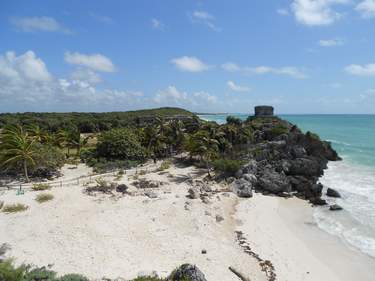
17 days / from 1590 USD
The Magic of the Yucatan and Mexico City
Explore the magic of the Yucatan Peninsula: from colonial towns like Merida to Archaeological sites like Uxmal and Calakmul, close to the Guatemala border, to beaches in Bacalar and Tulum, this itinerary shows you the real Yucatan before heading out to explore Mexico City.

15 days / from 1430 USD
Mexico City, Oaxaca & the Yucatan
Explore Central Mexico with its ever-busy capital Mexico City, visiting Teotihuacan and the famous museums in the city. Further on to Oaxaca City, the gateway to the Archaeological Site Monte Alban. Afterwards, continue to the white beaches of the Yucatan: Cancun and Isla Holbox await.
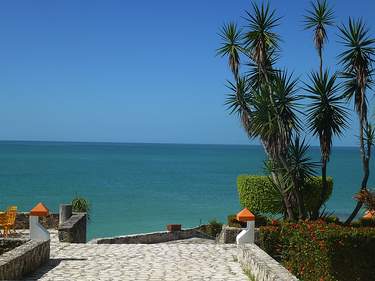
18 days / from 1735 USD
Fascinating Mexico: From Guanajuato to the Yucatan
Discover Mexico from fascinating San Miguel de Allende over busy Mexico City all the way to the Yucatan Peninsula. This itinerary combines public transportation with domestic flights to ensure you can make the most of discovering fascinating Mexico within two weeks.
- Día de la Candelaria (Feb 2). The final day of a week-long fiesta, complete with dances, boat races and bulls let loose in the streets, in Tlacotalpan. Colourful fiesta in Jaltipán, near Acayucán, which includes the dance of La Malinche (Cortés’ Indian interpreter and mistress, who is said to have been born here).
- Carnaval (the week before Lent; variable Feb–March) is celebrated all over the region, most riotously in Veracruz.
- Congreso de Brujos (first Fri in March). Shamans, witches, wizards and healers from across Mexico attend purification rituals and celebrations in and around Catemaco, amid a festival that attracts plenty of visitors.
- Fiestas de San José (March 18–19). In Naranjos, between Tuxpán and Tampico, a fiesta with many traditional dances. In Espinal, a Totonac village on the Río Tecolutla, not far from El Tajín and Papantla, you can witness the spectacular voladores.
- Semana Santa (Holy Week, March/April). Re-creations of the Passion are widespread in this area. You can witness them in Papantla, where you’ll also see the voladores; in Coatzintla, a Totonac village nearby; in Cotaxtla, between Veracruz and Córdoba; and in Otatitlán. Naolinco, a beautiful village near Xalapa , stages a mock Crucifixion on Good Friday. Also celebrations in Catemaco and in the port of Alvarado – a ribald Fish Fiesta following the spirit of the Veracruz Carnaval.
- Feria del Cafe (first two weeks of May). Coatepec celebrates the local crop.
- Corpus Christi (variable; the Thurs after Trinity Sun). The start of a major four-day festival in Papantla with regular performances by the voladores.
- Día de San Juan (June 24). Celebrated with dancing in Santiago Tuxtla,and in Martinez de la Torre, near Tlapacoyan, where the voladores perform.
- Día de la Virgen del Carmen (July 15–16). A massive pilgrimage to Catemaco, accompanied by a fiesta which spills over into the following day. At the same time, Xico has a week-long celebration of Mary Magdalene.
- Día de Santiago (July 25). Celebrated with fiestas in Santiago Tuxtla and Coatzintla; each lasts several days. In Tlapacoyan you can see the bizarre Baile de los Negritos.
- Day of Assumption (Aug 15). Widely celebrated, particularly in Tlapacoyan, where you can see El Baile de los Negritos, and with a week-long festival in Tuxpán that includes dancing and the voladores.
- Independence Day (Sept 15–16). Celebrated everywhere.
- San Jeronimo (last week of Sept). Big celebrations in Coatepec.
- Fiesta de la Virgen del Rosario (Oct 7). In La Antigua the patroness of fishermen is honoured with processions of canoes on the river, while Alvarado, outside Veracruz, enjoys a fiesta filling the first two weeks of the month.
- Día de los Muertos (Day of the Dead; Nov 2). Observed everywhere.
- Dia del Niño Perdido (Dec 7). Huge candle-lit processions in Tuxpán.
- Día de la Virgen de Guadalupe (Dec 12). Widely observed, especially in Huatusco, Cotaxtla and Amatlán de los Reyes, near Córdoba.
- Christmas (Dec 25). Celebrated everywhere. There’s a very famous festival in Santiago Tuxtla that lasts until Twelfth Night (Jan 6).
VILLA RICA DE LA VERACRUZ was the first town founded by the Spanish in Mexico, a few days after Cortés’ arrival on Good Friday, 1519. Though today’s city occupies the area of coast where he first came ashore, made camp and encountered Aztec emissaries, the earliest development – little more than a wooden stockade – was in fact established some way to the north before being moved to La Antigua and finally arriving at its present site in 1589. The modern city is very much the heir of the original; still the largest port on the Gulf coast, its history reflects every major event from the Conquest onwards. “Veracruz,” states author Paul Theroux, “is known as the ‘heroic city’. It is a poignant description: in Mexico a hero is nearly always a corpse.”
Your first, and lasting, impression of Veracruz, however, will not be of its historical significance but of its present-day vitality. Its dynamic zócalo, pleasant waterfront location and relative absence of tourists make the city one of the most enjoyable places in the Republic in which to sit back and observe – or join – the daily round. This is especially true in the evenings, when the tables under the portales of the plaza fill up and the drinking and the marimba music begin, to go on late into the evening. Marimba – a distinctively Latin-Caribbean sound based around a giant wooden xylophone – is the local sound, but at peak times there are also mariachi and norteño bands and individual crooners all striving to be heard over each other. When the municipal band strikes up from the middle of the square, confusion is total. Veracruz’s riotous nine-day Carnaval celebrations (held in February) rival the best in the world, while the Festival Internacional Afrocaribeño, usually held in July or August, showcases dance, film, music and art from all over the Caribbean and Africa.
Brief history
Throughout the sixteenth and seventeenth centuries, Veracruz and the Spanish galleons that used the port were preyed on constantly by the English, Dutch and French. In the War of Independence the Spanish made their final stand here, holding the fortress of San Juan Ulúa for four years after the country had been lost. In 1838 the French occupied the city, in what was later dubbed “The Pastry War”, demanding compensation for French property and citizens who had suffered in the years following Independence; in 1847 US troops took Veracruz, and from here marched on to capture the capital. In January 1862 the French, supported by Spanish and English forces that soon withdrew, invaded on the pretext of forcing Mexico to pay her foreign debt, but ended up staying five years and setting up the unfortunate Maximilian as emperor. Finally, in 1914, US marines were back, occupying the city to protect American interests during the Revolution. These are the “Cuatro Veces Heroica” of the city’s official title, and form the bulk of the history displayed in the museums here.
The attractive zócalo is the heart of life in Veracruz in every sense – the place where everyone gathers, for morning coffee, lunch, afternoon strolls and at night. After dark, especially, it has an extraordinary energy, with tables set out under the portales, nonstop music and strolling crowds. The imposing Catedral de Nuestra Señora de Asunción, consecrated in 1721, dominates the square. Its most striking features are its solid, whitewashed exterior and tiled dome; inside, there’s little to see other than endless restoration works. On the plaza too is the elegant Palacio Municipal, one of the oldest in Mexico, originally built between 1609 and 1627, though it assumed its current form in the eighteenth century. The Fototeca de Veracruz, alongside, hosts beautifully presented photography exhibitions.
Comida y cerveza, a la Veracruzana
Veracruz offers up some fabulous food – the state’s coffee, fruit and vanilla are renowned, and the seafood is also superb. Huachinango a la Veracruzana (red snapper Veracruz-style) is served across the country, and is of course on every menu here; the Veracruzana sauce of tomato, chile, onions and olives can also spice up anything from steak to squid. Other local specialities include pulpos a la marinera (baby octopus), arroz a la tumbada (Veracruz-style rice, packed with seafood), empanadas de camaron (shrimp turnovers) and jaiba, a large local crab; look out too for anything made with chile chipotle, a hot, dark-brown chile with a very distinctive (and delicious) flavour – chilpachole de jaiba is a sort of crab chowder that combines the two. Sweet tamales, too, are a speciality, and to wash it all down, the brewery at Orizaba produces some of the best beers in the country. Stronger liquors include the mind-wiping toritos, made with fruits and blended with condensed milk and a tot of brandy.
Immediately north of Veracruz lie the oldest Spanish settlements in Mexico, and the sites of the indigenous towns which became Cortes’ first allies. A short stretch of toll highway takes you as far as Cardel, a busy little town and handy place to change buses or visit the bank, at the junction of the coastal highway and the road up to Xalapa . La Antigua lies 2km off this road. Beyond Cardel there’s very little to stop for in the long coastal stretch (about 4hr on the bus) to Papantla. At Nautla, 153km from Veracruz, you pass the largest town en route to Papantla, surrounded by coconut groves, at the heart of the so-called “Costa Esmeralda”. There are hotels, some of them pretty fancy, trailer parks and campsites all the way up here, but most are just metres from the highway, which runs close to the shore. The grey sand is frequently desolate and windswept, and it’s not really a place you’d want to stay.
For all its antiquity, there’s not a great deal to see in LA ANTIGUA, site of the second Spanish settlement in Mexico (it’s often incorrectly described as the first – Villa Rica is further north). It is, however, a beautiful, cobbled tropical village, just 20km north of Veracruz on the banks of the Río La Antigua (or Río Huitzilapan). At weekends it makes a popular excursion for Veracruzanos, who picnic by the river and swim or take boat rides.
In the semi-ruined centre of the village stand some of the oldest surviving Spanish buildings in the country: on the plaza are the Edificio del Cabildo, built in 1523, which housed the first ayuntamiento (local government) established in Mexico, and the Casa de Cortés, a fairly crude stone construction, which, despite the name, was probably never lived in by Cortés and is now a ruin, undergoing restoration. Nearby is the tranquil Ermita del Rosario, the first Christian church built in New Spain, which also dates from the early sixteenth century, though it’s been altered and restored since.
On the riverbank stands a grand old tree – the Ceiba de la Noche Feliz – to which it is claimed that Cortés moored his ships. A pedestrian suspension bridge crosses the river near the tree, and on this stretch of the bank are lanchas offering river trips and a little row of restaurants with waterside terraces, the pick of which is Las Maravillas.
The first native city visited by the conquistadors, CEMPOALA (or Zempoala) quickly became their ally against the Aztecs. When Cortés arrived, the city, under the leadership of Chicomacatl (dubbed the “Fat Chief” by conquistador Bernal Díaz del Castillo), had been under Aztec control for little over fifty years. Its people, who numbered some 25,000 to 30,000, had already rebelled more than once and were only too happy to stop paying their tribute once they believed that the Spaniards could protect them. This they did, although the inhabitants must have begun to have second thoughts when Cortés ordered the idols of their deities to be smashed and replaced with crosses and Christian altars.
The ruins, though nowhere near as dramatic as El Tajín further north, make for an absorbing detour and take no more than an hour to explore. They date mostly from the Aztec period, and although the buildings have lost their decorative facings and thatched sanctuaries, they constitute one of the most complete surviving examples of an Aztec ceremonial centre – albeit in an atypical tropical setting and on a very small scale. The double-stairway pyramids, grouped around a central plaza, must have resembled miniature versions of those at Tenochtitlán. Apart from the main, cleared site, consisting of the Templo Mayor, the Gran Pirámide and the Templo de las Chimeneas, there are lesser ruins scattered throughout, and around, the modern village. Look out in particular for the circular Templo de Ehecatl (Temple of the Wind God) on the opposite side of the main road through the village.
Around 15km north of Cardel, the sleepy village of Villa Rica was the first permanent Spanish settlement in New Spain. Established by Cortés in 1519, it was abandoned in 1524 for La Antigua, and only foundations remain today, close to the normally deserted beach. Just beyond, an exceptionally scenic area of steep, green hills is home to Mexico’s only nuclear plant, on the coast at Laguna Verde.’s only nuclear plant, on the coast at Laguna Verde.
PAPANTLA, 227km from Veracruz, is the most attractive town on the route north, straggling over an outcrop of low, jungly hills. Even so, if it weren’t for the proximity of El Tajín, few people would consider staying here. In addition to being one of the most important centres of the Mexican vanilla industry – the sweet, sticky odour frequently hangs over the place, and vanilla products are on sale everywhere – Papantla is also one of the last surviving strongholds of Totonac culture. You’ll see Totonacs, barefoot and in loose white robes in the markets, and can regularly witness the amazing dance-spectacle of the Voladores de Papantla.
On the edge of the zócalo, the huge Mural Cultural Totonaca depicts the clash between modern and traditional life, with sculpted images of Totonac gods, myths and the pyramids of El Tajín alongside oil rigs and farm machinery (the tourist office has a leaflet describing this in detail). It’s best appreciated in the evening, when floodlights pick out the relief and the zócalo itself is wildly animated; especially at weekends, when there’s often live music and dancing. On the terrace above the mural stands the solid Catedral de la Asunción, beyond which you can climb to the Volador monument, a giant statue affording tremendous views of the town.
The Voladores de Papantla
Although the full significance of the dance of the voladores has been lost over time, it has survived much as the earliest chroniclers reported it, largely because the Spanish thought of it as a sport rather than a pagan rite. It involves five men: a leader who provides acoustics on flute and drum, and four performers. They represent the five earthly directions – the four cardinal points and straight up, from earth to heaven. After a few preliminaries, the five climb to a small platform atop a pole, where the leader resumes playing and directs prayers for the fertility of the land in every direction. Meanwhile, the dancers tie ropes, coiled tightly around the top of the pole, to their waists and at a signal fling themselves head-first into space. As they spiral down in increasing circles the leader continues to play, and to spin, on his platform, until the four hit the ground (hopefully landing on their feet, having righted themselves at the last minute). In all, they make thirteen revolutions each, symbolizing the 52-year cycle of the Aztec calendar.
At Papantla (performances in front of the cathedral Fri, Sat & Sun 10.30am–7pm) and El Tajín (regular performances outside the entrance to the ruins starting at 11am), the ritual has become primarily a tourist spectacle, as the permanent metal poles attest. In local villages there is still more ceremony attached, particularly in the selection of a sufficiently tall tree to act as the pole, and its temporary erection in the place where the dance is to be performed. Note that performances are nominally free, though if you catch one of the regular shows in Papantla or El Tajín you’ll be expected to make a donation.
With numerous substantial structures spread over an extensive site, EL TAJÍN is by far the most important and impressive archeological site on the Gulf coast. It divides broadly into two areas: Tajín Viejo, which centres on the amazing Pirámide de los Nichos, and Tajín Chico, a group of official residential buildings belonging to the city’s ruling class built on an artificial terrace. The site museum, by the entrance, has a model of the site worth examining before you venture in, along with a collection of the more delicate stonework salvaged from the ruins, notably murals and columns, bits of pottery and statues – displays are primarily labelled in Spanish, but there are a few English explanations.
The principal architecture at El Tajín dates from the Classic period (300–900 AD); the city declined in the early Post-Classic (900–1100 AD), and by the time of the Conquest it had been forgotten. Our knowledge comes entirely from archeological enquiries made since the accidental discovery of the site in 1785 – El Tajín remains one of the most enigmatic of all of Mexico’s ancient cities. No one even knows who built it: some claim it was the Huastecs, others the Totonacs. Most archeologists prefer not to speculate too wildly, instead calling the civilization Classic Veracruz. You’ll notice many of its hallmarks at El Tajín, including niches in temple walls and complex ornamental motifs known as “scrolls”. Classic Veracruz influence was widespread, and is strongly felt at Teotihuacán,to the extent that some believe that city may have been built by Veracruzanos.
Tajín Viejo
From the site entrance, a track leads through a small group of buildings to the Plaza del Arroyo, the city marketplace, and into the heart of Tajín Viejo. Around the plaza are several ball-courts, the most prominent of which is the South Court, or Juego de Pelota Sur; it looks like a wide avenue between two small pyramids. Seventeen such courts are known here, and more possibly lie unexcavated; it’s thought that the game took on a greater importance here than at any other known site. The superb bas-relief sculptures that cover the walls of the South Court include portrayals of a decapitated player, and another about to be stabbed with a ritual knife by fellow players, with Death waiting to his left. Such bas-reliefs are a constant feature of the site, adorning many of the ball-courts and buildings, with more stacked in the museum.
The unique Pirámide de los Nichos, one of the last to be built here, is the most famous building at El Tajín, and indeed one of the most remarkable of all Mexican ruins. It rises to a height of about 20m in six receding tiers, each face punctuated with regularly spaced niches; up the front a steep stairway climbs to a platform on which the temple originally stood. If you tally up the niches, including those hidden by the stairs and those, partly destroyed, around the base of the temple, there are 365 in all. Their exact purpose is unknown, but clearly they were more than mere decoration: theories include each holding some offering or sacrifice, one for each day of the year, or that they symbolized caves to the underworld – the dwellings of the earth god. Originally they were painted black, with the pyramid in red, to enhance the impression of depth. Niches are also present on other buildings at the site, some bearing the attributes of Quetzalcoatl, the plumed serpent, El Tajín’s most depicted god.
Around the plaza in front of the pyramid stand all the other important buildings of Tajín Viejo. Opposite is Monumento 3, a similar pyramid without niches, and behind it Monumento 23, a strange steep-sided bulk, one of the last structures to be built here. To the right of the Pirámide de los Nichos, Monumento 2, a low temple, squats at the base of Monumento 5, a beautiful truncated pyramid with a high decorative pediment broken by a broad staircase; on the left, Monumento 4 is one of the oldest at El Tajín, and only partly restored.
Tajín Chico
From the back of Monumento 4 the path continues past the Juego de Pelota Norte, with its worn relief sculptures, onto the levelled terrace of Tajín Chico, home of the city’s elite. From here, you get a great overview of Tajín Viejo. Only parts of the buildings survive, making a rather confusing whole. Edificio C and the adjoining Edificio B are the most impressive remains: Edificio C has stone friezes running around its three storeys, giving the illusion of niches. In this case, they were purely decorative, an effect that would have been heightened by a brightly coloured stucco finish. It also has the remains of a concrete roof – originally a huge single slab of poured cement, unique in ancient Mexico. Edificio A had a covered interior, and you can still see the entrance covered by a false arch of the type common in Maya buildings.
Estructura I (aka Edificio de las Pinturas) is distinguished by a palapa roof protecting its elaborate decoration, including relief carvings and delicately painted murals. Such luxurious decor suggests that this was probably the residence of some major political or religious figure. On the hill above Tajín Chico stood the Edificio de las Columnas, which must have dominated the entire city. El Tajín’s most famous ruler, 13 Rabbit, lived here; bas-reliefs on columns recorded his exploits, and some of these are now on show in the museum.
From the terrace of Tajín Chico you can walk down the stone path to the Gran Greca complex, also known as Xicalcoliuhqui, whose spiral walls contain two ball-courts and more pyramids. It has been only partially cleared of jungle, but you can stroll along the walled edges to get a sense of its vast size. Built towards the end of the city’s life, it is regarded as a sign of growing crisis, Tajín’s rulers becoming increasingly obsessed with monumental projects in order to maintain control over a disenchanted populace.
El Baile de los Negritos
Popular at festivals across the state of Veracruz, the frenetic Baile de los Negritos is a Totonac dance dating back to colonial times, when African slaves were imported to work on local plantations, often living and labouring alongside indígenas. Stories abound as to the origin of the dance: the most popular version has it that a female slave and her child escaped from a plantation near Papantla and lived in the dense jungle with local indigenous groups. After her child was poisoned by a snake bite, the mother, using African folk medicine, danced herself into a trance. The Totonacs around her found the spectacle highly amusing and, it is said, began to copy her in a spirit of mockery.
Good opportunities to see the dance are Corpus Christi (late May–June) in Papantla, or in Tlapacoyan at the Feast of Santiago (July 25) or the Day of the Assumption (Aug 15); it’s frequently performed on a smaller scale at other village festivals in the area.
Leaving Veracruz to the south, Hwy-180 traverses a long expanse of plain, a country of broad river deltas and salty lagoons where the river port of Tlacotalpan oozes elegant decay. Some 150km south of Veracruz, the volcanic hills of the Sierra Tuxtla are home to the townships of Santiago Tuxtla and San Andrés Tuxtla. This beautiful region of rolling green hills, known as “La Suiza Veracruzana” (the Switzerland of Veracruz, plainly named by someone who’d never been to Switzerland), makes a welcome change from the flat plains, and the cooler climate is an infinite relief. The idyllic Lago de Catemaco, around which the last expanse of Gulf coast rainforest is preserved, makes a rewarding place to break the journey south, with plenty of opportunities to explore the nearby mountains and coast. Beyond the Tuxtla mountains, low, flat, dull country leads all the way to Villahermosa.
Historically, the region’s great claim to fame is that it was the birthplace of Mexico’s first civilization, the Olmecs. Here lies the Volcán de San Martín, where the Olmecs believed the earth to have been created; they built a replica “creation mountain” at their city, La Venta, on the border with Tabasco. Their second major city, at Tres Zapotes near Santiago Tuxtla, is now little more than a mound in a maize field. For most modern Mexicans, however, this part of southern Veracruz, especially around Lago de Catemaco, is best known as the Tierra de los Brujos (land of the witches/wizards).
Squatting on the western shore of the enchanting Lago de Catemaco, and by tradition a centre of native witchcraft, CATEMACO is a picturesque spot – perfect to break up a journey if you’re heading south – with an impressive backdrop of volcanic mountains. The lake and nearby marshland and lagoons are a haven for wildlife, supporting large colonies of water birds, including herons, cormorants, wintering ospreys and dozens of other resident and migratory species. The town itself isn’t particularly attractive, with slapdash development stretching five blocks or so back from the waterfront, but there’s plenty to do on and around the lake. Veracruzanos arrive in force at weekends and holidays, when the main strip can get pretty busy; at other times the place can be dead, and many of the facilities shut.
Lago de Catemaco
A boat trip around the lake is one of the highlights of southern Veracruz. You’re unlikely to escape the attentions of the lancha operators as you approach the lakefront: they all offer similar ninety-minute trips to the lake’s main sights and some of its beaches. On the tiny Isla de los Changos there are stump-tailed macaques (monkeys native to Thailand), introduced here by Veracruz University in 1974 – they look bored stiff in their restricted habitat. In 1988, endangered Mexican howler monkeys were introduced to the much larger Agaltepec Island; these are far more active and aggressive. You are almost guaranteed to see a huge variety of birds too – herons, egrets, cormorants and shags, as well as more exotic kingfishers and ospreys.
Morelet’s crocodiles, a relatively small species (up to 3m long), live in the lake too, nesting on the far bank. They’re well fed and, apparently, never attack. Certainly plenty of people swim in the lake: stick to the main beaches and close to others if you feel uneasy. Playa Espagoya is just a short walk beyond the eastern edge of town, with Playa Hermosa and Playa Azul not much further beyond.
Shamanism, witchcraft and wizardry
Every March a gathering of brujos takes place on Cerro Mono Blanco (White Monkey Hill), just north of Catemaco town. Mexico has thousands of witches, warlocks, shamans, herbalists, seers, healers, psychics and fortune-tellers, whose belief system blends Catholicism with ancient rites and practices. The thirteen brujos of Catemaco, who call themselves “the Brothers”, are acknowledged as the high priests of the trade.
These days, shamanism is big business in Catemaco. Many brujos have websites and toll-free numbers over which they sell long-distance spells, and in town you’ll be pestered by their agents. By no means all of those claiming shamanistic powers are the real thing, so if you do want a consultation take advice from people locally, and be sure to know what you’re getting and how much you’ll be paying for it. The rituals can be fascinating – but they can also be theatrical flim-flam, designed to empty your wallet rather than expand your consciousness.
Tlacotalpan
TLACOTALPAN is a beautiful, languid town on the north bank of the broad Río Papaloapan. An important port and railhead in the eighteenth and nineteenth centuries, it now has just six hundred permanent inhabitants, but its elegant colonial architecture has led to its being declared a Unesco World Heritage Site. At the weekend it can be packed with locals, who come here to eat at the riverside restaurants, fish, swim or take boat rides on the river, browse the artesanía shops and hang out in the bars and cafés on the plaza. Come on a weekday afternoon and you’ll find the place all but deserted.
Among Mexicans, Tlacotalpan is known as the place where musician and composer Agustín Lara (1900–70), whose works have been interpreted by the likes of Pavarotti, Carreras and Domingo, spent his early childhood. Two museums and a cultural centre honour the man, but unless you’re a huge fan they’re not worth the admission – the true pleasure here is simply to wander the streets, admiring the architecture (many of the buildings are labelled with their history) and soaking up the steamy, tropical atmosphere. On the Plaza Zaragoza are two magnificent churches and a florid, wrought-iron bandstand; Enriquez and Miguel Chazaro, parallel streets heading west from here, are lined with magnificent colonnaded houses. A market occupies a wonderful nineteenth-century building on the waterfront, just east of the centre.
Fiesta de la Virgen de la Candelaria
For ten days starting on January 31, Tlacotalpan is inundated with thousands of visitors as it celebrates its famous Fiesta de la Virgen de la Candelaria. Processions, bull runs, dance and music take over the town, especially for the first three days, culminating on February 2, when the image of the Virgin processes downstream accompanied by a mass of assorted riverboats.
Discover more places in Mexico
- Sierra Madre Oriental
- Xalapa and around
The Rough Guides to Mexico and related travel guides
In-depth, easy-to-use travel guides filled with expert advice.

Find even more inspiration here

Planning your own trip? Prepare for your trip
Use Rough Guides' trusted partners for great rates

written by Andy Turner
updated 26.04.2021
Ready to travel and discover Mexico?
Get support from our local experts for stress-free planning & worry-free travels.
- Where to stay
- Travel advice

México » States » Veracruz
Tourism in VERACRUZ
Veracruz is one of the most representative states of Mexico for its natural, social, historical and cultural wealth. It is considered the door of Mexico to the world, since the Spanish arrived there to form the Mexican nation and today it is the most important commercial sea port in the country.
With a splendid and generous nature, in which the sea and the mountains, the jungle and the beach, mighty rivers and fertile fields, history and modernity converge, Veracruz keeps alive its tropical and indigenous essence, Huasteca, Totonaca, Olmec, present not only in the archaeological zones, but in its beautiful traditions, in its delicious gastronomy, festivals, crafts and, above all, present in the warmth and hospitality of its people.
Its long history, in which the port has been heroic four times before the invaders, is told in every corner of the Huasteca, the Costa Smeralda, the mountains, the Tuxtlas, etc. This variety is reflected in the great tourist offer, in which there are alternatives for all tastes and possibilities; for something it is said that only Veracruz is beautiful!
Tourist Attractions in VERACRUZ
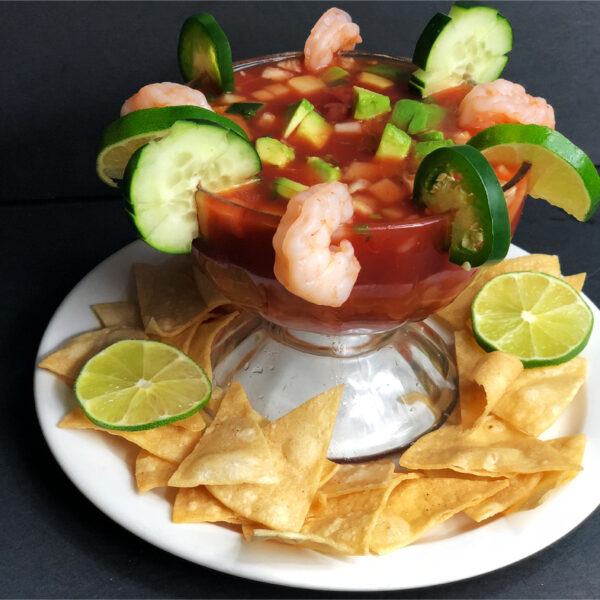
Gastronomy of Veracruz
The Gastronomy of Veracruz is a tasty synthesis of Spanish and coastal cuisine, traditionally famous for its richness and variety. In Veracruz, cooking is among the popular arts, one of the most outstanding. He goes to the indigenous and Spanish roots, mainly, to affirm his own uniqueness while condensing traditions. Complying with a gastronomic itinerary through Veracruz lands is an intense and very gratifying adventure full of tasty experiences for the palate, as well as enriching human contacts.… Read More
Map of VERACRUZ
Guided Tours in VERACRUZ
Flights & hotels in veracruz, more tourist attractions in mexico.

On the Beaches of Mexico you can immerse yourself in the intense blue ocean of the Pacific bays, sunbathe on the shore of the warm and transparent waves of the Caribbean Sea in Quintana Roo or even rest on the beautiful coasts of the Gulf of Mexico. Mexican beaches hide wonderful secrets for the traveler. By visiting them, in addition to enjoying the excellent climate and water activities, you can discover splendid archaeological sites and interesting colonial cities without traveling long distances.… Read More

- Traditions in Mexico
It is practically impossible to make a meticulous, and above all, accurate selection of the places to visit in Mexico. Each place that our country houses is unique and beautiful in its own way. Mexico, with its nearly 2 million km², has a large number of scenarios to offer, as well as endless activities to do. Do not lose your way and enter the places to visit in Mexico. In Mexico, apart from the beaches and its famous archaeological sites, there are many other really interesting sites and activities that you should know. In the surroundings of the main cities you will find places full of culture and tradition, where you can spend relaxing, interesting and fun vacations. On your trip through Mexico you cannot stop obtaining souvenirs, the crafts that are made here are of the highest quality and recognized worldwide. A shopping tour cannot be missed.… Read More

The Gastronomy of Mexico has a great diversity of typical dishes, which is why it was recognized by UNESCO as Intangible Heritage of Humanity. The basic and representative ingredients of Mexican dishes are: corn, coriander, chili, beans, piloncillo, nopal and tomato. Mexican cuisine is also characterized by its sauces, which serve as an accompaniment to traditional dishes, prepared based on spices.… Read More

- Ecotourism and Adventure
Mexico is one of the best countries for Ecotourism as it has a great variety of flora and fauna, as well as a large number of refuges for extraordinary species. You can enjoy recreational activities of appreciation and knowledge of nature through contact with it, such as: stargazing, observation of natural attractions, wildlife and bird watching. Throughout México there are more than 176 protected natural areas, 5 of them considered by UNESCO as Natural Heritage of Humanity. Just for this and much more, we believe that Mexico is a Paradise for Ecotourism.… Read More

- Magical Towns
A Magical Town is a place with symbols and legends, towns with history that in many cases have been the scene of transcendent events for our country, they are places that show the national identity in each of its corners, with a magic that emanates from its attractions ; visiting them is an opportunity to discover the charm of Mexico. The Magical Towns Program contributes to revalue a set of populations in the country that have always been in the collective imagination of the nation and that represent fresh and varied alternatives for national and foreign visitors. A town that through time and in the face of modernity, has conserved, valued and defended its historical, cultural and natural heritage; and manifests it in various expressions through its tangible and intangible heritage. A Magical Town is a town that has unique, symbolic attributes, authentic stories, transcendent events, everyday life, which means a great opportunity for tourist use, taking into account the motivations and needs of travelers.… Read More

- Capital Cities
Folklore, gastronomy, literary culture, art and exhibitions, is what you will find in the capitals of the states of Mexico. To the north, colonial Mexico, Puebla, Guadalajara, Guanajuato, the Sonoran desert and the California peninsula. To the east Veracruz and the gulf. To the west Acapulco, Oaxaca and Tuxtla Gutiérrez. And to the south the Riviera Maya and the pyramids of Chichén-Itzá, Tulúm and Cobá in Yucatán, Palenque in Chiapas, the cenotes, and the Central American jungles.… Read More

- Archaeological Sites
The Archaeological Zones are the cultural past of every Mexican. You will be amazed at the ambient, nature and the environment that surrounds them. Climbing to the top or being around it will take us back in time to admire every detail. México is a country of culture and traditions, many of which we have inherited from the pre-Hispanic inhabitants of this vast territory, although it is true that there were more settlements in the central and southern part of the country, it is also possible to find some archaeological remains in the north. … Read More


States Of Mexico
Mexico has an incredible diversity of landscapes, where the beauty of its beaches, internationally recognized, stands out. In its vast territory of coasts, there are beaches of unparalleled beauty, and colorful landscapes. A large network of first-class hotels and tourist services is available to visitors to these beaches. Mexico is also mystical places, dotted with archaeological testimonies inherited from its original inhabitants. Monuments made by the Mayas, Aztecs and Toltecs are located in magical landscapes, like lighthouses in an ocean of natural beauty. They offer visitors buildings that tell their history, and museums that collect their cultural heritage. And that keep alive ancestral traditions, in ceremonies and festivals, where you can enjoy cultural activities and entertainment.… Read More
Leave a Reply Cancel reply
Your email address will not be published. Required fields are marked *
Save my name, email, and website in this browser for the next time I comment.
- States of Mexico
- Animal Rescue in Mexico
Top 10 Things To Do in Veracruz
Veracruz City Sights and Attractions
Veracruz is known as a city with a warm welcoming atmosphere, and afro-Caribbean rhythms. The port city has a long and interesting history and a vibrant culture, with plenty of diversions for visitors. From strolling the Malecón to visiting nearby ruins and UNESCO World Heritage sites , you'll find plenty to see and do in Veracruz. Here are our favorite pastimes in this colorful city.
Listen to Music in the Zocalo
The people of Veracruz, called "jarochos," are lively and friendly, and the culture here is both laid-back and festive. The main square of the Port of Veracruz, called the Zocalo or Plaza de Armas, is the main social center of the city. Start your day here with a breakfast served at one of the many outdoor cafes and restaurants, or end the day to the sound of marimba music or dancing to danzón , a unique combination of Cuban rhythms and ballroom dancing.
Stroll the Malecon
Veracruz port's Malecon , or boardwalk, is a relaxing place to stroll. You can people-watch, see street performers or shop for souvenirs. There is a crafts market where you can purchase some of the traditional handicrafts, such as a hammock or a guayabera (tropical shirt). On your walk you can also get a glimpse at the workings of Mexico's largest port as you pass by cargo and military ships. A variety of double-decker sightseeing buses depart from here for city tours, including "El Piojito," and the Turibus.
Visit the Veracruz Aquarium
Besides offering educational displays and shows, the largest aquarium in Latin America also serves as a marine research center. The aquarium houses a wide variety of sea life from the Gulf region, as well as from other parts of the world. Here you can see barracudas, nurse sharks, giant manta rays, sea turtles, and manatees. Visitors can also participate in swim with dolphins and shark feeding activities. The Acuario de Veracruz is open Monday to Thursday from 10 am to 7 pm, and Friday to Sunday from 10 am to 7:30 pm.
Have Coffee at La Parroquía
The city streets of Veracruz are lined with sidewalk cafes and bars. The oldest cafe is Cafe La Parroquia , which has been a Veracruz institution for over two hundred years. The specialty here is "lechero," coffee served with milk. Your waiter will bring you a glass on a saucer, filled one third of the way with strong black coffee. Bang on your glass with a spoon to signal another waiter who will bring a metal kettle to fill your glass to the rim with hot milk, elevating the pot as he pours in a thin stream, creating a nice layer of foam on your coffee. Delicious!
See el Baluarte de Santiago
The Santiago Bulwark was built in 1635 and now is the only visible remnant of the defensive wall that once surrounded the port city. Go inside to the museum where you can view “Las Joyas del Pescador” (the Jewels of the Fisherman), an exhibit of prehispanic jewelry and weapons. This remnant from Veracruz' past is located on Calle Canal between Avenida Gomez Farías and 16 de Septiembre. Open Tuesday through Sunday from 9 am to 5 pm, closed Mondays.
Sample Seafood Specialties
The food from Veracruz state is one of the most distinctive of Mexico's varied cuisines. Seafood and spices are the hallmark of this rich culinary tradition. Huachinango a la veracruzana , red snapper prepared in a spicy tomato sauce, is one of the specialties to try, along with arroz a la tumbada , a rice dish baked with seafood, and caldo de mariscos , a seafood stew which is said to be a great hangover remedy.
Visit San Juan de Ulua
The fortress of San Juan de Ulúa is one of Veracruz city's most important landmarks. The fortress is on Isla Gallega, a small island in the harbor, and formed part of the fortifications that protected the city against pirates. Construction began in the mid-1500s, and it was later expanded. For hundreds of years San Juan de Ulúa served as the primary military stronghold of the Spanish Empire in the Americas. It was also used to store products that were to be shipped to Spain. After Mexico gained its independence it was used as a military base and a prison. The ramparts, dungeon and barracks are now open to visitors.
Hit the Beach
Although Veracruz is not among Mexico's most popular beach destinations , the beaches of Veracruz certainly offer a great way to find relief from the heat in this tropical city. The Villa del Mar beach is within walking distance from the aquarium, and there is also a decent beach in Boca del Río (a new suburb of Veracruz). Slightly farther away, you can also check out the beaches at Punta Mocambo, or farther south, Punta Antón Lizardo. This is a great spot to begin exploring the Veracruz Reef System .
Take a Day Trip to Tlacotalpan
This UNESCO-listed city has elegant colonial-period architecture and a slow pace. It makes for a long, but do-able day trip from Veracruz (about two hours drive each way). While there, visit the Nuestra Señora de la Candelaria church, dedicated to the town's patron saint (celebrated on February 2nd, Día de la Candelaria ), take a boat tour on the Papaloapan river, and visit the Casa Museo Agustin Lara, dedicated to one of Mexico's most beloved singer-songwriters.
Go to Cempoala Archaeological Site
Cempoala (sometimes spelled Zempoala), is an archaeological site located 27 miles north of Veracruz port. This was the capital of the Totonac civilization at the time of the arrival of the Spaniards. It was the first city that Hernan Cortes and his men visited in Mesoamerica (comprised of parts of Mexico and Central America).
Cubas Capital City of Havana
The 12 Best Restaurants in Cancun
20 Top Things to Do in Mexico
The Top 20 Things to Do in San Diego, California
The 10 Best Beach Destinations in Mexico
Visiting the Catedral de San Juan in Old San Juan
Top Mexico Destinations
20 Best Things to Do in Barcelona
The 17 Best Things to Do in Mexico City
Your Trip to San Diego: The Complete Guide
Veracruz State
A Weekend in Puerto Rico: A 3-Day Itinerary
Islas Marietas National Park: The Complete Guide
10 Best Things to Do in Acapulco, Mexico
48 Hours in Mexico City: The Ultimate Itinerary
The Top Things to Do in Cozumel
Expedia Rewards is now One Key™

Veracruz is not one of Mexico’s most popular tourist destinations, but those who spend some time in the state will find natural beauty and history at every turn. Scale a volcano, visit ancient pyramids and wander the streets of a historic port town. Experience a warm welcome in Veracruz’s towns and cities, which are not overwhelmed by tourism.
Often said to be one of the friendliest cities in Mexico, busy Veracruz is a tropical port town brimming with history. This is Mexico’s first port, the place where Herman Cortez and the Spanish Conquistadors first landed in 1519 and the oldest post-Columbian city in North America. Palm trees line the streets and main plaza, which comes alive at night with music, dancing and street entertainers. Stroll along the boardwalk and visit the aquarium, one of the largest in Latin America.
Explore the surrounding countryside, a region rich in agriculture, with coffee, vanilla and tropical flowers growing in abundance, and rural towns and villages offering a glimpse of old Mexico. El Tajin, for example, is the site of a mysterious ruined city complete with ancient pyramids. It’s located 4 hours north of Veracruz city.
Another impressive sight is the peak of Citlaltépetl, also called the Pico de Orizaba. This dormant volcano is Mexico’s highest, towering some 18,400 feet (5,600 meters) above sea level. Marvel at its snowcapped peak from the nearby town of Orizaba and attempt the tough but popular climb on one of many organized trips to the summit.
Adventure seekers can also go whitewater rafting, kayaking, canyoning and hiking among the Sierra Madre Oriental mountains. Explore the lush cloud forests, which are filled with rare birds and plants.
When it’s time to hit the beach, head for one of Veracruz’s quieter stretches of sand. Find tranquility at one of the beaches along the Costa Esmeralda, a 31-mile (50-kilometer) strip to the north of Veracruz port, where the water is warm and crowds are few.
To reach the state of Veracruz, fly into the airport in Veracruz city or ride a bus from other Mexican cities. For the freedom to explore the region at will, consider renting a car.
Popular cities in Veracruz
Reasons to visit.
- Carranza Lighthouse
- Naval Historical Museum
- Veracruz Cathedral
- Mocambo Beach
Cities in Veracruz

Boca del Río
- Other Cities in Veracruz

- Yucatan Peninsula
- Central Mexico
- Pacific Coast
- Northern Mexico
- Mexican Culture
- Trip Planning
15 Best Places To Visit In Veracruz For Families and Kids
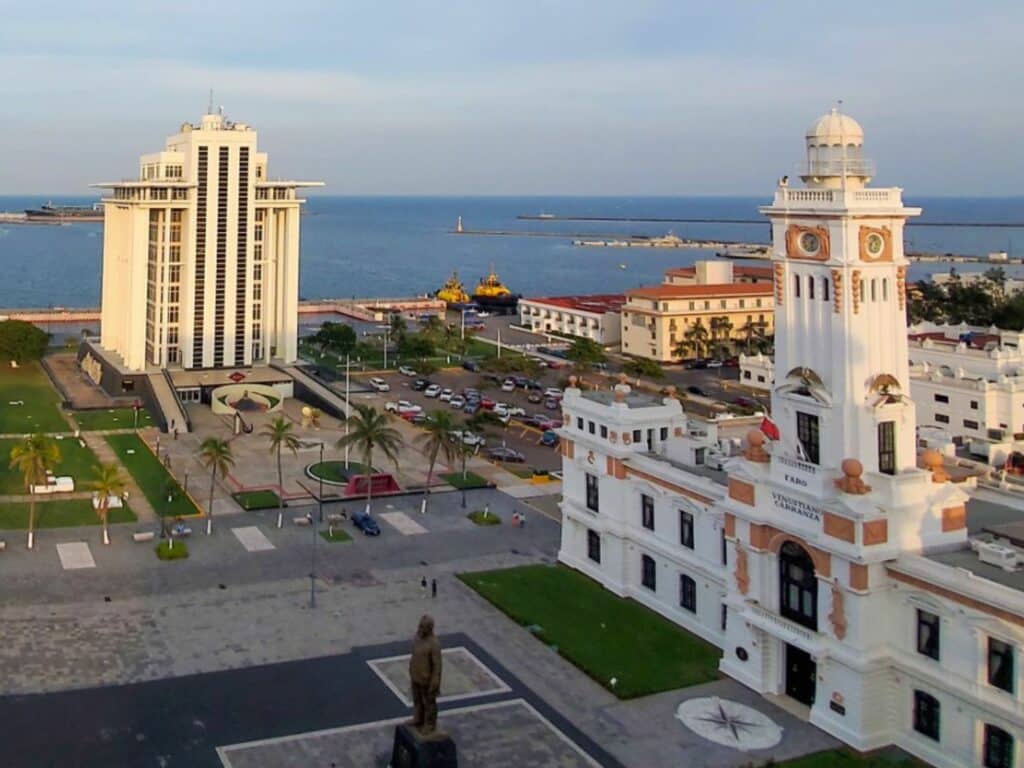
Veracruz, Mexico is one of the most overlooked family travel destinations in the country - but it shouldn't be. There are so many places to visit in Veracruz for families to experience!
The city of Veracruz itself, (officially known as Heroica Veracruz but also known as Veracruz Port) is the oldest city in the Americas. It’s full of culture and history. But, it's also one of the most family friendly destinations abroad that you will find.
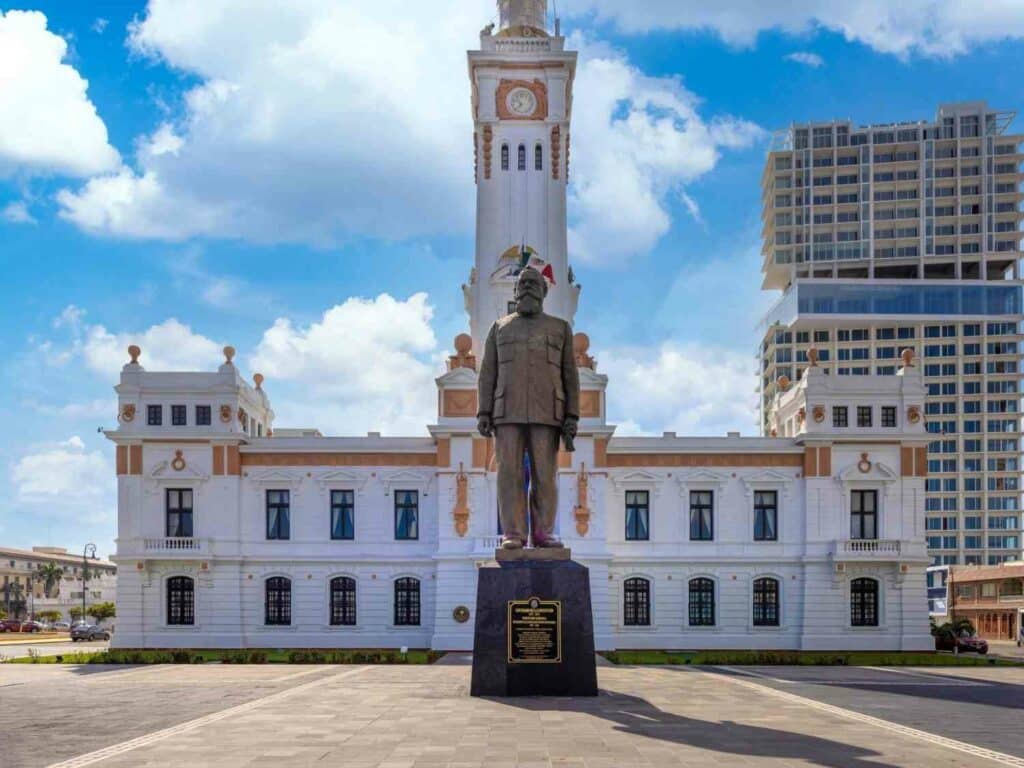
This post may contain affiliate links. That means this blog will receive a small commission if you click on the link and purchase something. However, this will not result in any extra costs to you.
This post was written by Sara Tyler.
Table of Contents
Where to stay and what to see in Veracruz
The largest city in the state is Veracruz Port, which is often combined with its southern neighbor, Boca del Rio. Together, Veracruz Port and Boca del Rio host the majority of the tourist attractions, annual festivals, and cultural events, not to mention the malecon and the beaches.
Many hotels in Veracruz are located along the coast, from the Zona Centro neighborhood to the Costa de Oro neighborhood. These neighborhoods are convenient to many of the places to visit in Veracruz that are highlighted in this post. You can also find hotels scattered throughout the city of Boca del Rio.
DoubleTree by Hilton
For a dependable hotel experience, consider staying at the DoubleTree by Hilton during your visit in Veracruz. Being a Hilton hotel, you'll find the usual room amenities such as air conditioning, WiFi, coffee maker, safe, and TV with cable. Rooms can accommodate families of up to 4 people, and some of them have views of the beach.

Within the hotel, you'll find an outdoor pool, a gym, and restaurant on-site. Breakfast is available for a fee. DoubleTree by Hilton is a 4 minute walk from Regatas Beach, and is a 12 minute walk from the Veracruz Aquarium. You'll find a few restaurants within a 3-10 minute walk from the hotel.
Veracruz Centro Historico
For a hotel with a more retro vibe during your time in Veracruz with kids, consider staying at the Veracruz Centro Historico . This hotel is located a 1 minute walk from the Zocalo, and has many restaurant options within a 1-2 minute walk. Veracruz Centro Historico is right in the middle of the action!

Rooms can accommodate families of up to 4 people and are equipped with air conditioning, WiFi, safe, and TV with cable channels. The hotel has an outdoor pool and cooked-to-order breakfast available for a fee. There are 2 restaurants available on-site.
Gran Hotel Diligencias
If you're looking for another place to stay in Zona Centro, consider staying at Gran Hotel Diligencias . Located close to the Zocalo, Veracruz Cathedral, and Veracruz Harbor, this hotel offers families a convenient place to stay during their time in Veracruz with kids. The architecture of the hotel blends well with its surroundings, so you get a historic vibe with modern amenities.

Rooms at Gran Hotel Diligencias can accommodate families of up to 4 people, and come with WiFi, TV, air conditioning, and coffee maker. There's an outdoor pool, as well as hot tub and sauna, plus a 24-hour gym. The hotel has a restaurant on-site.
Use this map to find more places to stay in Veracruz
Top family picks for places to visit in veracruz.
There are plenty of amazing places to visit in Veracruz within the port city itself. From boardwalks to museums, Veracruz has something for every age.
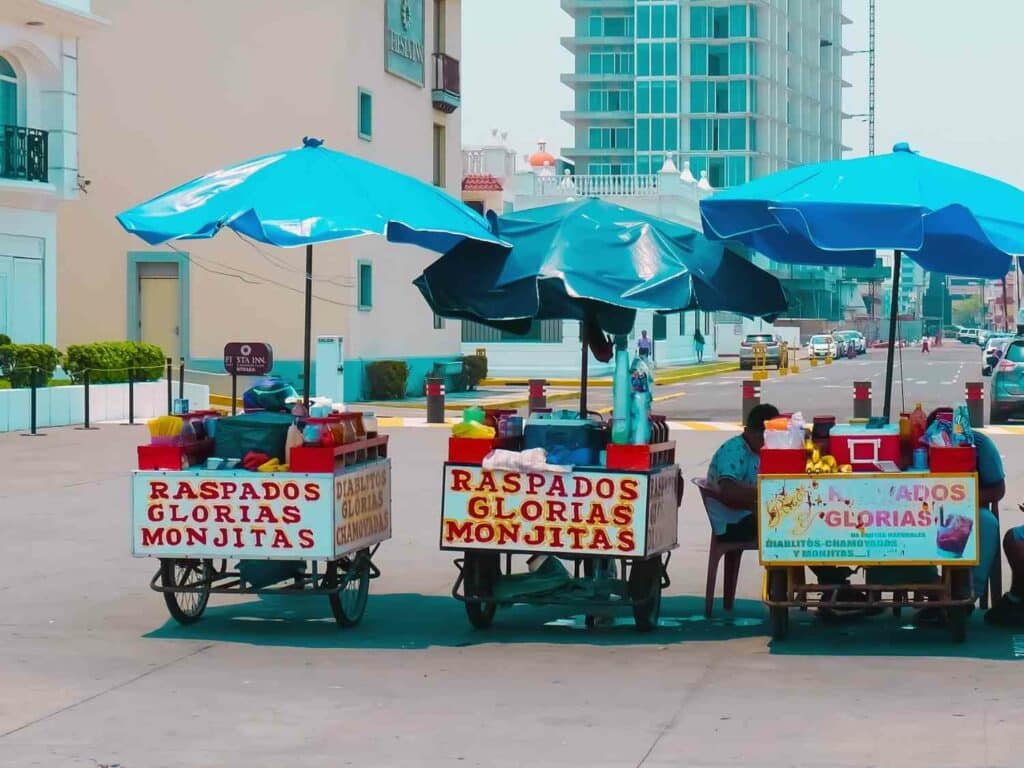
If your time in Veracruz is limited, pick one or two of these suggestions to make the most of your time. But if you have longer to stay in Veracruz, see them all to make your vacation extra memorable.
1. Malecon
Within the city, the malecon (boardwalk) is itself one of the most popular tourist attractions in Veracruz Mexico. Recently renovated, the malecon consists of over 10 miles of a wide beachfront path, where families gather after the sun goes down. You will find locals and tourists alike walking, jogging, cycling, skateboarding, rollerblading, and more along the beach.
You will also find benches, tables and chairs to dine, and children's parks along the malecon. Additionally, there are public gyms/workout equipment every few miles. It’s one of the best places to visit in Veracruz if you’re looking for a glimpse of local life!
2. Artisan Markets
At the northern end of the malecon, you will find artisan markets and street vendors that sell everything from authentic, handmade clothing and goods, to the typical souvenirs that you can expect in any beach destination.
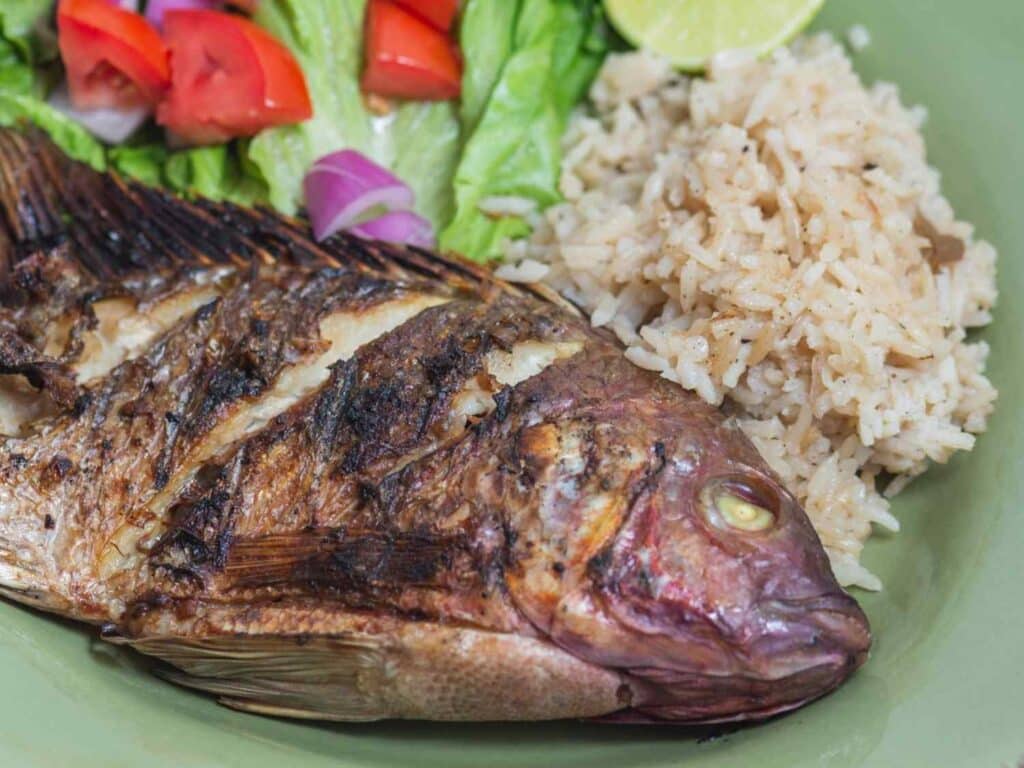
The artisan market, officially called Mercado de Artesanias Miguel Aleman Valdes, is located in front of the Port. This is one of the best places to visit in Veracruz Mexico because in addition to the typical vendors, you will see local dance and music performances at night. And you’ll also get plenty of street food.
3. Aquarium
For families looking for educational places to visit in Veracruz, head to the Aquarium del Puerto de Veracruz. The aquarium is located in Plaza Acuario, a local shopping mall, next to Playa Villa del Mar. It features exhibits which focus on the local flora and fauna of the Veracruz coral reef system.
The aquarium is a great option for family friendly attractions in Veracruz. Your family will enjoy learning about sea life, especially the turtles, which are native to the Veracruz area. The aquarium is free on Tuesdays.
4. Ripley’s and Museo de Cera
If you’re looking for some unique Veracruz points of interest after your visit to the aquarium, head to the Ripley's Believe It or Not Museum and nearby Museo de Cera (the wax museum). Both are located in the same plaza.
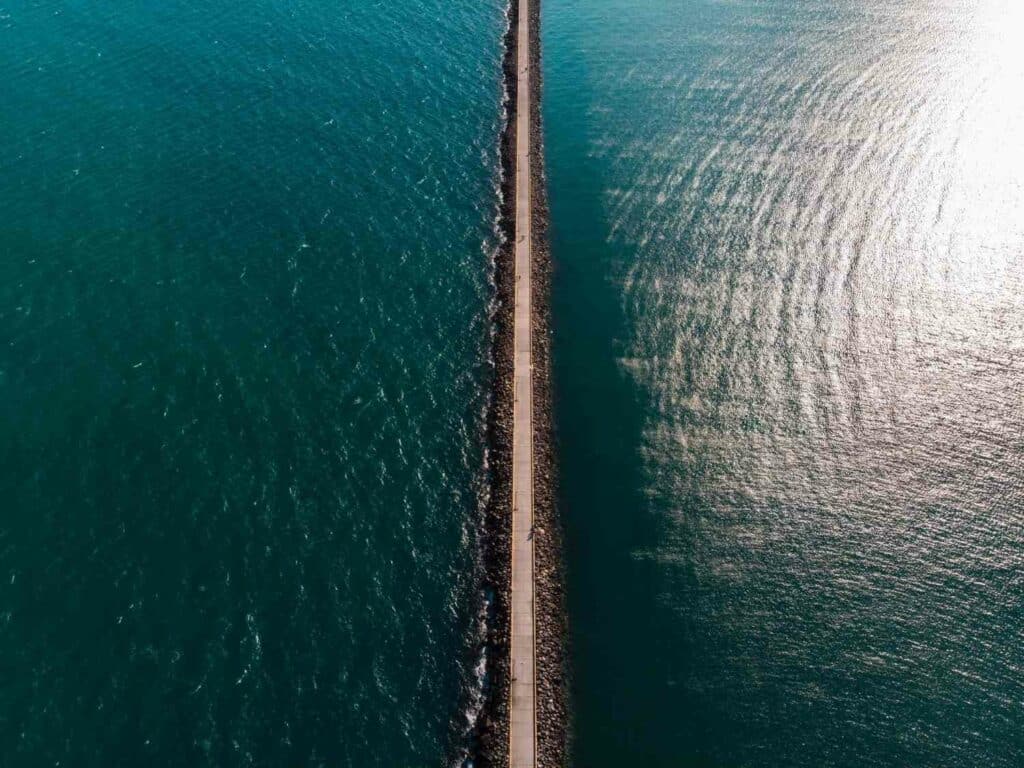
You’ll also find a small food court in the plaza. Additionally, in front of the plaza, you can buy tickets for double decker tourist buses that take you around the historic downtown area.
Alternatively, you can book your double decker tourist bus ahead of time online to get a panoramic tour of all the places to visit in Veracruz.
Panoramic Sightseeing Tour of Veracruz
5. Playa Villa del Mar
Playa Villa del Mar is one of the most popular beaches in the Port of Veracruz, and also one of the best beaches in Veracruz. It hosts over 20 local, authentic restaurants right on the shore for visitors to enjoy. Restaurants and palapas are located along the beach where you can rent tables outright, or by consuming food or drink off the menu of traditional Veracruz dishes.
For families looking for some water-themed places to visit in Veracruz, you can find vendors selling Veracruz sightseeing tours to Cancuncito (an area just a few miles offshore which is unusually shallow due to a hurricane a couple decades ago). It is called Cancuncito because of the white sand and transparent water that appear just like Isla Mujeres or the beaches of Cancun. Vendors sell spots on collectivos (group trips) which include a tour of the local area and a visit in front of Isla de las Sacrificios (Sacrifice Island).
6. Playa Marti
If you’re looking for more low key and off the beaten path Veracruz tourist attractions, head to Playa Marti. This is a small local beach where you can find competitive soccer games most nights.
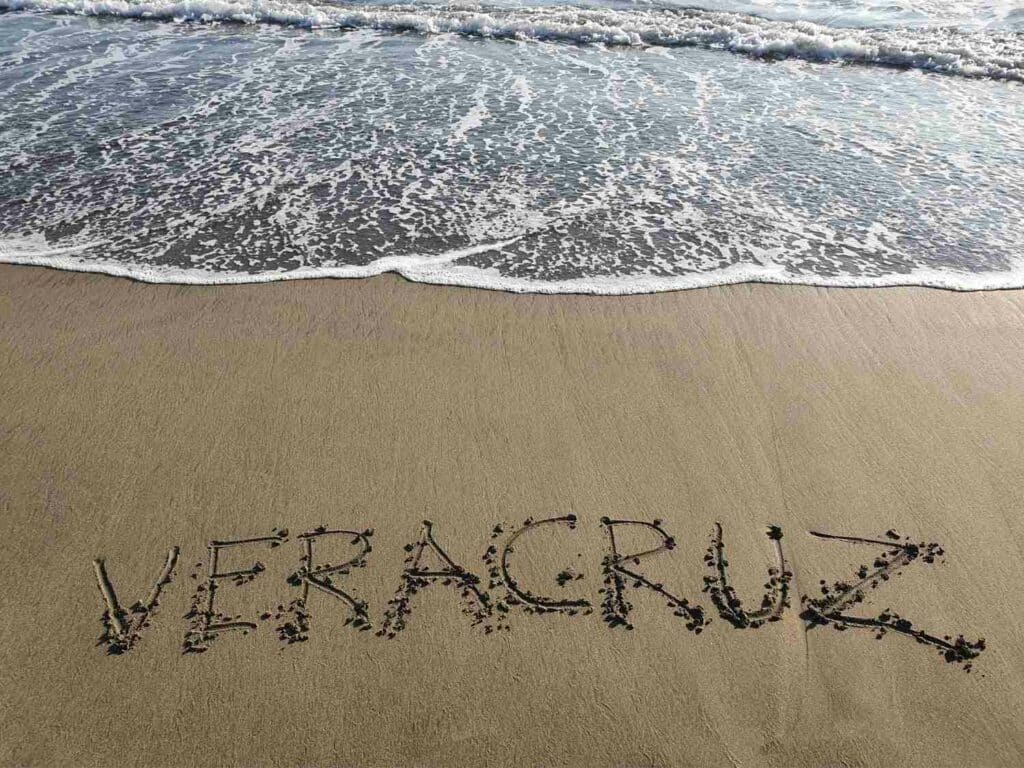
On the malecon directly in front of the beach is a new, large playground area for small children. Free, public workout equipment is located 2 blocks north for teens and adults. This beach is a hidden gem among all the places to visit in Veracruz!
7. Carnaval
One of the fun things to do in Veracruz Mexico in early spring is to experience Carnaval. Veracruz Port has the largest Carnaval celebration outside of Brazil.
The date for Carnaval changes each year as it follows a religious calendar, but is usually held in February/March. Similar to Mardi Gras in the United States, there are nightly Carnaval parades along the malecon. A family-friendly parade is always scheduled for Sunday morning, and is usually free of charge.
In addition, you can attend free concerts and the crowning of the King and Queen of Carnaval. The beaches of Veracruz are some of the best places to visit in Veracruz during Carnaval. Along the main boulevard in front of the local beaches you’ll find vendors selling street food, beer, and souvenirs during the week-long festival.
8. Zocalo
Another must for Veracruz things to do is to visit the Zocalo. The historical center of the city, the Zocalo is located near the northern end of the malecon and is the site of many weekly cultural events.
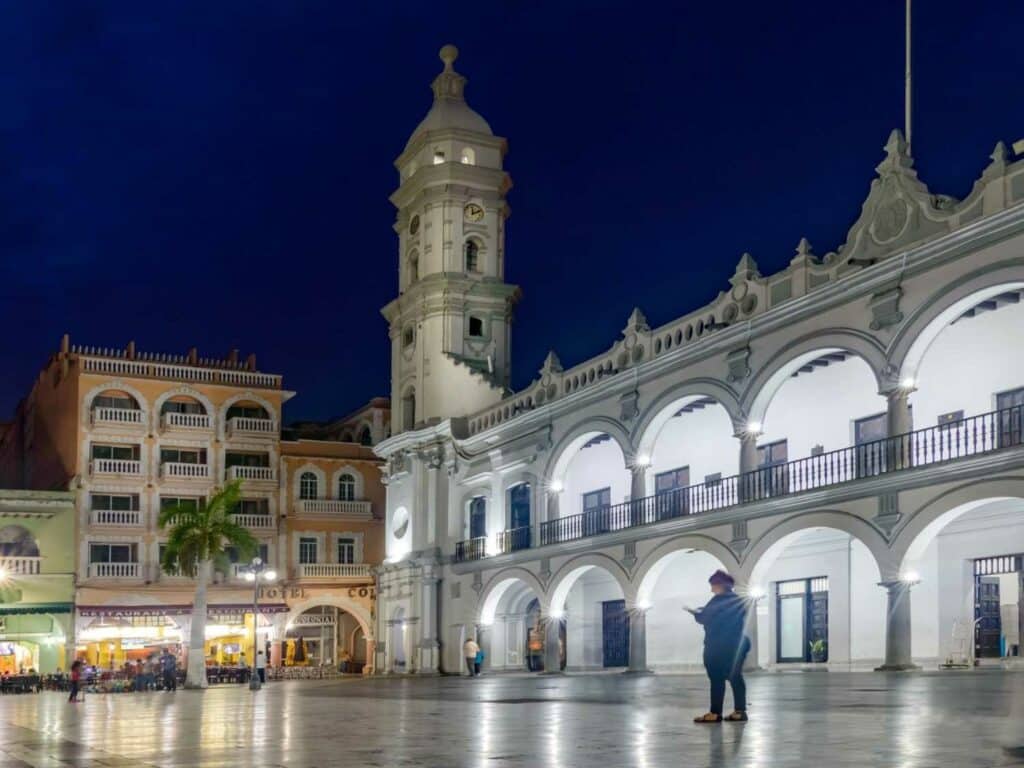
The Palacio Municipal (or local town hall) is located in the center of the town square and is a great local option for places to visit in Veracruz. It is surrounded by local family friendly restaurants/bars. There is a large fountain in the center, surrounded by benches and street vendors selling everything from Cuban cigars to ice cream. On the weekends, you can listen to live music and watch locals dancing.
9. Parque Zaragoza
Zaragoza Park is one of the best family friendly places to visit in Veracruz. It is located next to the local market, where you can eat at many of the authentic food stalls, or buy meat, fruit, and vegetables at local prices.
Recently remodeled, the park is home to playground equipment for small children, as well as family bicycles and remote control Power Wheel rentals. On the weekends, the park is lined with bouncy houses where kids can jump and play for a small fee ($10-20 pesos per 15 minutes).
10. Other places to visit in Veracruz Port
For families who have longer than a few days for their vacation, here is a list of other places to visit in Veracruz that are perfect for learning about the culture and history of the city.
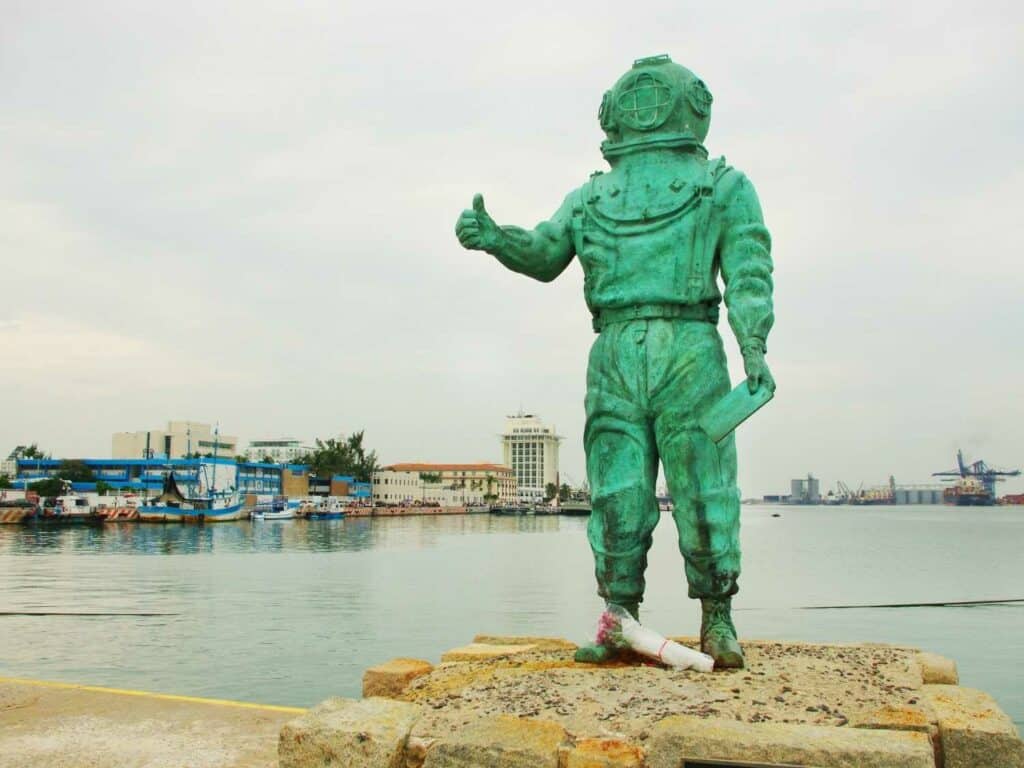
- San Juan de Ulua: a historic Spanish fortress with a museum
- Naval History Museum: a museum showcasing the naval history of Mexico
- Museo de la Ciudad: a museum showcasing the history of the city of Veracruz
Book this sightseeing tour to pack in multiple places to visit in Veracruz into one action-packed day:
Veracruz City Sightseeing Tour, San Juan de Ulúa Castle & Aquarium
Day Trips from Veracruz Port
If you’re looking for more places to visit in Veracruz, why not take a day trip from Veracruz Port? Day trips give families a chance to see more of Veracruz state and experience life outside of the city. Take a look at these great day trip ideas for places to visit in Veracruz state.
11. Historical day trips from Veracruz Port
Veracruz is one of the first cities colonized by Spain in the 1500s. But prior to the arrival of the Spanish, Veracruz state was home to a diverse population of indigenous groups, according to the site, Indigenous Mexico .
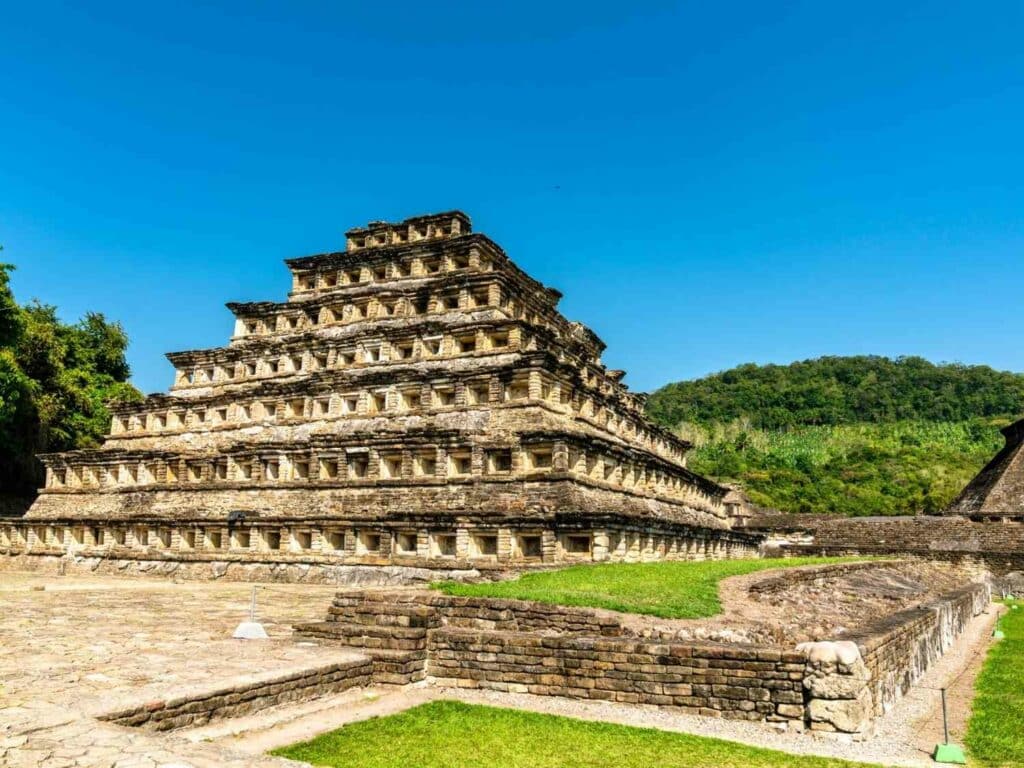
There are many places to visit in Veracruz where families can learn about pre-colonial and colonial history of the area. Families can visit the archeological site of El Tajin , a 3 hour drive from Veracruz Port, to learn about pre-colonial history.
Book one of these tours of El Tajin for your family:
Magic Town - Papantla And Tajin In Veracruz
El Tajín Ruins and Papantla Day Trip from Veracruz
Tajin And Papantla Tour From Veracruz Or Boca Del Rio
Additionally, families can visit the town of Tlacotalpan, a UNESCO World Heritage Site, which is 2 hours from Veracruz Port by car.
Book this day trip to Tlacotalpan from Veracruz:
Tlacotalpan World Heritage Site and Alvarado Day Trip
You can also visit some of Veracruz state’s Pueblos Magicos (Magic Towns), by booking this tour. Coatepec is known for its coffee cultivation, while Xico has plenty of delicious local cuisines that families must try.
Xalapa with the Magic Towns of Coatepec and Xico
12. Anton Lizardo
Anton Lizardo is a sleepy fishing village located about 20 minutes to the south of Veracruz Port/Boca del Rio. It is home to some of the calmest waters in the state of Veracruz, so it is extremely popular for families with kids of all ages And it's a great option for places to visit in Veracruz state. Palapas and restaurants line the beach where you can rent tables outright for $150-$200 pesos or by consuming food and drink from the menu.
Get a FREE Mexico packing list!
Sign up for the Mexico Travel Tuesday newsletter and instantly get a FREE packing checklist for your Mexico vacation.
Anton Lizardo has a population of less than 5,000 residents, with a large chunk belonging to the local navy school. There are limited hotel options in the area as a result (most families will drive down from Boca del Rio for the day and drive home).
One recommendation, however, is Java John´s Suites . The owner is an expat originally from Texas, who speaks English and Spanish. He offers family-friendly rooms at an affordable price ($25-35 USD per night) and just 1 block from the sea.
13. Isla de Enmedio
Isla de Enmedio is a small island and protected turtle sanctuary located just 15 minutes off the coast of Anton Lizardo. So small, you can walk around the perimeter in less than half an hour. Its pristine, virgin beaches rival even the beaches in the Riviera Maya.
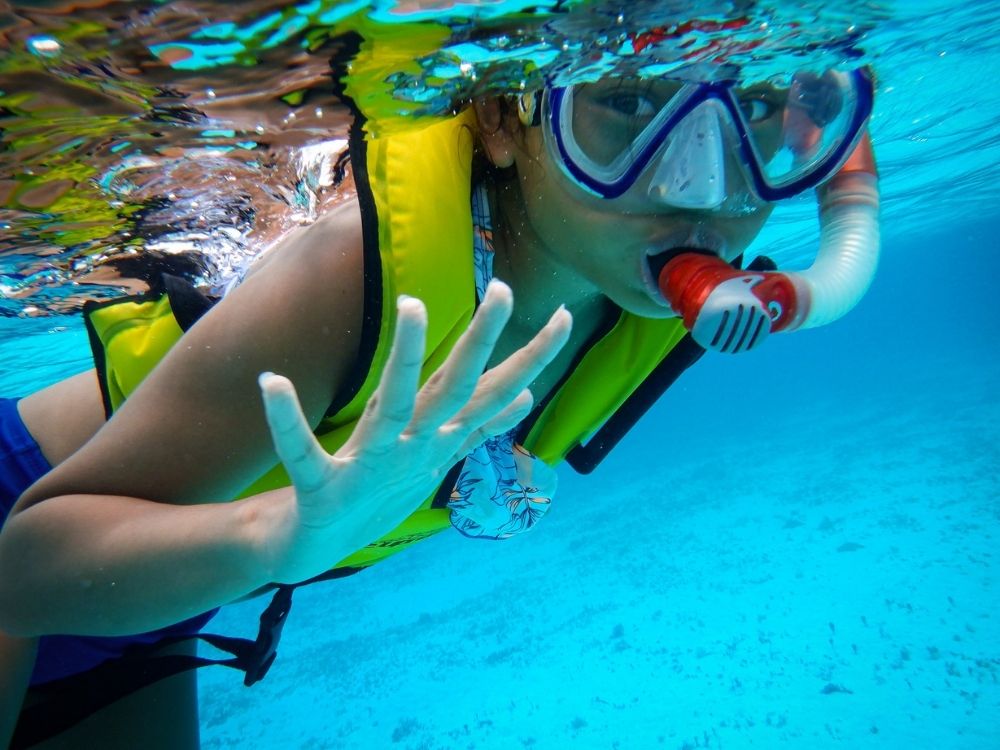
Around 2018, a group of local visitors had an unauthorized party on the island, leading to the destruction of endangered sea turtle eggs. As a result, the island was closed off to visitors for almost a year.
It reopened with new regulations to the public. Visitors may only stay under the supervision of the boat captain, cannot disturb the local wildlife, and things like speakers and beach umbrellas are banned to protect the turtle eggs. Now, visitors are allowed back on the island where they can swim and snorkel for 3-4 hours on group or private tours. For families looking for places to visit in Veracruz state for snorkeling, this place is a must!
Local vendors on the beach in Anton Lizardo sell spots on collectivos to visit the island on the beaches in Anton Lizardo for around $750 pesos per person. Children under 5 years old are not currently permitted to visit.
14. Orizaba
Orizaba is a Pueblo Magico (Magical Town) located about 2 hours from Veracruz Port by bus. Buses run every 1-2 hours from the main ADO bus station in town for about $11 USD. Located higher above sea level than the Port, Orizaba is typically 10-15 degrees cooler than the hot, tropical weather along the coast.

Want to get inspired to travel?
Grab a copy of Born to Travel: Wanderlust Families That Collect Passport Stamps Instead of Toys to read amazing stories from traveling families.
The downtown area is walkable and very safe, so it's a great option for places to visit in Veracruz state. Within a 6-square block radius, you will find:
- Parque Alameda (Alameda Park)
- Teleferico (cable cars that bring tourists up to the EcoParque Cerro del Borrego )
- EcoParque Cerro del Borrego (clearing where the Pico de Orizaba (Orizaba mountain peak) is visible)
- Artisan markets
- Main municipal market
- River Walk, where you can see various zoo animals and art exhibits as you walk along the river.
- Palacio del Hierro (Iron Palace)
15. Theme parks near Veracruz
A short 10-minute taxi ride from Orizaba will bring you to 2 of the town’s biggest attractions for kids:
Expo Parque de los Dinosaurios (the Dinosaur Park) features real life sized dinosaurs inspired by the movie Jurassic Park. Kids can climb into the airplane and jeep for pictures, and take pictures in front of T-Rex and other famous dinosaurs. Admission is free of charge.
Parque de las Sonrisas (Smile Park) is a free park located 200 meters from the Dinosaur Park. It is made from completely recycled material. All of the attractions are part of a typical city and include fire trucks, ambulances, schools, trains and stations, etc.
These fun places to visit in Veracruz state are perfect for families with very young kids.
Read up on these Mexico travel tips before your trip.
Is Veracruz worth visiting?
While Veracruz city isn't as easily accessible as Cancun or other tourist hotspots in Mexico, it remains an authentic Mexican destination where you can immerse yourself in the local culture. You can also try all of the traditional food of Veracruz. And of course, practice your Spanish language skills with friendly locals. You can even get a head start with these basic Spanish phrases !
Veracruz is the perfect family vacation destination. Families can visit parks, encounter the best beaches in Veracruz, and experience other Veracruz Mexico tourist attractions for children and teens of all ages.
Take a look at these Mexico guidebooks to research some of the best places to visit in Veracruz:
Lonely Planet Mexico (Travel Guide)
DK Eyewitness Mexico (Travel Guide)
Read other Gulf Coast posts here .
How to get to Veracruz
The port city of Veracruz is located within the state of Veracruz, situated along the Gulf of Mexico, in central/southern Mexico. It is a 5 hour bus ride from Mexico City and 2 hours from Puebla. From Veracruz state’s capital city, Xalapa, Veracruz Port is about 90 minutes by bus or car.
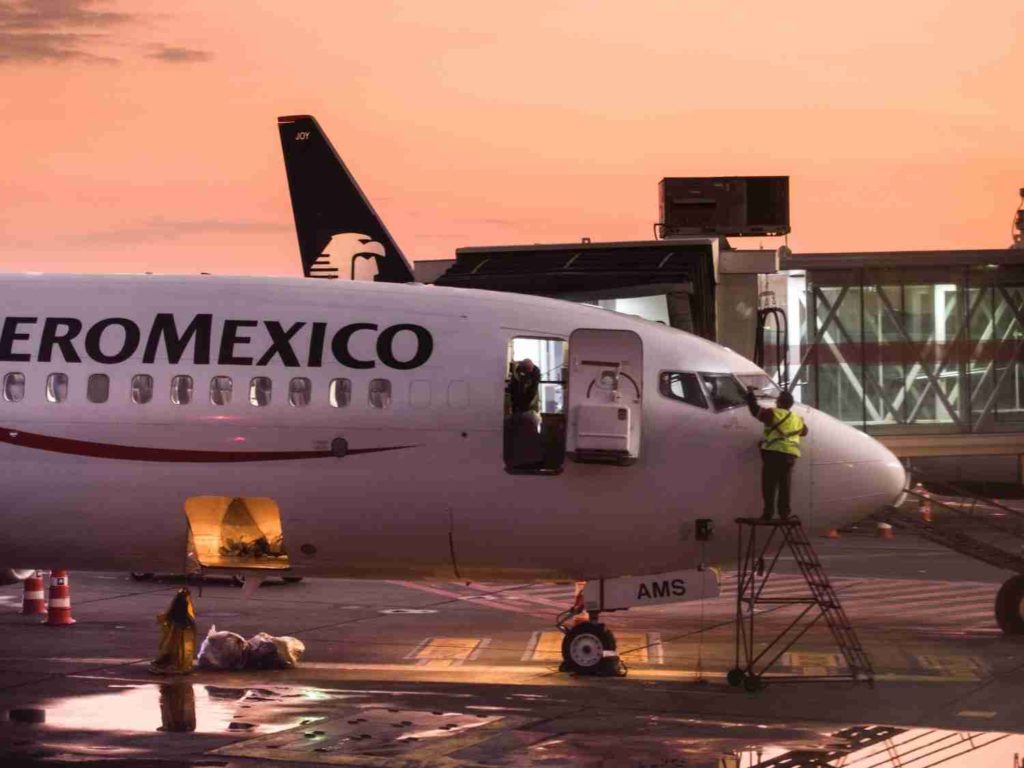
Veracruz is not a major international tourist destination due to a limited availability of direct, international flights. However, you can find direct flights to Veracruz from Houston, Texas.
The majority of the flights into Veracruz run through Mexico City. So you’ll find that most of the Veracruz Mexico tourism comes from Mexicans traveling from Mexico City, Puebla, and the surrounding areas. Daily domestic flights from Mexico City and Cancun are less than 2 hours in total flight time.
If you’re planning to rent a car to get to all the places to visit in Veracruz, you can book a car rental through Avis for pick up at the Veracruz airport.
How safe is Veracruz Mexico?
Veracruz is one of the safest cities to visit in Mexico. The city has moderately low crime and safety rates, according to Numbeo . And according to the website, Crimen en Mexico , which takes crime and homicide data from the Mexican government, Veracruz has some of the lowest crime rates in the country.
What this means for families is that Veracruz is a great place to visit with kids. Families know they’ll be safe adventuring through all the places to visit in Veracruz on their next trip to Mexico.
Is Mexico safe? Read this post to find out.
Enjoy all the places to visit in Veracruz with kids!
The city of Veracruz is rich with history and culture for families to learn about. And the area surrounding Veracruz Port is just as amazing! This list of places to visit in Veracruz is an excellent way to get a taste of the city's history and culture.
Come here to immerse yourself in the local culture and language, make friends for life, and eat the best regional food in Mexico. While in Veracruz, make sure to try all of the local antojitos like picadas , empanadas , and chiles rellenos .
Whether you decide to stay in the Veracruz Port/Boca del Rio metropolitan area or venture into other parts of the state, you will find many affordable and family friendly places to visit in Veracruz!
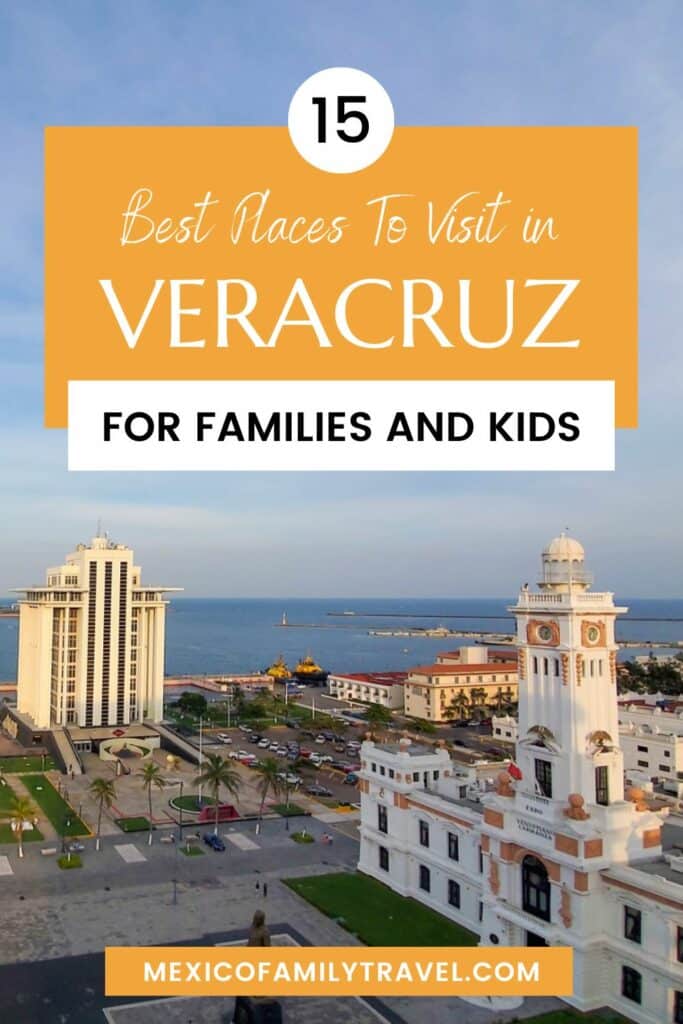
Want to visit more coastal cities in Mexico? Take a look at these posts:
The Top 12 Memorable Progreso Activities and Progreso Excursions
9 Amazing Things To Do In Puerto Vallarta With Kids
About the author
Sara Tyler has lived in Mexico since 2010 and currently resides in Boca del Rio, Veracruz with her partner and 2 daughters, ages 3 and 6. She is the founder of Nomad Publishing , which helps aspiring authors share their travel experiences in bestselling books. She also organizes TEDxBocadelRio annually.
Sara is the author and publisher of the book, Born to Travel: Wanderlust Families that Collect Passport Stamps Instead of Toys .
Sharing is caring!
Related Mexico Posts
Sign up to get mexico travel tips in your inbox.

Is Veracruz Safe? Your Complete 2024 Guide by an Expat
Is Veracruz safe? Like most Mexican states, Veracruz is a safe place to travel to as long as you use the same common sense precautions as you would anywhere else in the world. Veracruz is far from the most usual Latin American travel destination but places like the cultured capital of Xalapa, the witchcraft city of Catemaco, and the coffee-growing region of Córdoba are rewarding places to visit for those who enjoy venturing off the beaten path.
Veracruz is a state in eastern Mexico that borders the Gulf of Mexico. It shares its borders with Chiapas , Oaxaca, Tabasco, San Luis Potosí, Hidalgo, Puebla, and Tamaulipas. With its rich history, beautiful landscapes, and cultural attractions, Veracruz has plenty to offer.
Table of Contents
Is Veracruz Safe to Travel to in 2024?

Veracruz is safe to travel to, provided that you practice situational awareness and take precautions for your safety. Safety is something that a lot of people worry about when they travel to Mexico for the first time as the country does not have the best reputation internationally.
A lot of this is unwarranted and over-exaggerated. More than 25 million international tourists travel to Mexico every single year and most visits are trouble-free.
While violent crime has been an issue in Veracruz in recent years, incidents are usually restricted to things happening between organized crime groups, rather than random acts of violence that affect tourists. This article, written by a British expat Travel Writer based in Mexico provides a logical look at how you can stay safe during your trip to Veracruz.
Review your government travel advice for Veracruz Mexico

It is a good idea to check your government travel advice before traveling to any new country and the same rings true for planning your first trip to Veracruz. The U.S. Department of State advice appears quite sternly worded, but it is a good source of information as it provides a state-by-state breakdown of the safety situation in different parts of Mexico.
Via the U.S. State Department travel safety guidance, Mexican states are broken down into four different categories. States are recognized as places that you should exercise normal precautions when traveling to, places that you should exercise increased precautions when traveling to, states you should reconsider traveling to, and states that you should not travel to at all.
Campeche and the Yucatan are the safest Mexican states and the only two places on the ¨exercise normal precautions¨ list. Veracruz is marked as somewhere where you should ¨exercise increased caution¨.
The United States government travel advice states:
¨Violent crime and gang activity occur with increasing frequency in Veracruz, particularly in the center and south near Cordoba and Coatzacoalcos. While most gang-related violence is targeted, violence perpetrated by criminal organizations can affect bystanders. Impromptu roadblocks requiring payment to pass are common.¨
It is a good idea to keep checking the US government advisory page prior to and during your trip. Any developments will be updated here in real time.
The UK government travel advice for Mexico is a little more liberal than its US counterpart. The page is updated periodically and there are no travel warnings or issues mentioned for Veracruz.
Crime rates in Veracruz Mexico

The Numbeo crime index awards various global cities with a safety rating out of 100 based on how safe the local residents feel. (With 0 being incredibly safe and 100 being dangerous.)
Veracruz City boasts a moderate crime rating of 57.61, with some locals concerned that crime has been on the rise in the last three years. To get more of an understanding of the numbers, we can compare this to crime ratings in other Mexican and US cities.
Merida is the safest city in Mexico and it has a crime rating of just 25.16. Cancun has a crime rating of 56.16 and Guadalajara has a crime rating of 62.14.
If we compare this to US cities, Los Angeles has a crime rating of 52.64, New York has a crime rating of 49.43 and Atlanta has a crime rating of 64.09.
A 2022 study by INEGI (National Institute of Statistics and Geography) found that the most common crime was robbery or assault on the street or on public transport. To avoid being a victim of this, avoid wearing designer items or walking around with expensive electronics on display.
Always be aware of your surroundings and don’t walk down sketchy-looking alleyways in unfamiliar areas or walk alone at night.
Veracruz Mexico Safety Tips for 2024

There are a couple of precautions that you can follow to help yourself stay safe in Veracruz. A lot of these things are common sense measures that you should follow anywhere but they are worth reiterating here.
Always keep an eye on your personal belongings
As a tourist in Veracruz, your biggest risk is that of being a victim of an opportunistic petty crime. (E.g. someone snatching your backpack by its strap or taking a phone/wallet from your back pocket.)
It is easy to avoid giving these people an opportunity. In crowded areas and marketplaces like Mercado Hidalgo in Veracruz City, consider walking with your bag in front of you rather than slung over one shoulder.
Never leave anything valuable in your back pocket. If you go to a coffee place or restaurant, always take your laptop/tablet, etc with you when you go to the bathroom or to the counter rather than asking a tablemate to look after them for you.
If you travel frequently, you might want to consider investing in a theft-proof backpack like those offered by Pacsafe. Theft-proof bags are a little more expensive than regular backpacks but they come with long-term warranties and additional safety features.
(For instance, they are slash-proof, waterproof, and come with TSA-approved locking devices).
Is Veracruz safe at night?
An INEGI study found that only 4 out of 10 residents of Veracruz feel safe walking around in their hometown at night. Veracruz in general, is one of a handful of Mexican states where the inhabitants feel the most uncomfortable in the country.
This perspective is worth keeping in mind as as a tourist, you are more likely to stand out and attract attention. Still, Veracruz City, in particular, offers a vibrant, varied nightlife scene that has something for every musical taste and budget.
It would be a shame to miss out on this out of fear and there are ways that you can experience Veracruz by night safely. The Veracruz boardwalk (Malecon) is one of the most famous tourists hot spots in the city.
This seafront promenade is lined with bars, restaurants, and cafes. It is a great place to watch the sunset over the Gulf of Mexico and whatever time of day you happen to stop by, it is usually filled with people cycling, rollerblading, and taking romantic walks.
At night, many of the buildings here are illuminated in different colors. Club Havana (Blvd. Manuel Ávila Camacho 11, Costa Verde) is a Veracruz institution and a local hotspot on Friday and Saturday nights.
The club plays host to live bands and DJs playing Cuban and Caribbean rhythms. Its decor is inspired by the old-fashioned Havana style.
A few blocks from the boardwalk, you will find the more understated Bar El Estribo (Independencia 1115). This elegant, old-fashioned bar is set inside a historic 19th-century building and retains its original decor and designs. The in-house mixologists here prepare some of the very best cocktails in town.
Try not to be paranoid and enjoy your trip!
It is easy to worry yourself into a frenzy when you are traveling somewhere new for the first time – especially if that somewhere is a place like Mexico that doesn’t always have the best reputation for safety. But if you spend your entire trip looking over your shoulder and being paranoid, you won’t be able to fully appreciate and enjoy the experience.
Read up on the latest safety developments and be aware of what is going on around you but try and focus your energy on having a good time.
Safe places to visit in Veracruz
Veracruz City (Heroica Veracruz) is a wonderful place to see and explore.
The Zocalo is the city’s main square, flanked by the impressive 18th-century baroque Catedral de Nuestra Señora de la Asunción (Cathedral of Our Lady of the Assumption) and the neoclassical Palacio Municipal (City Hall) – one of the oldest city halls in Mexico.
It is pleasant to sit beneath the cabanas of the bars and restaurants that circle the square and enjoy a Veracruzan mint julep cocktail or some traditional cuisine while watching marimba music in the historic center. The Museo de la Ciudad (Av. Ignacio Zaragoza 397) tells the history and development of Veracruz through the ages.
It is also possible to visit the old Spanish fortifications at Castillo de San Juan de Ulúa and the 17th-century Baluarte de Santiago. Catemaco, some three hours east of Veracruz City, is one of the most unique places to visit in all of Mexico.
Catemaco is known for its brujeria – people that are still involved in witchcraft. Mexicans and international travelers come from far and wide to have their fortunes read, receive a blessing, or shop for potions at local mystic mercados.
On the first Friday of each March, Catemaco celebrates the Noche de Brujas (night of the witches) – a supernatural, spiritual festival.
Food safety in Veracruz
Sampling the local cuisine is as much of a highlight of a trip to Mexico as seeing the sights and exploring. Different parts of Mexico are home to different regional delicacies and there are a few specialties that you should absolutely add to your radar while you are in Veracruz.
Being close to the sea means that seafood and shellfish play a prominent role in the local cuisine. Huachinango a la Veracruzana (Veracruz-style red snapper) is essentially the most famous regional dish.
Jaiba (a Veracruzan crab dish), shrimp empanadas, arroz a la tumbada (the local answer to paella)and Crab Chilpachole (a spicy crab and chili soup) are all well worth trying. Restaurante Fussion (Av. 1º de Mayo 632) is a great spot in town where you can try traditional Veracruz recipes with a modern twist.
Some people associate traveling in Mexico with the idea of getting sick, especially when it comes to street food. But dining out at street food stalls and markets doesn’t mean that you are destined to get ill.
You will find street food stalls on virtually every street corner in Veracruz City and other towns and villages. The Malecon is filled with street vendors selling everything from jaiba to esquites, tacos, and burritos.
If somewhere is busy, with a line of people waiting beside it, it is usually a good indicator that the food is good quality and safe to eat. If you encounter a stall where it looks like the meat/fruit/veg has been left around or there are flies, move on. (That probably doesn’t look appealing anyway!)
Taking cabs in Veracruz
Unfortunately as of 2024, Uber and other ridesharing apps are not currently available in Veracruz. (Uber has operated here in the past and things may change in the future).
As a tourist, it is always safer to have your hotel receptionist/concierge order a cab for you via a trusted local firm rather than wandering into a random street cab. Unscrupulous taxi drivers in Veracruz and other parts of Mexico have been known to overcharge unsuspecting tourists.
Can you drink the water in Veracruz?
You cannot drink tap water in any part of Mexico, including Veracruz. Although the water is purified at the source, it often gets contaminated en route to your tap and may be filled with bacteria and other parasites.
Even the locals do not drink it. Your hotel/Airbnb will likely provide you with a couple of complimentary bottles of mineral water when you check-in. From there, you can buy large, multi-liter bottles of water from Oxxo, 7/11, and other convenience stores.
Is Veracruz safe for solo travelers?
Veracruz state and the port city of Veracruz are safe travel destinations for solo travelers, including solo female travelers. You should never let your gender or the fact that you are traveling alone put you off from visiting somewhere. (This entire website has been written by a solo female traveler based in Mexico!)
Still, it is important to be even more alert if you are exploring solo as you have the potential to be more of a target. Be wary of over-friendly strangers and don’t be naive if someone overly nice approaches you.
Purchase comprehensive travel insurance for your trip
It is prudent to purchase comprehensive travel insurance before traveling anywhere, including Mexico. Unfortunately, despite our best planning and caution, we can never know what is around the corner, and even in Mexico, medical costs and the costs of receiving assistance overseas can quickly add up.
A good plan will include at least $250k USD of medical coverage. It will also cover you for things like loss/theft of luggage, repatriation, and adventure sports. Always check the small print as some policies class things like hiking as adventure sports that are not included in their standard plans.
Violent crime in Veracruz
Drug-related violence happens across Mexico and it can be alarming to read about. However, incidents that take place between drug cartels do not target tourists.
Although technically you could say that there is a risk of an innocent bystander being caught in violent clashes, the chances of this happening are beyond minimal. The Mexican government goes above and beyond to make sure that tourist areas of Mexico are safe for international visitors.
This applies to the port of Veracruz, Xalapa, and other places across the state.
Cartel activity is mostly confined to rural areas. As a tourist, you are not likely to find yourself in dangerous areas accidentally, anywhere of tourist interest is safe.
Is Veracruz Mexico safe? Final thoughts
The Mexican state of Veracruz is a relatively safe place to travel to with precautions. Don’t do anything that you wouldn’t do at home or elsewhere and you should be fine during your trip.
If this is your first time visiting Mexico, you might also enjoy browsing through these Mexico travel tips. Have a safe trip to Veracruz and enjoy your time in Mexico! Xo
Melissa Douglas
Update May 10, 2024
Information for u.s. citizens in the middle east.
- Travel Advisories |
- Contact Us |
- MyTravelGov |
Find U.S. Embassies & Consulates
Travel.state.gov, congressional liaison, special issuance agency, u.s. passports, international travel, intercountry adoption, international parental child abduction, records and authentications, popular links, travel advisories, mytravelgov, stay connected, legal resources, legal information, info for u.s. law enforcement, replace or certify documents.
Share this page:
Mexico Travel Advisory
Travel advisory august 22, 2023, mexico - see state summaries.
Reissued after periodic review with general security updates, and the removal of obsolete COVID-19 page links.
Country Summary: Violent crime – such as homicide, kidnapping, carjacking, and robbery – is widespread and common in Mexico. The U.S. government has limited ability to provide emergency services to U.S. citizens in many areas of Mexico, as travel by U.S. government employees to certain areas is prohibited or restricted. In many states, local emergency services are limited outside the state capital or major cities.
U.S. citizens are advised to adhere to restrictions on U.S. government employee travel. State-specific restrictions are included in the individual state advisories below. U.S. government employees may not travel between cities after dark, may not hail taxis on the street, and must rely on dispatched vehicles, including app-based services like Uber, and regulated taxi stands. U.S. government employees should avoid traveling alone, especially in remote areas. U.S. government employees may not drive from the U.S.-Mexico border to or from the interior parts of Mexico, except daytime travel within Baja California and between Nogales and Hermosillo on Mexican Federal Highway 15D, and between Nuevo Laredo and Monterrey on Highway 85D.
Read the country information page for additional information on travel to Mexico.
Do Not Travel To:
- Colima state due to crime and kidnapping .
- Guerrero state due to crime .
- Michoacan state due to crime and kidnapping .
- Sinaloa state due to crime and kidnapping
- Tamaulipas state due to crime and kidnapping.
- Zacatecas state due to crime and kidnapping .
Reconsider Travel To:
- Baja California state due to crime and kidnapping .
- Chihuahua state due to crime and kidnapping .
- Durango state due to crime .
- Guanajuato state due to crime and kidnapping .
- Jalisco state due to crime and kidnapping .
- Morelos state due to crime .
- Sonora state due to crime and kidnapping .
Exercise Increased Caution When Traveling To:
- Aguascalientes state due to crime .
- Baja California Sur state due to crime .
- Chiapas state due to crime .
- Coahuila state due to crime .
- Hidalgo state due to crime .
- Mexico City due to crime .
- Mexico State due to crime .
- Nayarit state due to crime.
- Nuevo Leon state due to crime and kidnapping .
- Oaxaca state due to crime .
- Puebla state due to crime and kidnapping .
- Queretaro state due to crime .
- Quintana Roo state due to crime .
- San Luis Potosi state due to crime and kidnapping .
- Tabasco state due to crime .
- Tlaxcala state due to crime .
- Veracruz state due to crime .
Exercise Normal Precautions When Traveling To:
- Campeche state
- Yucatan state
Visit our website for Travel to High-Risk Areas .
If you decide to travel to Mexico:
- Keep traveling companions and family back home informed of your travel plans. If separating from your travel group, send a friend your GPS location. If taking a taxi alone, take a photo of the taxi number and/or license plate and text it to a friend.
- Use toll roads when possible and avoid driving alone or at night. In many states, police presence and emergency services are extremely limited outside the state capital or major cities.
- Exercise increased caution when visiting local bars, nightclubs, and casinos.
- Do not display signs of wealth, such as wearing expensive watches or jewelry.
- Be extra vigilant when visiting banks or ATMs.
- Enroll in the Smart Traveler Enrollment Program (STEP) to receive Alerts and make it easier to locate you in an emergency.
- Follow the Department of State on Facebook and Twitter .
- Follow the U.S. Embassy on Facebook and Twitter .
- Review the Country Security Report for Mexico.
- Mariners planning travel to Mexico should check for U.S. maritime advisories and alerts , which include instructions on reporting suspicious activities and attacks to Mexican naval authorities.
- Prepare a contingency plan for emergency situations. Review the Traveler’s Checklist .
- Visit the CDC page for the latest travel health information related to your travel.
Aguascalientes state – Exercise Increased Caution
Exercise increased caution due to crime.
Criminal activity and violence may occur throughout the state.
There are no restrictions on travel for U.S. government employees in Aguascalientes state.
Baja California state – Reconsider Travel
Reconsider travel due to crime and kidnapping.
Transnational criminal organizations compete in the border area to establish narco-trafficking and human smuggling routes. Violent crime and gang activity are common. Travelers should remain on main highways and avoid remote locations. Of particular concern is the high number of homicides in the non-tourist areas of Tijuana. Most homicides appeared to be targeted; however, criminal organization assassinations and territorial disputes can result in bystanders being injured or killed. U.S. citizens and LPRs have been victims of kidnapping.
U.S. government employees must adhere to the noted restrictions:
- Mexicali Valley: U.S. government employees should avoid the Mexicali Valley due to the heightened possibility of violence between rival cartel factions. The boundaries of the restricted area are: to the east, the Baja California/Arizona and Baja California/Sonora borders; to the south, from La Ventana (on Highway 5) due east to the Colorado River; to the west, Highway 5; and to the north, Boulevard Lazaro Cardenas/Highway 92/Highway 1 to Carretera Aeropuerto, from the intersection of Highway 1 and Carretera Aeropuerto due north to the Baja California/California border, and from that point eastward along the Baja California/California border.
- Travelers may use Highways 2 and 2D to transit between Mexicali, Los Algodones, and San Luis Rio Colorado during daylight hours. Travelers may also use Highways 1 and 8 to transit to and from the Mexicali Airport during daylight hours. Travel on Highway 5 is permissible during daylight hours.
There are no other travel restrictions for U.S. government employees in Baja California state. These include high-traffic tourism areas of border and coastal communities, such as Tijuana , Ensenada , and Rosarito .
Baja California Sur state – Exercise Increased Caution
There are no restrictions on travel for U.S. government employees in Baja California Sur state.
Campeche state – Exercise Normal Precautions
Exercise normal precautions.
There are no restrictions on travel for U.S. government employees in Campeche state.
Chiapas state – Exercise Increased Caution
There are no restrictions on travel for U.S. government employees in Chiapas state.
Chihuahua state – Reconsider Travel
Violent crime and gang activity are common. Most homicides are targeted assassinations against members of criminal organizations. Battles for territory between criminal groups have resulted in violent crime in areas frequented by U.S. citizens and U.S. government employees, including restaurants and malls during daylight hours. Bystanders have been injured or killed in shooting incidents. U.S. citizens and LPRs have been victims of kidnapping.
U.S. government employee travel is limited to the following areas with the noted restrictions:
- Ciudad Juarez: U.S. government employees may travel to the area of Ciudad Juarez bounded to the east by Bulevar Independencia; to the south by De los Montes Urales/Avenida Manuel J Clouthier/Carretera de Juárez; to the west by Via Juan Gabriel/Avenida de los Insurgentes/Calle Miguel Ahumada/Francisco Javier Mina/Melchor Ocampo; and to the north by the U.S.-Mexico border. Direct travel to the Ciudad Juarez airport (officially called the Abraham González International Airport) and the factories located along Bulevar Independencia and Las Torres is permitted. Travel to San Jerónimo is permitted only through the United States via the Santa Teresa U.S. Port of Entry; travel via Anapra is prohibited.
U.S. government employees may only travel from Ciudad Juarez to the city of Chihuahua during daylight hours via Federal Highway 45, with stops permitted only at the Guardia Nacional División Caminos station, the Umbral del Milenio overlook area, the border inspection station at KM 35, and the shops and restaurants on Federal Highway 45 in the city of Ahumada.
- U.S. government employees may travel between Ciudad Juarez and Ascension via Highway 2.
- Nuevo Casas Grandes Area (including Nuevo Casas Grandes, Casas Grandes, Mata Ortiz, Colonia Juárez, Colonia LeBaron, Paquimé and San Buenaventura): U.S. government employees may travel to the Nuevo Casas Grandes area during daylight hours via Mexico Federal Highway 2, and subsequently Federal Highway 10, to Nuevo Casas Grandes. Employees are permitted to stay overnight in the cities of Nuevo Casas Grandes and Casas Grandes only.
- City of Chihuahua: U.S. government employees may travel at any time to the area of the city of Chihuahua bounded to the north by Avenida Transformación; to the east by Avenida Tecnológico/Manuel Gómez Morín/Highway 16/Blvd.José Fuentes Mares; to the west by the city boundary; and to the south by Periférico Francisco R. Almada.
- U.S. government employees may travel on Highways 45, 16, and 45D through the city of Chihuahua and to the Chihuahua airport (officially called the General Roberto Fierro Villalobos International Airport).
- U.S. government employees may travel to Santa Eulalia to the east of the city of Chihuahua, as well as to Juan Aldama via Highway 16 to the northeast.
- U.S. government employees may travel south of the city of Chihuahua on Highway 45 to the southern boundary of Parral, including each town directly connected to Highway 45, including Lázaro Cárdenas, Pedro Meoqui, Santa Cruz de Rosales, Delicias, Camargo, Ciudad Jiménez, and Parral itself.
- U.S. government employees may only travel on official business from the city of Chihuahua on Highway 16 to Ciudad Cuauhtémoc bounded by Highway 21 to the north and east, Highway 5 to the west, and Bulevar Jorge Castillo Cabrera to the south.
- Ojinaga: U.S. government employees must travel to Ojinaga via U.S. Highway 67 and enter through the U.S. Port of Entry in Presidio, Texas.
- Palomas: U.S. government employees may travel to Palomas via U.S. highways through the U.S. Port of Entry in Columbus, New Mexico, or via Highway 2 in Mexico.
U.S. government employees may not travel to other areas of Chihuahua, including Copper Canyon .
Coahuila state – Exercise Increased Caution
Violent crime and gang activity occur in parts of Coahuila state.
U.S. government employees must adhere to the following travel restrictions:
- Zaragoza, Morelos, Allende, Nava, Jimenez, Villa Union, Guerrero, and Hidalgo municipalities : U.S. government employees may not travel to these municipalities.
- Piedras Negras and Ciudad Acuña: U.S. government employees must travel directly from the United States and observe a curfew from midnight to 6:00 a.m. in both cities.
There are no other restrictions on travel for U.S. government employees in Coahuila state.
Colima state – Do Not Travel
Do not travel due to crime and kidnapping.
Violent crime and gang activity are widespread. Most homicides are targeted assassinations against members of criminal organizations. Shooting incidents between criminal groups have injured or killed bystanders. U.S. citizens and LPRs have been victims of kidnapping.
Travel for U.S. government employees is limited to the following areas with noted restrictions:
- Manzanillo: U.S. government employee travel is limited to the tourist and port areas of Manzanillo.
- Employees traveling to Manzanillo from Guadalajara must use Federal Toll Road 54D during daylight hours.
U.S. government employees may not travel to other areas of Colima state.
Durango state – Reconsider Travel
Reconsider travel due to crime.
Violent crime and gang activity are common in parts of Durango state.
- West and south of Federal Highway 45: U.S. government employees may not travel to this region of Durango state.
There are no other restrictions on travel for U.S. government employees in Durango state.
Guanajuato state – Reconsider Travel
Gang violence, often associated with the theft of petroleum and natural gas from the state oil company and other suppliers, occurs in Guanajuato, primarily in the south and central areas of the state. Of particular concern is the high number of murders in the southern region of the state associated with cartel-related violence. U.S. citizens and LPRs have been victims of kidnapping.
- Areas south of Federal Highway 45D: U.S. government employees may not travel to the area south of and including Federal Highway 45D, Celaya, Salamanca, and Irapuato.
There are no other restrictions on travel for U.S. government employees in Guanajuato state, which includes tourist areas in: San Miguel de Allende , Guanajuato City , and surrounding areas.
Guerrero state – Do Not Travel
Do not travel due to crime.
Crime and violence are widespread. Armed groups operate independently of the government in many areas of Guerrero. Members of these groups frequently maintain roadblocks and may use violence towards travelers. U.S. citizens and LPRs have been victims of kidnapping in previous years.
Travel for U.S. government employees is limited to the following area with the noted restrictions:
- Taxco: U.S. government employees must use Federal Highway 95D, which passes through Cuernavaca, Morelos, and stay within downtown tourist areas of Taxco. Employees may visit Grutas de Cacahuamilpa National Park during the day with a licensed tour operator.
U.S. government employees may not travel to other areas of the state of Guerrero, including to tourist areas in Acapulco , Zihuatanejo , and Ixtapa .
Hidalgo state – Exercise Increased Caution
There are no restrictions on travel for U.S. government employees in Hidalgo state.
Jalisco state – Reconsider Travel
Violent crime and gang activity are common in parts of Jalisco state. In Guadalajara, territorial battles between criminal groups take place in tourist areas. Shooting incidents between criminal groups have injured or killed innocent bystanders. U.S. citizens and LPRs have been victims of kidnapping.
- Jalisco-Michoacan border and Federal Highway 110: U.S. government employees may not travel to the area between Federal Highway 110 and the Jalisco-Michoacan border, nor travel on Federal Highway 110 between Tuxpan, Jalisco, and the Michoacan border.
- Federal Highway 80: U.S. government employees may not travel on Federal Highway 80 south of Cocula.
There are no other restrictions on travel for U.S government employees in Jalisco state which includes tourist areas in: Guadalajara Metropolitan Area , Puerto Vallarta (including neighboring Riviera Nayarit) , Chapala , and Ajijic .
Mexico City (Ciudad de Mexico) – Exercise Increased Caution
Both violent and non-violent crime occur throughout Mexico City. Use additional caution, particularly at night, outside of the frequented tourist areas where police and security patrol more routinely. Petty crime occurs frequently in both tourist and non-tourist areas.
There are no restrictions on travel for U.S. government employees in Mexico City.
Mexico State (Estado de Mexico) – Exercise Increased Caution
Both violent and non-violent crime occur throughout Mexico State. Use additional caution in areas outside of the frequented tourist areas, although petty crime occurs frequently in tourist areas as well.
There are no restrictions on travel for U.S. government employees in Mexico State.
Michoacan state – Do Not Travel
Do not travel due to crime and kidnapping.
Crime and violence are widespread in Michoacan state. U.S. citizens and LPRs have been victims of kidnapping.
Travel for U.S. government employees is limited to the following areas with the noted restrictions:
- Federal Highway 15D: U.S. government employees may travel on Federal Highway 15D to transit the state between Mexico City and Guadalajara.
- Morelia: U.S. government employees may travel by air and by land using Federal Highways 43 or 48D from Federal Highway 15D.
- Lazaro Cardenas: U.S. government employees must travel by air only and limit activities to the city center or port areas.
U.S. government employees may not travel to other areas of the state of Michoacan, including the portions of the Monarch Butterfly Reserve located in Michoacan.
Morelos state – Reconsider Travel
Violent crime and gang activity are common in parts of Morelos state.
There are no restrictions on travel for U.S. government employees in Morelos state.
Nayarit state – Exercise Increased Caution
Criminal activity and violence may occur throughout Nayarit state.
There are no restrictions on travel for U.S government employees in Nayarit state.
Nuevo Leon state – Exercise Increased Caution
Exercise increased caution due to crime and kidnapping.
Criminal activity and violence may occur throughout the state. U.S. citizens and LPRs have been victims of kidnapping.
There are no restrictions on travel for U.S. government employees in Nuevo Leon state.
Oaxaca state – Exercise Increased Caution
Criminal activity and violence occur throughout the state.
U.S. travelers are reminded that U.S. government employees must adhere to the following travel restrictions:
- Isthmus region: U.S. government employees may not travel to the area of Oaxaca bounded by Federal Highway 185D to the west, Federal Highway 190 to the north, and the Oaxaca-Chiapas border to the east. This includes the cities of Juchitan de Zaragoza, Salina Cruz, and San Blas Atempa.
- Federal Highway 200 northwest of Pinotepa: U.S. government employees may not use Federal Highway 200 between Pinotepa and the Oaxaca-Guerrero border.
There are no restrictions on travel for U.S. government employees to other parts of Oaxaca state, which include tourist areas in: Oaxaca City , Monte Alban , Puerto Escondido, and Huatulco .
Puebla state – Exercise Increased Caution
There are no restrictions on travel for U.S. government employees in Puebla state.
Queretaro state – Exercise Increased Caution
There are no restrictions on travel for U.S. government employees in Queretaro state.
Quintana Roo state – Exercise Increased Caution
Criminal activity and violence may occur in any location, at any time, including in popular tourist destinations. Travelers should maintain a high level of situational awareness, avoid areas where illicit activities occur, and promptly depart from potentially dangerous situations.
While not directed at tourists, shootings between rival gangs have injured innocent bystanders. Additionally, U.S. citizens have been the victims of both non-violent and violent crimes in tourist and non-tourist areas.
There are no restrictions on travel for U.S. government employees in Quintana Roo state. However, personnel are advised to exercise increased situational awareness after dark in downtown areas of Cancun, Tulum, and Playa del Carmen, and to remain in well-lit pedestrian streets and tourist zones.
San Luis Potosi state – Exercise Increased Caution
Criminal activity and violence may occur throughout the state. U.S. citizens and LPRs have been victims of kidnapping.
There are no restrictions on travel for U.S. government employees in San Luis Potosi state.
Sinaloa state – Do Not Travel
Violent crime is widespread. Criminal organizations are based in and operating in Sinaloa. U.S. citizens and LPRs have been victims of kidnapping.
- Mazatlan: U.S. government employees may travel to Mazatlan by air or sea only, are limited to the Zona Dorada and historic town center, and must travel via direct routes between these destinations and the airport and sea terminal.
- Los Mochis and Topolobampo: U.S. government employees may travel to Los Mochis and Topolobampo by air or sea only, are restricted to the city and the port, and must travel via direct routes between these destinations and the airport.
U.S. government employees may not travel to other areas of Sinaloa state.
Sonora state – Reconsider Travel
Sonora is a key location used by the international drug trade and human trafficking networks. Violent crime is widespread. U.S. citizens and LPRs have been victims of kidnapping. Travelers should maintain a heightened level of awareness of their surroundings in all their travels in Sonora. Security incidents may occur in any area of Sonora.
- Travel between Hermosillo and Nogales: U.S. government employees may travel between the U.S. Ports of Entry in Nogales and Hermosillo during daylight hours via Federal Highway 15 only. U.S. government employees may not use ANY taxi services, public buses, nor ride-share applications due to a lack of secure vetting and/or dispatching procedures. Travelers should exercise caution and avoid unnecessary stops as security incidents, including sporadic, armed carjackings, and shootings have been reported along this highway during daylight hours. Travelers should have a full tank of gas and inform friends or family members of their planned travel.
- Nogales: U.S. government employees may not travel in the triangular area north of Avenida Tecnologico, west of Bulevar Luis Donaldo Colosio (Periferico), nor east of Federal Highway 15D (Corredor Fiscal). U.S. government employees also may not travel in the residential and business areas to east of the railroad tracks along Plutarco Elias Calle (HWY 15) and Calle Ruiz Cortino, including the business area around the Morley pedestrian gate port-of-entry. U.S. government employees may not use ANY taxi services, public buses, nor ride-share applications in Nogales due to a lack of secure vetting and/or dispatching procedures and the danger of kidnapping and other violent crimes.
- Puerto Peñasco: U.S. government employees may travel between Puerto Peñasco and the Lukeville-Sonoyta U.S. Port of Entry during daylight hours via Federal Highway 8 only. They may not travel on any other route to Puerto Peñasco. U.S. government employees may not use ANY taxi services, public buses, nor ride-share applications in Puerto Peñasco. due to a lack of secure vetting and/or dispatching procedures and the danger of kidnapping and other violent crimes.
- Triangular region near Mariposa U.S. Port of Entry: U.S. government employees may not travel into or through the triangular region west of the Mariposa U.S. Port of Entry, east of Sonoyta, and north of Altar municipality.
- San Luis Rio Colorado, Cananea, and Agua Prieta : U.S. government employees may travel directly from the nearest U.S. Port of Entry to San Luis Rio Colorado, Cananea (via Douglas Port of Entry), and Agua Prieta, but may not go beyond the city limits. Travel is limited to daylight hours only. Travel between Nogales and Cananea via Imuris is not permitted. U.S. government employees may not use ANY taxi services, public buses, nor ride-share applications in these cities due to a lack of secure vetting and/or dispatching procedures and the danger of kidnapping and other violent crimes.
- Eastern and southern Sonora (including San Carlos Nuevo Guaymas and Alamos): U.S. government employees may not travel to areas of Sonora east of Federal Highway 17, the road between Moctezuma and Sahuaripa, and State Highway 20 between Sahuaripa and the intersection with Federal Highway 16. U.S. government employees may travel to San Carlos Nuevo Guaymas and Alamos; travel to Alamos is only permitted by air and within city limits. U.S. government employees may not travel to areas of Sonora south of Federal Highway 16 and east of Federal Highway 15 (south of Hermosillo), as well as all points south of Guaymas, including Empalme, Guaymas, Obregon, and Navojoa. U.S. government employees may not use ANY taxi services, public buses, nor ride-share applications in these areas due to a lack of secure vetting and/or dispatching procedures and the danger of kidnapping and other violent crimes.
U.S. government employees may travel to other parts of Sonora state in compliance with the above restrictions, including tourist areas in: Hermosillo , Bahia de Kino , and Puerto Penasco .
Tabasco state – Exercise Increased Caution
There are no restrictions on travel for U.S. government employees in Tabasco state.
Tamaulipas state – Do Not Travel
Organized crime activity – including gun battles, murder, armed robbery, carjacking, kidnapping, forced disappearances, extortion, and sexual assault – is common along the northern border and in Ciudad Victoria. Criminal groups target public and private passenger buses, as well as private automobiles traveling through Tamaulipas, often taking passengers and demanding ransom payments.
Heavily armed members of criminal groups often patrol areas of the state and operate with impunity particularly along the border region from Reynosa to Nuevo Laredo. In these areas, local law enforcement has limited capacity to respond to incidents of crime. Law enforcement capacity is greater in the tri-city area of Tampico, Ciudad Madero, and Altamira, which has a lower rate of violent criminal activity compared to the rest of the state.
U.S. citizens and LPRs have been victims of kidnapping.
- Matamoros and Nuevo Laredo: U.S. government employees may only travel within a limited radius around and between the U.S. Consulates in Nuevo Laredo and Matamoros, their homes, the respective U.S. Ports of Entry, and limited downtown sites, subject to an overnight curfew.
- Overland travel in Tamaulipas: U.S. government employees may not travel between cities in Tamaulipas using interior Mexican highways. Travel between Nuevo Laredo and Monterrey is limited to Federal Highway 85D during daylight hours with prior authorization.
U.S. government employees may not travel to other parts of Tamaulipas state.
Tlaxcala state – Exercise Increased Caution
There are no restrictions on travel for U.S. government employees in Tlaxcala state.
Veracruz state – Exercise Increased Caution
Violent crime and gang activity occur with increasing frequency in Veracruz, particularly in the center and south near Cordoba and Coatzacoalcos. While most gang-related violence is targeted, violence perpetrated by criminal organizations can affect bystanders. Impromptu roadblocks requiring payment to pass are common.
There are no restrictions on travel for U.S. government employees in Veracruz state.
Yucatan state – Exercise Normal Precautions
There are no restrictions on travel for U.S. government employees in Yucatan state, which include tourist areas in: Chichen Itza , Merida , Uxmal , and Valladolid .
Zacatecas state – Do Not Travel
Violent crime, extortion, and gang activity are widespread in Zacatecas state. U.S. citizens and LPRs have been victims of kidnapping.
- Zacatecas City : U.S. government employee travel is limited to Zacatecas City proper, and employees may not travel overland to Zacatecas City.
- U.S. government employees may not travel to other areas of Zacatecas state.
Travel Advisory Levels
Assistance for u.s. citizens, search for travel advisories, external link.
You are about to leave travel.state.gov for an external website that is not maintained by the U.S. Department of State.
Links to external websites are provided as a convenience and should not be construed as an endorsement by the U.S. Department of State of the views or products contained therein. If you wish to remain on travel.state.gov, click the "cancel" message.
You are about to visit:

5 Best Archaeological Sites in Mexico
M exico is home to 179 different designated Archaeological Zones showcasing and preserving Mexican history and culture, especially Mesoamerican history. While a trip to any of these sites is worth taking during a vacation to Mexico, there are five that are known as some of the best in all of Mexico.
Chichén ltzá, Yucatán
Chichén ltzá is one of the most recognizable names of archaeological sites in Mexico. Located in the Yucatán, the zone offers a great example of Mayan history and culture. It was once a regional capital between 750 AD to 1200 AD and offers a great site where visitors can learn more about Mayan culture.The site includes El Castillo, a religious temple structure; the Great Ball Court, where the Maya would play a game not too different from modern soccer; the Cenote, where the religious leaders of the city would make sacrifices; the Market; the Temple of the Warriors and many other structures.
Monte Albán, Oaxaca
The Monte Albán Archaeological Zone is the most important in Oaxaca, showcasing the Zapotec people and history as their capital for about a thousand years. Today, it along with the city of Oaxaca, is a joint UNESCO World Heritage Site. The entire complex spans about four square miles, offering a great day trip opportunity for travelers visiting Oaxaca.The site offers plenty of structures to visit and learn about, from the Ball Court to the Great Plaza, the Palace and the mysterious square carvings called The Dancers, featuring a different art style reminiscent of the Olmec art style. The site also offers an indoor museum preserving artifacts, including those showcasing the Zapotec writing system.
Teotihuacán, State of Mexico
Teotihuacán is probably the most easily recognizable archaeological zone for Americans, since it’s long been recognized as a must-visit destination when traveling in or near Mexico City, the capital city of Mexico.It was one of the most important religious and cultural centers of the Mesoamerican world, though was abandoned following a fire during the seventh century AD. It became a place of legend for the Aztec following its abandonment.
Today, travelers visit the city to learn about the time before the Aztecs arrived in central Mexico. The UNESCO-designated archaeological site’s towering pyramids, like the often-photographed Pyramid of the Sun, are some of the largest in Mexico.
Palenque, Chiapas
The UNESCO-designated archaeological site of Palenque in Chiapas, the southernmost state in Mexico, is a definite must-visit for any true archaeology and history lover. The city is thought to have been built around the AD 300s.The Mayan site boasts a stunning 1,400 buildings, only ten percent of which have been explored, giving it a mysterious atmosphere.
Palenque is known for its incredible artwork and decoration. Notable buildings include the Temple of the Inscriptions, the Temples of the Cross, the Palace and the Aqueduct. The site also has its own museum housing more sensitive artifacts from the site.
El Tajín, Veracruz
Located along the eastern state of Veracruz is our last notable archaeological site and UNESCO World Heritage site: El Tajín . Famous as an important center following the fall of Teotihuacán, its most photographed structure is the decorative Pyramid of the Niches.The site offers a strong wealth of structures and archaeological remnants. It boasts 17 ball courts, 168 public buildings, 27 temples and 58 residences, along with 46 domestic houses.
The city has been largely undisturbed for five centuries, leaving it in a great state of preservation, making it a perfect choice for travelers heading out on a day trip in Veracruz.
For the latest travel news, updates and deals, be sure to subscribe to the daily TravelPulse newsletter.
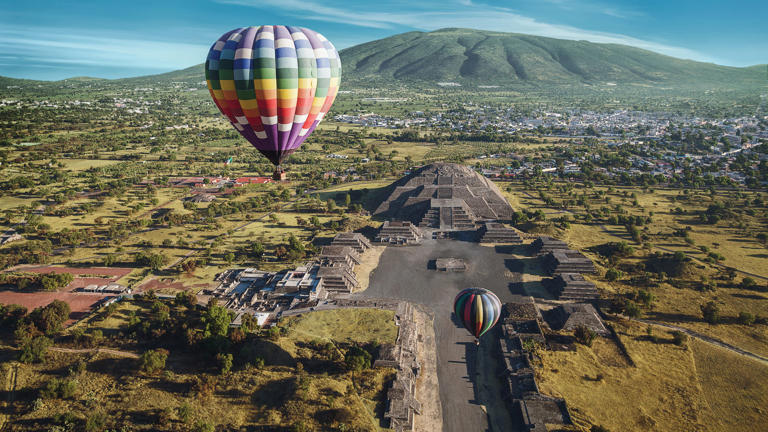
Grupo Frontera head for North American Jugando A Que No Pasa Nada tour: See dates
Fresh off dropping their sophomore album, Grupo Frontera will kick off their next North America tour this summer.
The group announced shows for the Jugando A Que No Pasa Nada Tour Monday including 38 dates across the U.S., Mexico and Canada. The American regional Mexican band known for blending Mexican cumbia and Tejano music released their second album on Friday, also titled "Jugando A Que No Pasa Nada."
The twelve-track record features collaborations with Maluma, Christian Nodal, Nicki Nicole and Morat.
The tour will commence in Las Vegas, and head to Phoenix before doing six shows in their home state of Texas, where the Edinburg-based group emerged.
Meet Edgar Barrera: The Grammy winner writing hits for Shakira, Bad Bunny, Karol G and Grupo Frontera
Need a break? Play the USA TODAY Daily Crossword Puzzle.
Jugando A Que No Pasa Nada tour dates
Tickets for the Jugando A Que No Pasa Nada tour go on sale on Friday, May 17, at 10 a.m. local time at LiveNation.com .
- Fri Aug. 2 — Las Vegas — T-Mobile Arena
- Sat Aug. 3 — Phoenix — Footprint Center
- Sun Aug 4 — El Paso, Texas — Don Haskins Center
- Fri Aug. 9 — Dallas — American Airlines Center
- Sat Aug. 10 — Houston — Toyota Center
- Thurs Aug. 15 — Laredo, Texas — Sames Auto Arena
- Fri Aug. 16 — Austin — Moody Center
- Sat Aug. 17 — San Antonio — Frost Bank Center
- Sun Aug. 18 — Oklahoma City — Paycom Center
- Wed Aug. 21 — Nashville — Bridgestone Arena
- Thurs Aug. 22 — Atlanta — State Farm Arena
- Sat Aug. 24 — Orlando, Fla. — Kia Center
- Sun Aug. 25 — Sunrise, Fla. — Amerant Bank Arena
- Tues Aug. 27 — Greensboro, N.C. — Greensboro Coliseum
- Thurs Aug. 29 — Brooklyn, N.Y. — Barclays Center
- Sat Aug. 31 — Washington, D.C. — Capital One Arena
- Wed Sept. 4 — Montreal, Quebec — Place Bell (Canada)
- Sat Sept. 7 — Chicago — Allstate Arena
- Sun Sept. 8 — Milwaukee — Fiserv Forum
- Wed Sept. 11 — Kansas City, Mo. — T-Mobile Center
- Fri Sept. 13 — Salt Lake City — Maverik Center
- Sun Sept. 15 — Tacoma, Wash. — Tacoma Dome
- Fri Sept. 20 — Los Angeles– Intuit Dome
- Sun Sept. 22 — San Francisco — Chase Center
- Thurs Sept. 26 — Sacramento, Calif. — Golden 1 Center
- Sept. 27 — Fresno, Calif. — Save Mart Center
- Tues Oct. 2 — San Diego — Viejas Arena
- Sat Oct. 5 — Edinburg, Texas — Bert Ogden Arena
- Thurs Oct. 24 — San Luis Potosí — El Domo (Mexico)
- Sat Oct. 26 — León, Guanajuato — Mega Velaria (Mexico)
- Thurs Oct. 31 — Torreón, Coahuila — Coliseo Centenario (Mexico)
- Sat Nov. 2 — Guadalajara, Jalisco — Arena VFG (Mexico)
- Thurs Nov. 7 — Monterrey, Nuevo León — Arena Monterrey (Mexico)
- Sat Nov. 9 — Tijuana, Baja California — Plaza de Toros (Mexico)
- Fri Nov. 15 — Mexico City — Palacio de los Depoartes (Mexico)
- Wed Nov. 20 — Mérida, Yucatan — Foro GNP Seguros (Mexico)
- Fri Nov. 22 — Puebla — Auditorio GNP Seguros (Mexico)
- Sat Nov. 23 — Veracruz — WTC (Mexico)
Grupo Frontera presale code
The presale, which opens Thursday May 12 at 10 a.m., will require a code that varies per venue.
The presale code for the Brooklyn show on August 29 is "GFBK" according to the Barclays Center.
Mexico tightens travel rules on Peruvians in a show of visa diplomacy to slow migration to US
Mexico has begun requiring visas for Peruvians in response to a major influx of migrants from the South American country
BOULEVARD, Calif. -- Julia Paredes believed her move to the United States might be now or never. Mexico was days from requiring visas for Peruvian visitors. If she didn't act quickly, she would have to make a far more perilous, surreptitious journey over land to settle with her sister in Dallas.
Mexico began requiring visas for Peruvians on Monday in response to a major influx of migrants from the South American country, after identical moves for Venezuelans, Ecuadorians and Brazilians. It effectively eliminated the option of flying to a Mexican city near the U.S. border, as Paredes, 45, did just before it was too late.
“I had to treat it as a emergency,” said Paredes, who worked serving lunch to miners in Arequipa, Peru, and borrowed money to fly to Mexico's Tijuana, across from San Diego. Last month smugglers guided her through a remote opening in the border wall to a dirt lot in California, where she and about 100 migrants from around the world shivered over campfires after a morning drizzle and waited for overwhelmed Border Patrol agents to drive them to a station for processing.
Senior U.S. officials, speaking to reporters ahead of a meeting of top diplomats from about 20 countries in the Western hemisphere this week in Guatemala, applauded Mexico's crackdown on air travel from Peru and called visa requirements an important tool to jointly confront illegal migration.
For critics, shutting down air travel only encourages more dangerous choices. Illegal migration by Venezuelans plummeted after Mexico imposed visa requirements in January 2022, but the lull was short-lived. Last year Venezuelans made up nearly two-thirds of the record-high 520,000 migrants who walked through the Darien Gap, the notorious jungle spanning parts of Panama and Colombia.
More than 25,000 Chinese traversed the Darien last year. They generally fly to Ecuador, a country known for few travel restrictions, and cross the U.S. border illegally in San Diego to seek asylum. With an immigration court backlog topping 3 million cases, it takes years to decide such claims, during which time people can obtain work permits and establish roots.
“People are going to come no matter what,” said Miguel Yaranga, 22, who flew from Lima, Peru's capital, to Tijuana and was released by the Border Patrol Sunday at a San Diego bus stop. He had orders to appear in immigration court in New York in February 2025, which puzzled him because he said he told agents he would settle with his sister on the other side of the country, in Bakersfield, California.
Jeremy MacGillivray, deputy chief of the Mexico mission of the U.N.'s International Organization for Migration, predicts that Peruvian migration will drop “at least at the beginning” and bounce back as people shift to walking through the Darien Gap and to Central America and Mexico.
Mexico said last month that it would require visas for Peruvians for the first time since 2012 in response to a “substantial increase” in illegal migration. Large-scale Peruvian migration to Mexico began in 2022; Peruvians were stopped in the country an average of 2,160 times a month from January to March of this year, up from a monthly average of 544 times for all of 2023.
Peruvians also began showing up at the U.S. border in 2022. The U.S. Border Patrol arrested Peruvians an average of about 5,300 times a month last year before falling to a monthly average of 3,400 from January through March, amid a broad immigration crackdown by Mexico.
Peru immediately reciprocated Mexico's visa requirement but changed course after a backlash from the country's tourism industry. Peru noted in its reversal that it is part of a regional economic bloc that includes Mexico, Chile and Colombia.
Adam Isacson, an analyst at the Washington Office on Latin America, said Peru's membership with Mexico in the Pacific Alliance allowed its citizens visa-free travel longer than other countries.
It is unclear if Colombia, also a major source of migration, will be next, but Isacson said Mexican President Andrés Manuel López Obrador is in a “lovefest” with his Colombian counterpart, Gustavo Petro, while his relations with Peru's government are more strained.
Colombians are consistently near the top nationalities of migrants arriving at Tijuana's airport. Many find hotels before a guide takes them to boulder-strewn mountains east of the city, where they cross through openings in the border wall and then walk toward dirt lots that the Border Patrol has identified as waiting stations.
Bryan Ramírez, 25, of Colombia, reached U.S. soil with his girlfriend last month, only two days after leaving Bogota for Cancun, Mexico, and continuing on another flight to Tijuana. He waited alongside others overnight for Border Patrol agents to pick him up as cold rain and high winds whipped over the crackle of high-voltage power lines.
The group waiting near Boulevard, a small, loosely defined rural town, included several Peruvians who said they came for economic opportunity and to escape violence and political crises.
Peruvians can still avoid the Darien jungle by flying to El Salvador, which introduced visa-free travel for them in December in reciprocation for a similar move by Peru's government. But they would still have to travel over land through Mexico, where many are robbed or kidnapped.
Ecuadoreans, who have needed visas to enter Mexico since September 2021, can also fly to El Salvador, but not all do. Oscar Palacios, 42, said he walked through Darien because he couldn't afford to fly.
Palacios, who left his wife and year-old child in Ecuador with plans to support them financially from the U.S., said it took him two weeks to travel from his home near the violent city of Esmeralda to Mexico's border with Guatemala. It then took him two months to cross Mexico because immigration authorities turned him around three times and bused him back to the southern part of the country. He said he was robbed repeatedly.
Palacios finally reached Tijuana and, after three nights in a hotel, crossed into the U.S. A Border Patrol agent spotted him with migrants from Turkey and Brazil and drove them to the dirt lot to wait for a van or bus to take them to a station for processing. Looking back on the journey, Palacios said he would rather cross Darien Gap 100 times than Mexico even once.
Associated Press writer Christopher Sherman in Mexico City contributed.
Top Stories

Teen earns doctoral degree at 17 after defending her dissertation
- May 13, 11:08 PM

4 big takeaways from Day 16 of Trump's hush money trial
- May 13, 5:47 PM

Trump allies, potential VP contenders flock to Manhattan courthouse
- May 13, 5:55 PM

'Locker room talk' defense was Melania Trump's idea, Michael Cohen testifies
- May 13, 6:09 PM

Trump trial: Trump 'approved' hush money repayment deal, Michael Cohen testifies
- May 13, 5:09 PM
ABC News Live
24/7 coverage of breaking news and live events

IMAGES
VIDEO
COMMENTS
Find Discounts on the Best Veracruz Mexico Vacation. Tripadvisor Helps You Spend Less. Tripadvisor Always Has Low Prices on Hotels in Veracruz. Spend Less Here.
Veracruz Travel. Search for Cheap Flights and Save Money on Airfare. KAYAK® - Metasearch Travel Leader. Find the Best Flight Deals and Book with Confidence.
Veracruz City. Mexico, North America. Veracruz, like all great port cities, is an unholy mélange of grime, romance and melted-down cultures. Conceived in 1519 and due to celebrate its 500th birthday in 2019, this is Mexico's oldest European-founded settlement. But usurped by subsequent inland cities, it's neither the nation's most historic ...
See way to experience (1) 7. Aquatico Inbursa Waterpark. 225. Water Parks. Admission tickets from $26. World class waterpark located in the beautiful Port of Veracruz with unique attractions in the entire country. The best waterpark in México. See full details.
Veracruz. Though lacking the breezy ambiance of most Mexican resort towns, Veracruz offers a gritty glimpse into life on the Gulf. Afro-Caribbean rhythms collide with colonial architecture in the lively town plaza, while the Malecon boardwalk stretches along one of the busiest ports in Mexico. Read more.
Map of Veracruz, Mexico. 10. Coatepec [SEE MAP] Nestled in the foothills of the Sierra Madre, the laidback town of Coatepec is a lovely place to visit that is known for one thing and one thing only - coffee. Surrounded by endless farms, coffee plantations, and cloud forests, the town has long produced some of the best coffee in the country ...
Veracruz is a port on the Gulf of Mexico and the largest city in the Mexican state of Veracruz. It lies around 90 km southeast of the state capital Xalapa, 420 km east of Mexico City, and 270 km east of Puebla. Non-stop flights to Veracruz take just 55 minutes from Mexico City, 1 hour 35 minutes from Monterrey, 2 hours 15 minutes from Houston ...
7. Aquatico Inbursa Waterpark. 225. Water Parks. Admission tickets from ₹2,107. World class waterpark located in the beautiful Port of Veracruz with unique attractions in the entire country. The best waterpark in México. See full details. See way to experience (1)
Veracruz de Ignacio de la Llave, simply known as Veracruz, is one of the 32 states that make up the United Mexican States. Its most populous city is the port of Veracruz. In pre-Hispanic times, the Olmec, Huasteca and Totonaca civilizations inhabited it. The first Spanish contact was in 1518, through an exploration led by Juan de Grijalva on ...
Okay, let's get this out of the way: it's true that Veracruz is a rainier and more humid part of Mexico. Hugging the Gulf of Mexico, Veracruz is very much exposed to the elements, with the rainy season lasting longer than in, say, the Yucatan. And if you're unlucky, you may have a rainy day or two even during the dry season.
By Bus - You can travel to Veracruz on a luxury bus from Mexico City - the trip takes around 5.5 hours. Veracruz is a major bus hub for the eastern Gulf coast of Mexico and you'll be able to travel efficiently by bus around Mexico's entire Gulf region from here if you want to. For detailed information about bus transportation read the ...
2. Explore the historic San Juan de Ulúa. San Juan de Ulúa is a large complex consisting of fortresses, prisons, and a former palace on an island in the Gulf of Mexico overlooking Veracruz's seaport. This fort stands tall after experiencing attacks by pirates, the English, French, Mexican, and American natives.
Immediately north of Veracruz lie the oldest Spanish settlements in Mexico, and the sites of the indigenous towns which became Cortes' first allies. A short stretch of toll highway takes you as far as Cardel, a busy little town and handy place to change buses or visit the bank, at the junction of the coastal highway and the road up to Xalapa .
The chief seaport on the east coast of Mexico prides itself with beautiful beaches and commemorative festivities, but there's a whole lot more to see for the average tourist. Check out the 15 best things you can do while gracing the city of Veracruz, Mexico. Relive Classic Mesoamerica in El Tajín. Inspired By Maps / Shutterstock.com
Veracruz is one of the most representative states of Mexico for its natural, social, historical and cultural wealth. It is considered the door of Mexico to the world, since the Spanish arrived there to form the Mexican nation and today it is the most important commercial sea port in the country. With a splendid and generous nature, in which the ...
While there, visit the Nuestra Señora de la Candelaria church, dedicated to the town's patron saint (celebrated on February 2nd, Día de la Candelaria ), take a boat tour on the Papaloapan river, and visit the Casa Museo Agustin Lara, dedicated to one of Mexico's most beloved singer-songwriters. 10 of 10.
TRAVEL GUIDE. Veracruz State is a long, slim crescent bordering the Gulf of Mexico, about five hours east of Mexico City. The port city of Veracruz is a big draw to the region and the logical ...
Often said to be one of the friendliest cities in Mexico, busy Veracruz is a tropical port town brimming with history. This is Mexico's first port, the place where Herman Cortez and the Spanish Conquistadors first landed in 1519 and the oldest post-Columbian city in North America. Palm trees line the streets and main plaza, which comes alive ...
Veracruz is the perfect family vacation destination. Families can visit parks, encounter the best beaches in Veracruz, and experience other Veracruz Mexico tourist attractions for children and teens of all ages. Take a look at these Mexico guidebooks to research some of the best places to visit in Veracruz: Lonely Planet Mexico (Travel Guide)
1. El Tajín ruins. The ruins of El Tajín. El Tajín is one of the most interesting Aztec ruins in Mexico, and definitely one of the best places to visit in Veracruz. It's a site full of unique structures that can't be seen anywhere else in Mexico.
Enjoy a Cup of Coffee. The Veracruz region extends inland well into Mexico's highlands — home to the country's most prized coffee plantations. It comes without saying coffee shops in Veracruz serve the finest coffee in the country. Los Portales and La Parroquia are unquestionably the most popular coffee spots in the city of Veracruz, but ...
VERACRUZ Veracruz de Ignacio de la Llave, también llamado simplemente Veracruz, es uno de los 32 estados que forman los Estados Unidos Mexicanos. Su ciudad más poblada es el puerto de Veracruz. En la época prehispánica habitaron las civilizaciones Olmeca, Huasteca y Totonaca. El primer contacto español fue en 1518, por una exploración capitaneada por … Leer más «VERACRUZ»
Veracruz City boasts a moderate crime rating of 57.61, with some locals concerned that crime has been on the rise in the last three years. To get more of an understanding of the numbers, we can compare this to crime ratings in other Mexican and US cities. Merida is the safest city in Mexico and it has a crime rating of just 25.16.
Mariners planning travel to Mexico should check for U.S. maritime advisories and alerts, ... Violent crime and gang activity occur with increasing frequency in Veracruz, particularly in the center and south near Cordoba and Coatzacoalcos. While most gang-related violence is targeted, violence perpetrated by criminal organizations can affect ...
The UNESCO-designated archaeological site of Palenque in Chiapas, the southernmost state in Mexico, is a definite must-visit for any true archaeology and history lover. The city is thought to have ...
Sat Nov. 23 — Veracruz — WTC (Mexico) Grupo Frontera presale code The presale, which opens Thursday May 12 at 10 a.m., will require a code that varies per venue.
More than 25,000 Chinese traversed the Darien last year. They generally fly to Ecuador, a country known for few travel restrictions, and cross the U.S. border illegally in San Diego to seek asylum.